|
|

|
Wednesday 25 April 2018
Getting Serious........Feeling more settled at Phaya Inn, I'm gradually getting on top of things but that doesn’t mean we can get an early start today. There's some general housekeeping to do as Katoon decides to do some washing with this tour closing in on a second full week. Even so I had expected to achieve a mid morning start but female prerogative prevails and I have to wait until well past 11am to make a start and the probable exposure to the hottest time of day. So far it’s as if I’ve been picking off the rear guard without seriously annoying the main column so it’s time to get serious and head for a site which is not only the most important tourist site in Lamphun but probably on this entire tour.
Wat Phrathat Haripunchai........Wat Phrathat Haripunchai is a first class royal temple, one of only fifteen outside Bangkok. The temple's earliest origins were in 897 when the then king of Hariphunchai is said to have built a stupa (now the central stupa) to house a hair of the Buddha. The present compound, founded by Hariphunchai King Athitayarai, dates from 1044. The temple was first rebuilt in 1443 by King Tilokaraja of Lanna kingdom Chiang Mai. The temple's pyramid-shaped Chedi Suwanna was built in 1418. In the 1930s temple renovations were made by the northern Thai monk Khru Ba Sriwichai.
Any thoughts that a visit to this temple would be brief soon disappear when I acquire a site map. It’s a starting point but to make sense of it all and understand the historical significance of each building on this site I need to visit each in turn. For this purpose I use the following list: - 1) The Grand Assembly Hall (Viharn Luang)
2) Tripitaka Tower (Hor-Dhamma)
3) Sinaeru Mountain
4) South-west Corner (Moom Horadee). City Naval Hall (Sadue Mueang Viharn). Geruda-riding (Rahu Song Khrut)
5) The Buddha Hall
6) The Hall of Phrabat Si Roi (Buddha’s footprints)
7) Wat Phrathat Hariphunchai Museum
8) The Hall of Prachao Tanjai
9) The Hall of Prachao Panton
10) The Hall of Phra Gluea or Prachao Dang Dang
11) Pathumvadee Pagoda
12) The Hall of Phra Sai Yas
13) Detention Centre for Krubachao Sriwichai the Buddist Saint of Lanna
14) The Phrathat Replica (The pagoda containing Buddha’s relics)
15) Payap Corner (The Hall of Phra Attaros)
16) The Hall of Phra Kajjai (Lanna Prachao Pum Paya)
17) Issan (North East) Corner. Chiang Yan Pagoda
18) The Hall of Phra Lawo
19) Phrabarommatat Hariphunchai
20) Kang Sadarn Tower
21) Pang Saiyas (The reclining Buddha)
22) Phrachao Thongthip
Attempting to visit each site is a tall order at the hottest time of day. What seems to concern me most is the obligation to take off shoes at almost every location when the temperature under foot is hot enough to fry an egg. Unlike most other temples where I can zip in and out of the car, here there’s not that luxury and to make sure I see it through, Katoon has the grin of a Cheshire Cat and the heart of a Parade Sergeant. After about an hour and a half I’m rewarded with a bowl of noodles. The next site should offer some respite.
Getting Serious........Feeling more settled at Phaya Inn, I'm gradually getting on top of things but that doesn’t mean we can get an early start today. There's some general housekeeping to do as Katoon decides to do some washing with this tour closing in on a second full week. Even so I had expected to achieve a mid morning start but female prerogative prevails and I have to wait until well past 11am to make a start and the probable exposure to the hottest time of day. So far it’s as if I’ve been picking off the rear guard without seriously annoying the main column so it’s time to get serious and head for a site which is not only the most important tourist site in Lamphun but probably on this entire tour.
Wat Phrathat Haripunchai........Wat Phrathat Haripunchai is a first class royal temple, one of only fifteen outside Bangkok. The temple's earliest origins were in 897 when the then king of Hariphunchai is said to have built a stupa (now the central stupa) to house a hair of the Buddha. The present compound, founded by Hariphunchai King Athitayarai, dates from 1044. The temple was first rebuilt in 1443 by King Tilokaraja of Lanna kingdom Chiang Mai. The temple's pyramid-shaped Chedi Suwanna was built in 1418. In the 1930s temple renovations were made by the northern Thai monk Khru Ba Sriwichai.
Any thoughts that a visit to this temple would be brief soon disappear when I acquire a site map. It’s a starting point but to make sense of it all and understand the historical significance of each building on this site I need to visit each in turn. For this purpose I use the following list: - 1) The Grand Assembly Hall (Viharn Luang)
2) Tripitaka Tower (Hor-Dhamma)
3) Sinaeru Mountain
4) South-west Corner (Moom Horadee). City Naval Hall (Sadue Mueang Viharn). Geruda-riding (Rahu Song Khrut)
5) The Buddha Hall
6) The Hall of Phrabat Si Roi (Buddha’s footprints)
7) Wat Phrathat Hariphunchai Museum
8) The Hall of Prachao Tanjai
9) The Hall of Prachao Panton
10) The Hall of Phra Gluea or Prachao Dang Dang
11) Pathumvadee Pagoda
12) The Hall of Phra Sai Yas
13) Detention Centre for Krubachao Sriwichai the Buddist Saint of Lanna
14) The Phrathat Replica (The pagoda containing Buddha’s relics)
15) Payap Corner (The Hall of Phra Attaros)
16) The Hall of Phra Kajjai (Lanna Prachao Pum Paya)
17) Issan (North East) Corner. Chiang Yan Pagoda
18) The Hall of Phra Lawo
19) Phrabarommatat Hariphunchai
20) Kang Sadarn Tower
21) Pang Saiyas (The reclining Buddha)
22) Phrachao Thongthip
Attempting to visit each site is a tall order at the hottest time of day. What seems to concern me most is the obligation to take off shoes at almost every location when the temperature under foot is hot enough to fry an egg. Unlike most other temples where I can zip in and out of the car, here there’s not that luxury and to make sure I see it through, Katoon has the grin of a Cheshire Cat and the heart of a Parade Sergeant. After about an hour and a half I’m rewarded with a bowl of noodles. The next site should offer some respite.
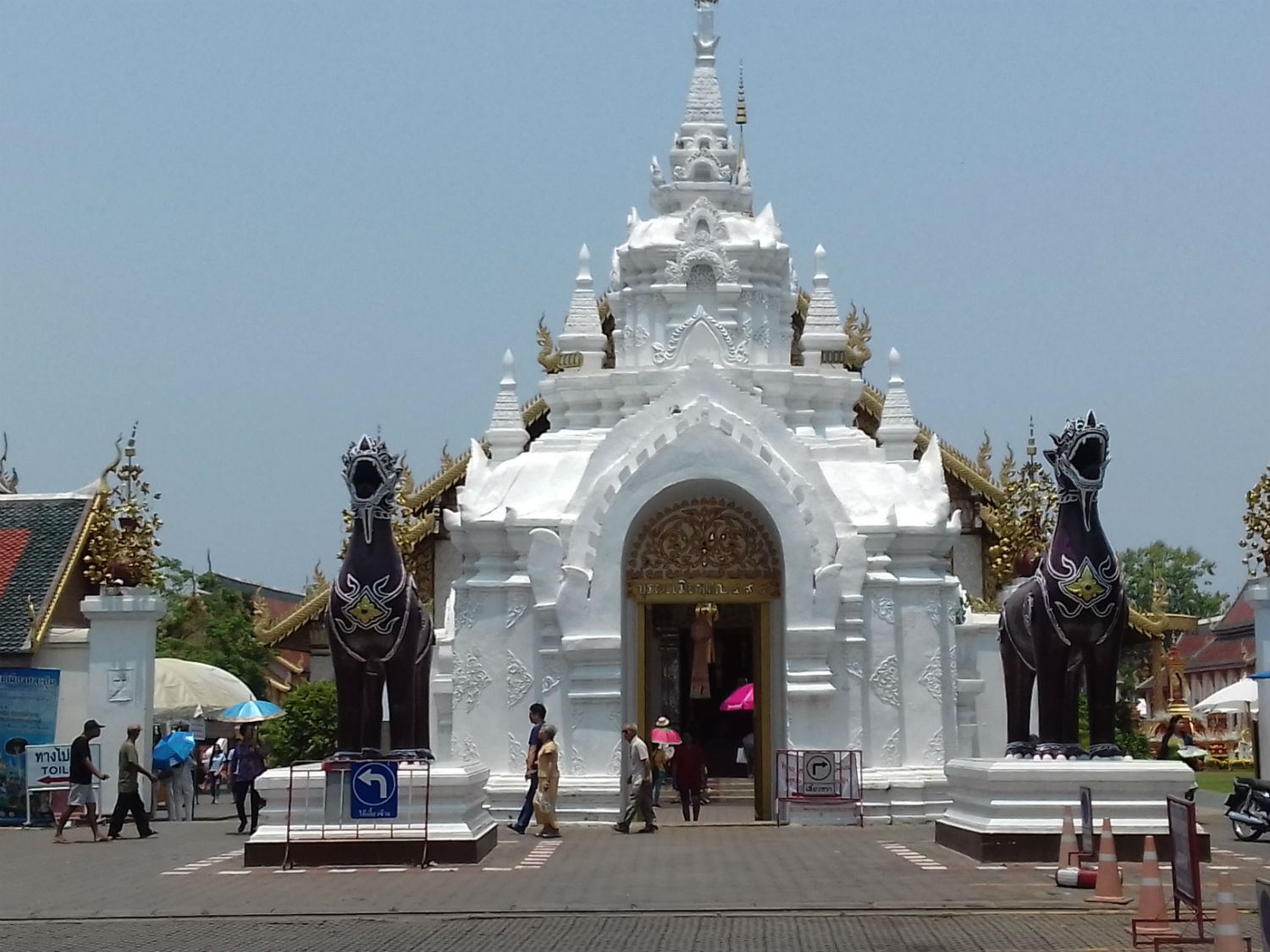
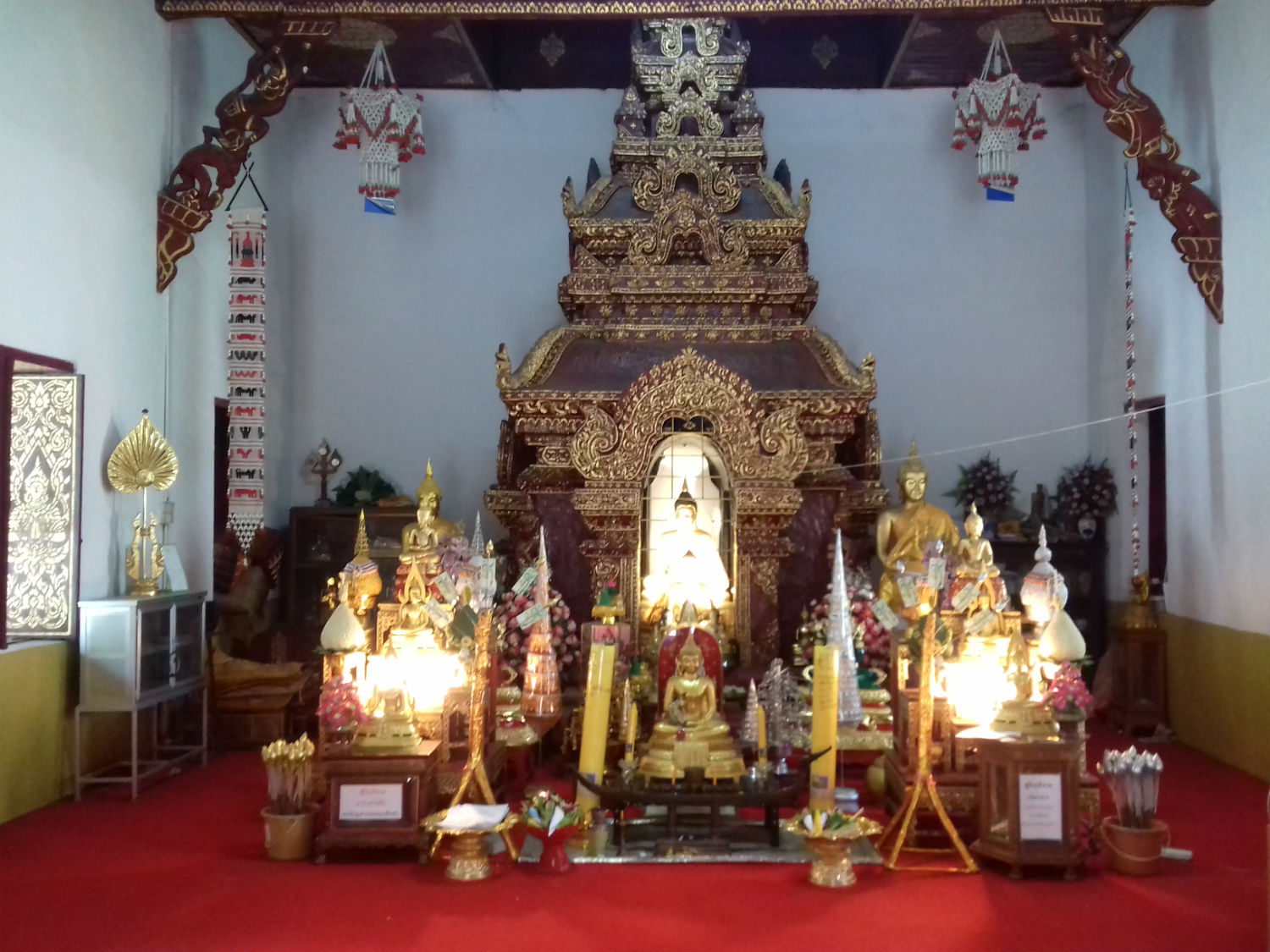
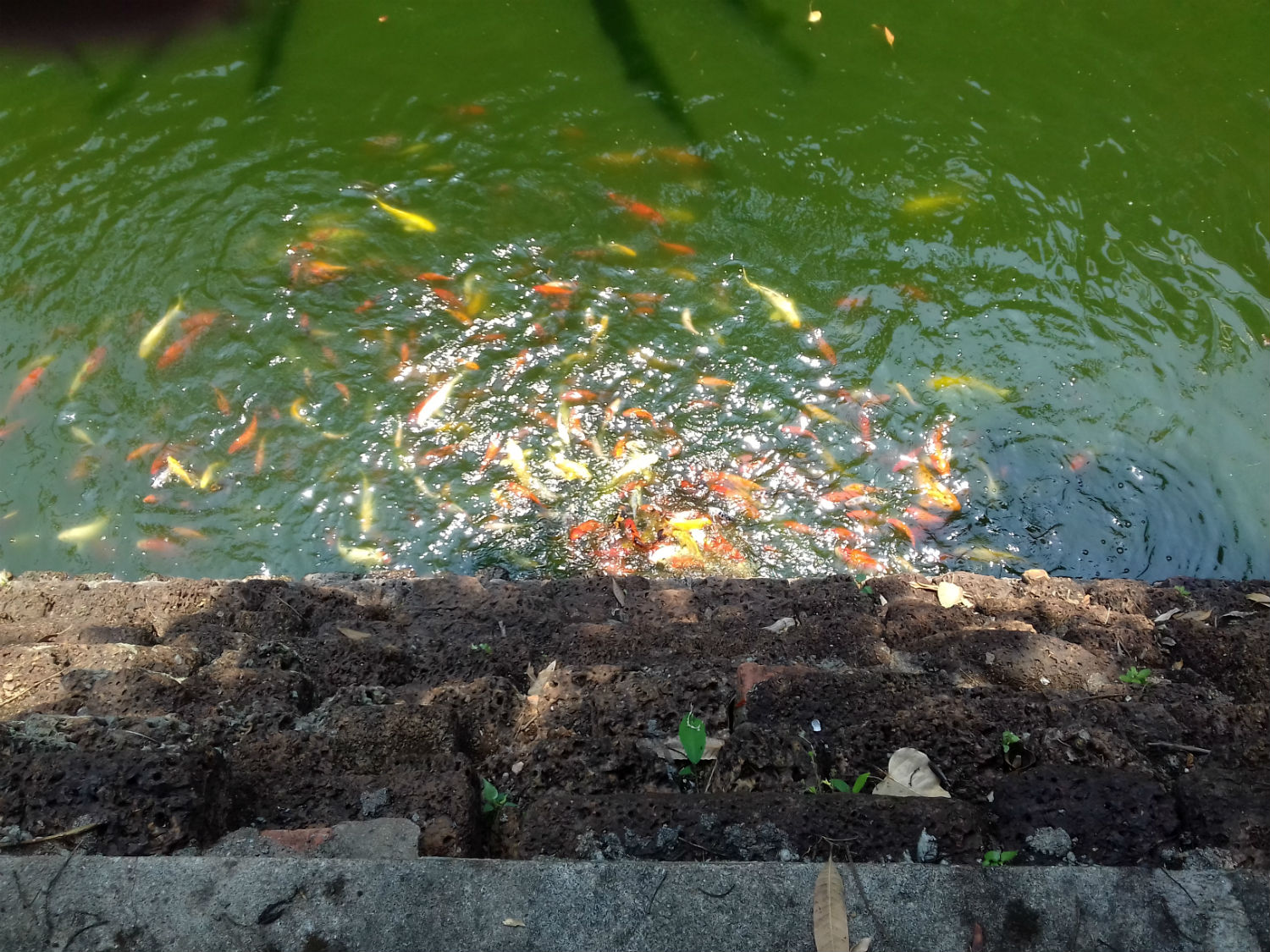
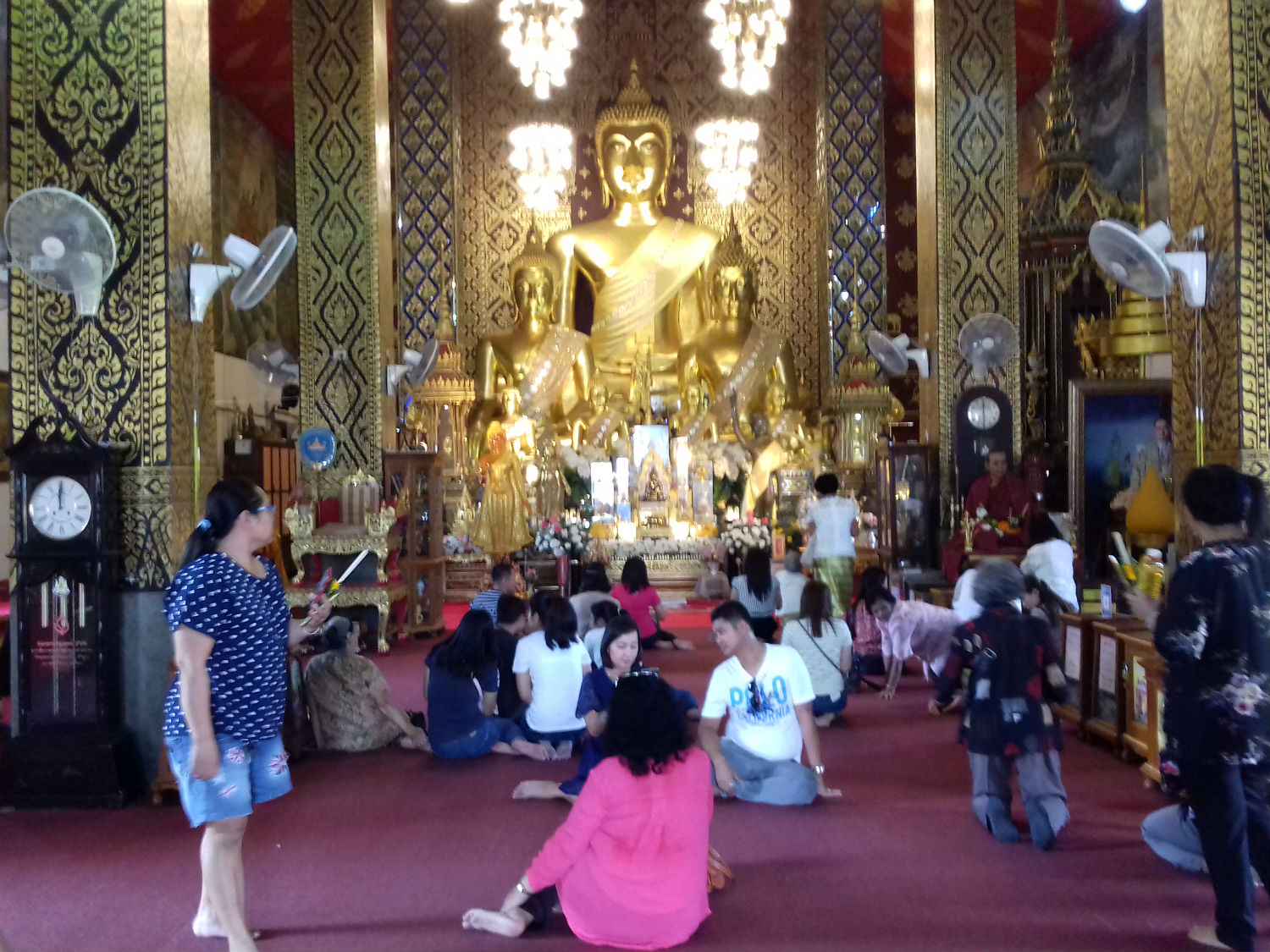
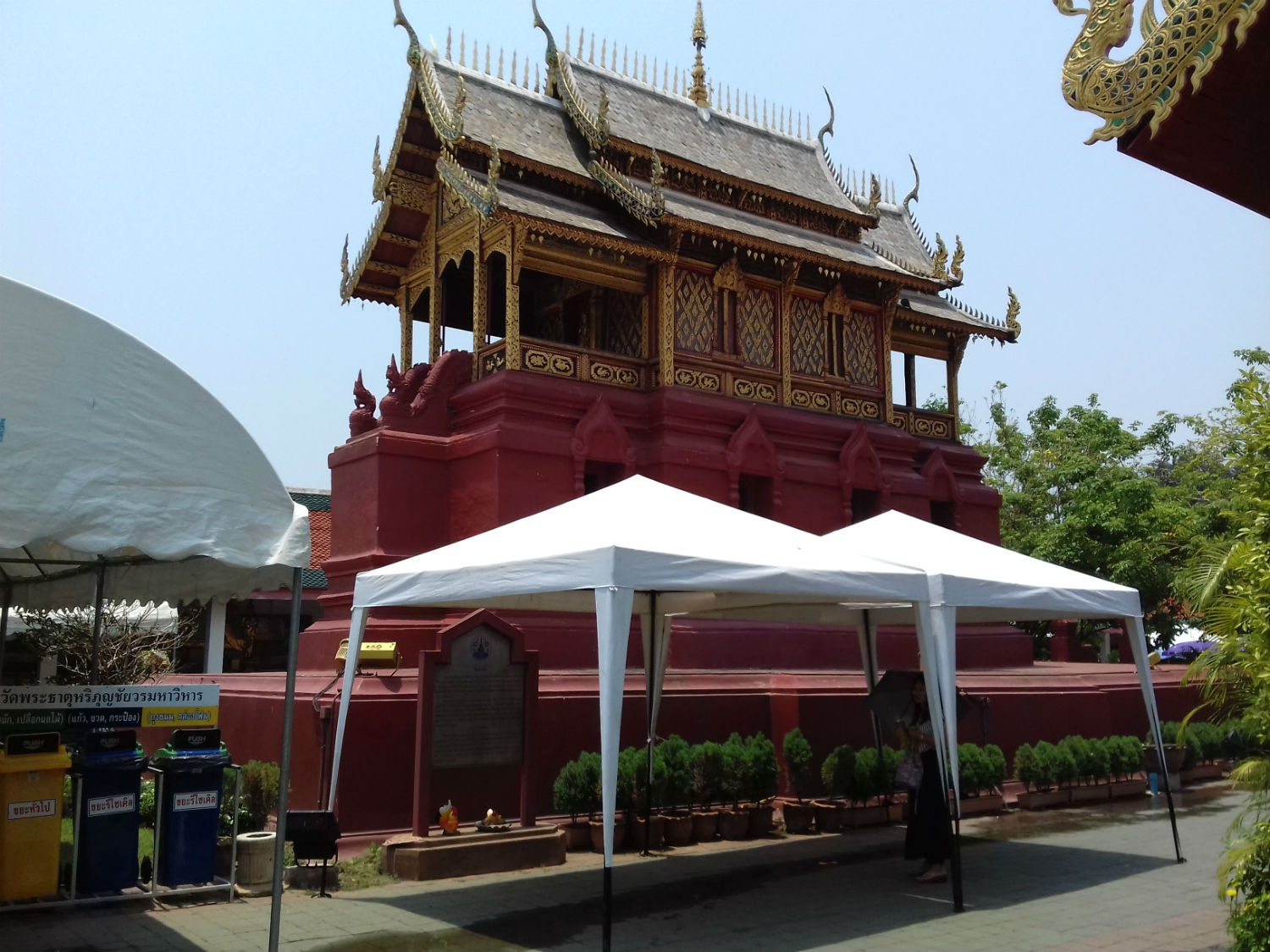
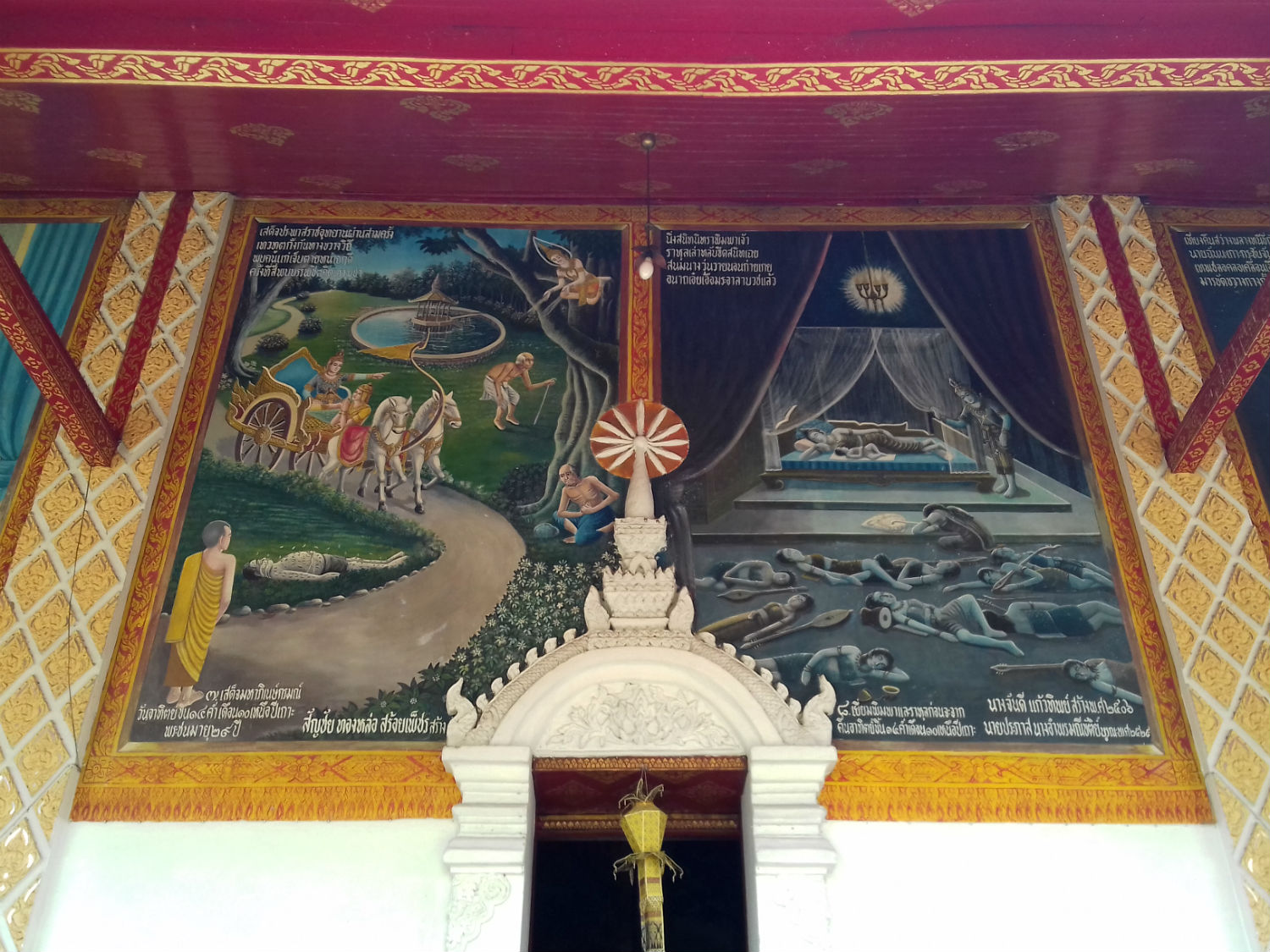
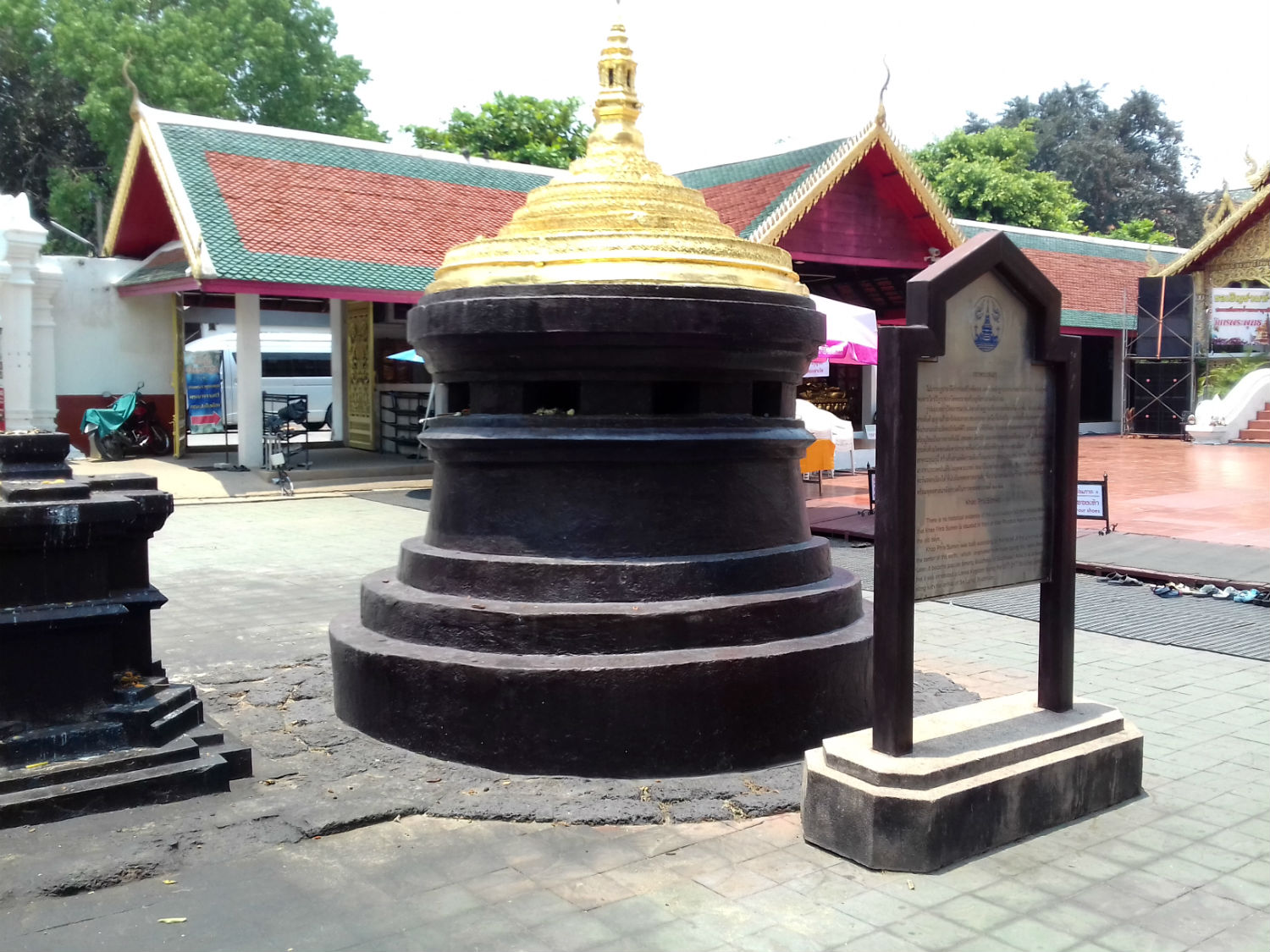
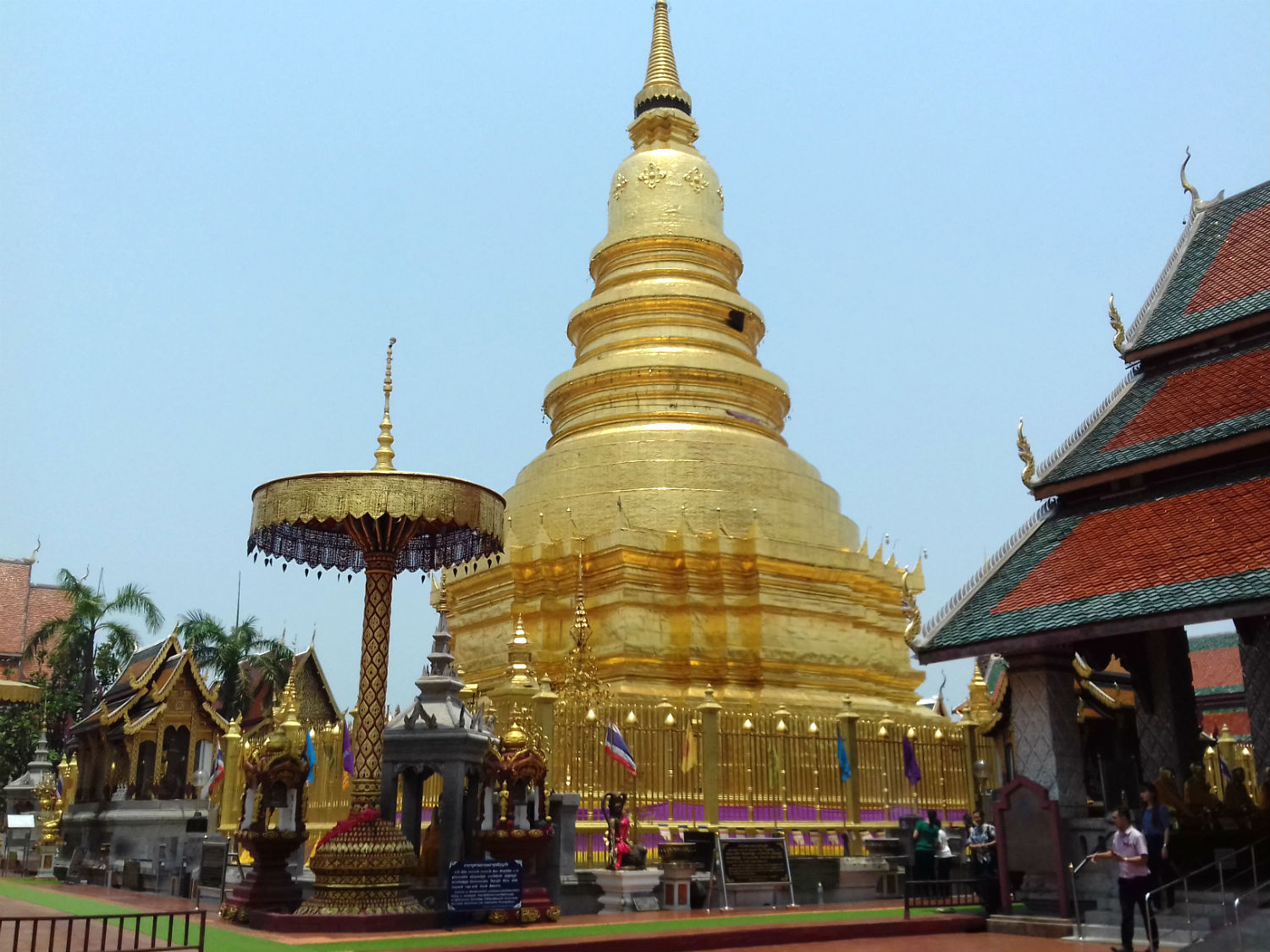
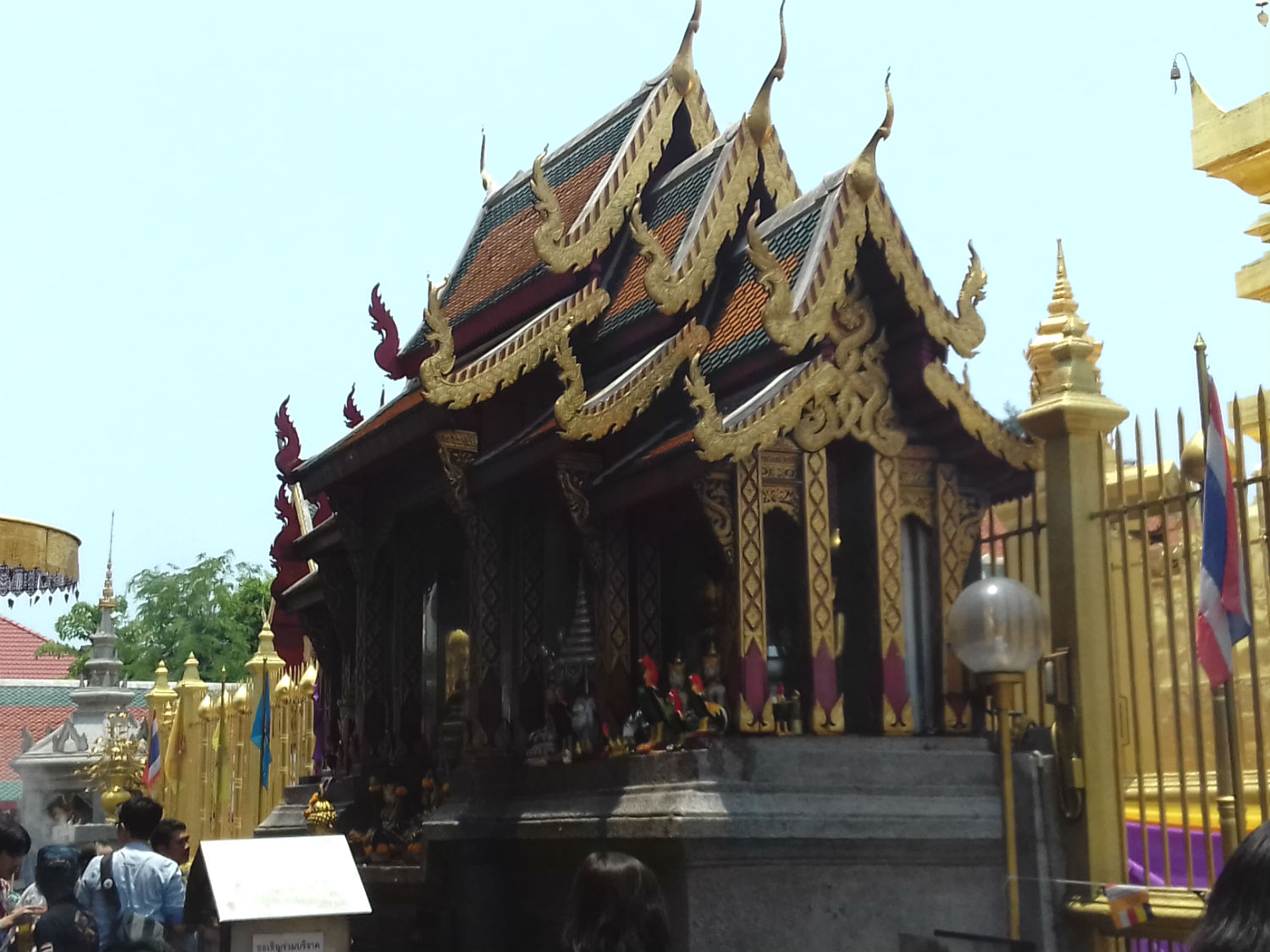
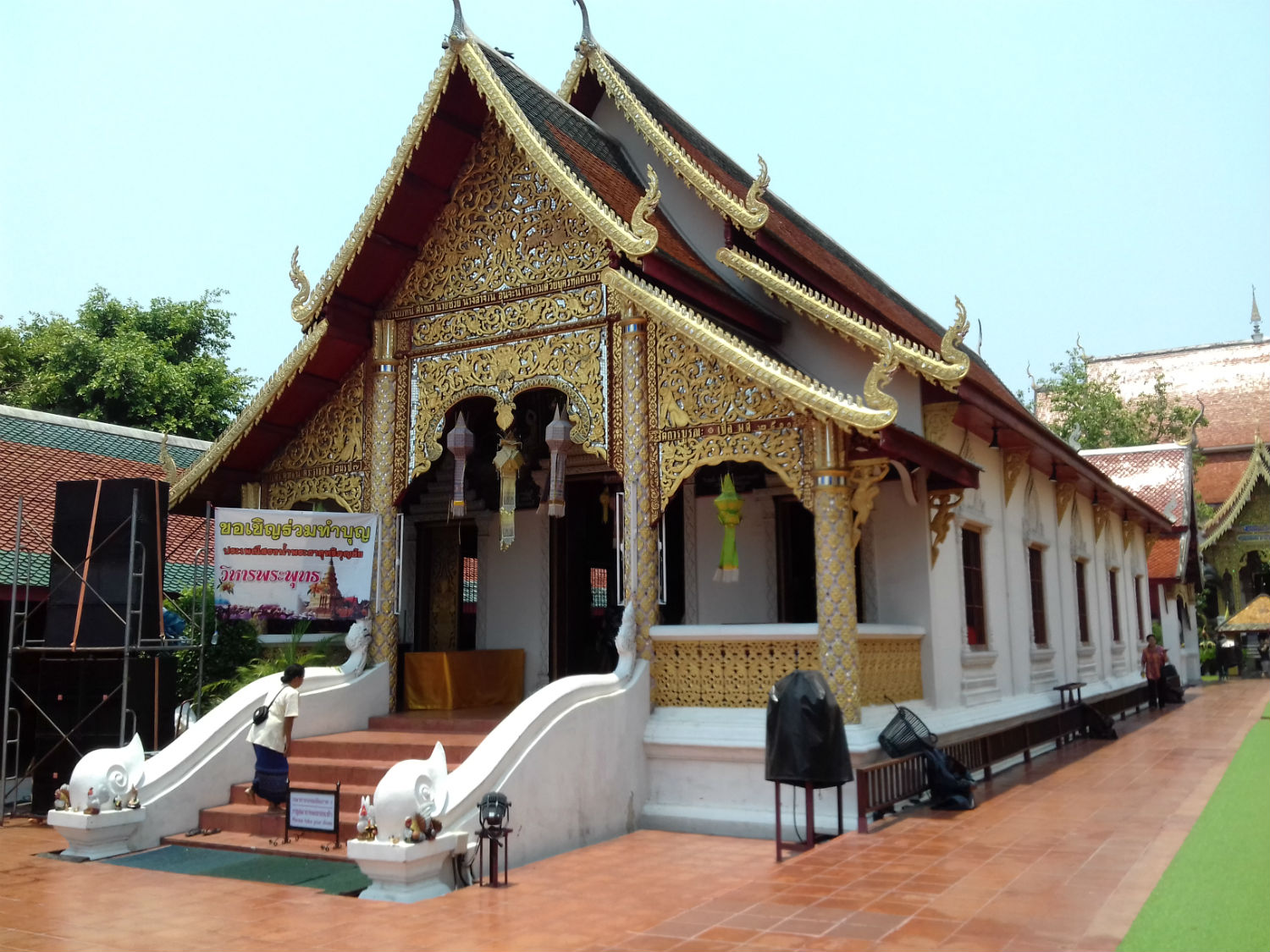
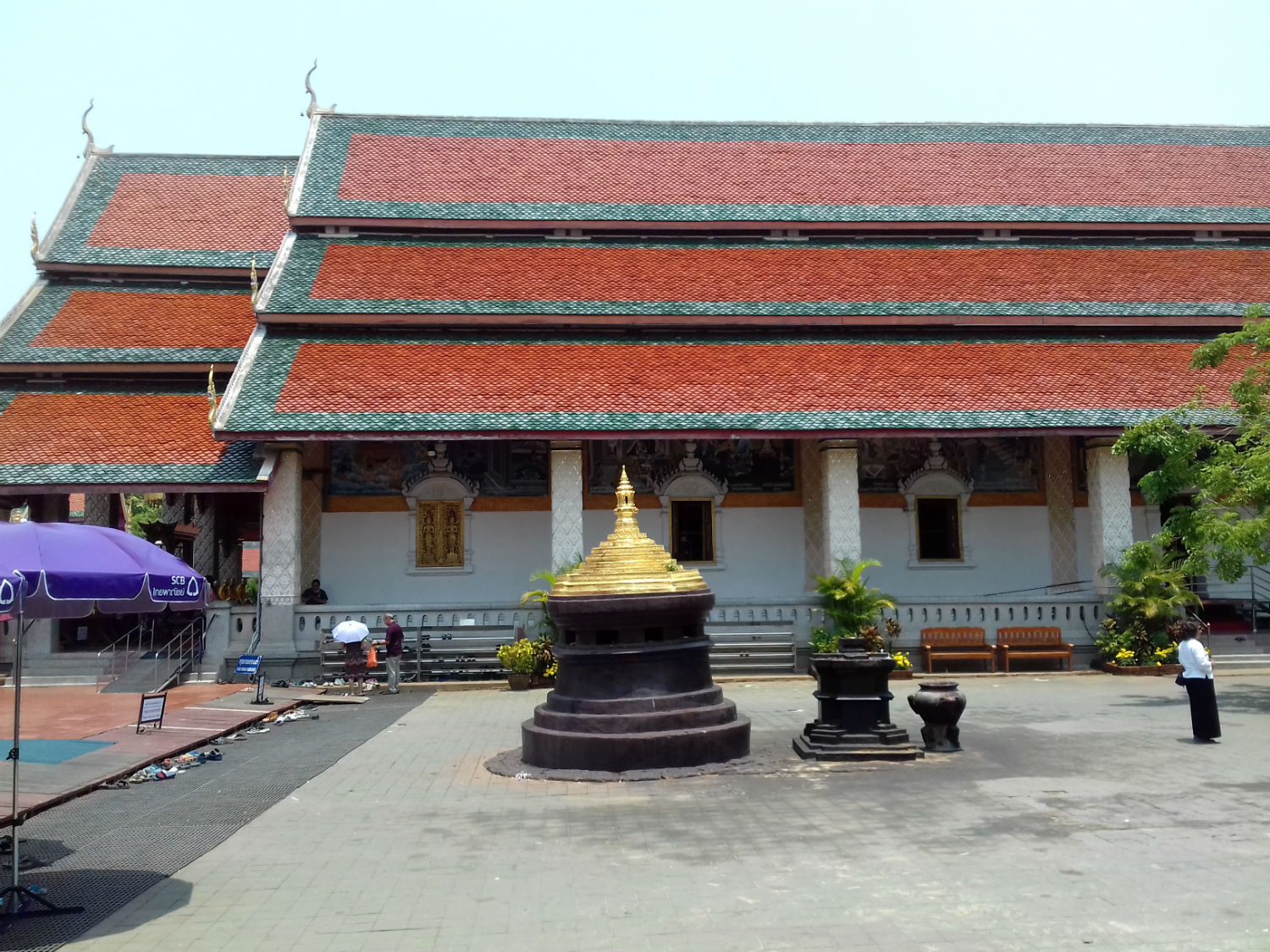
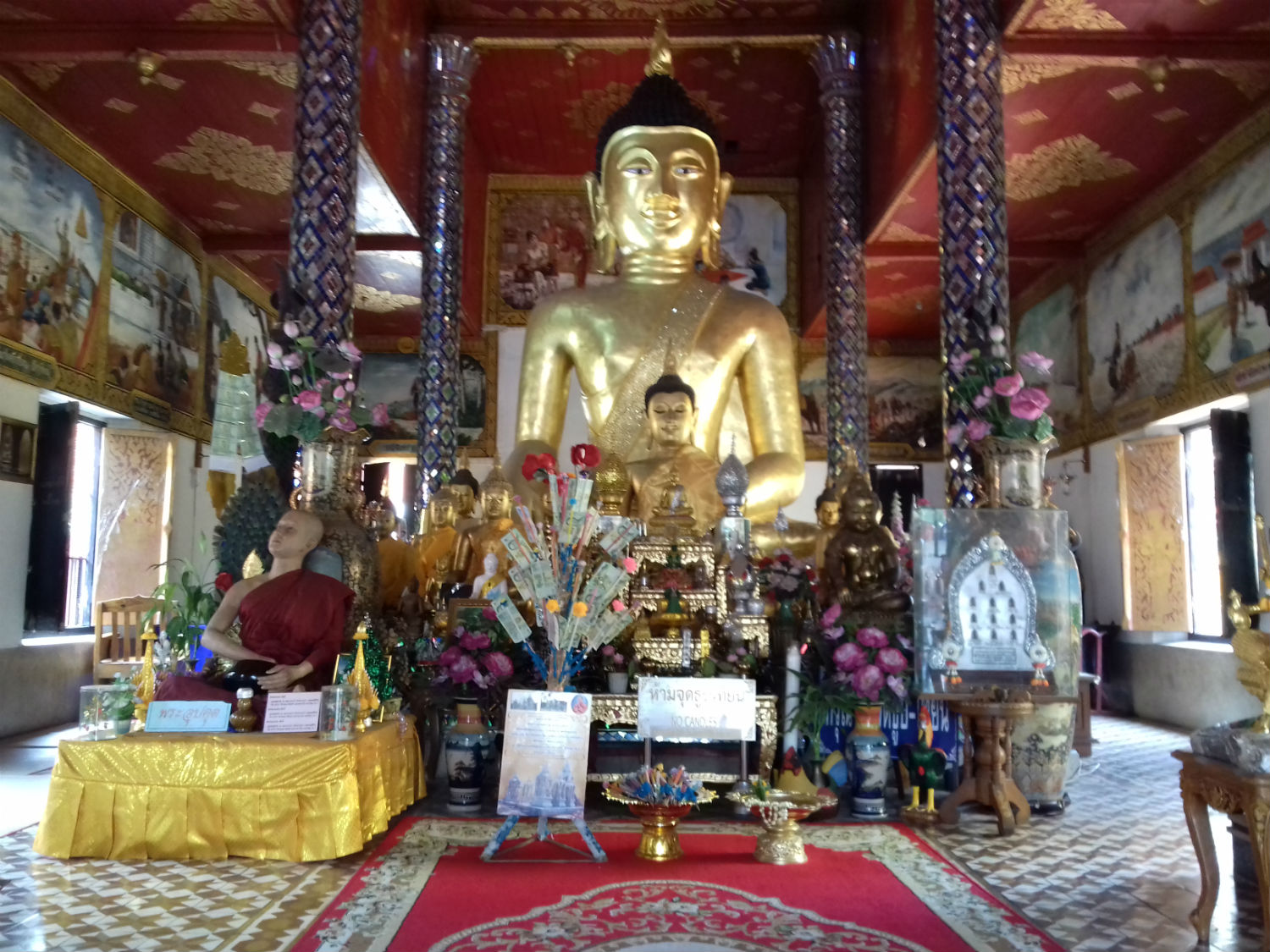
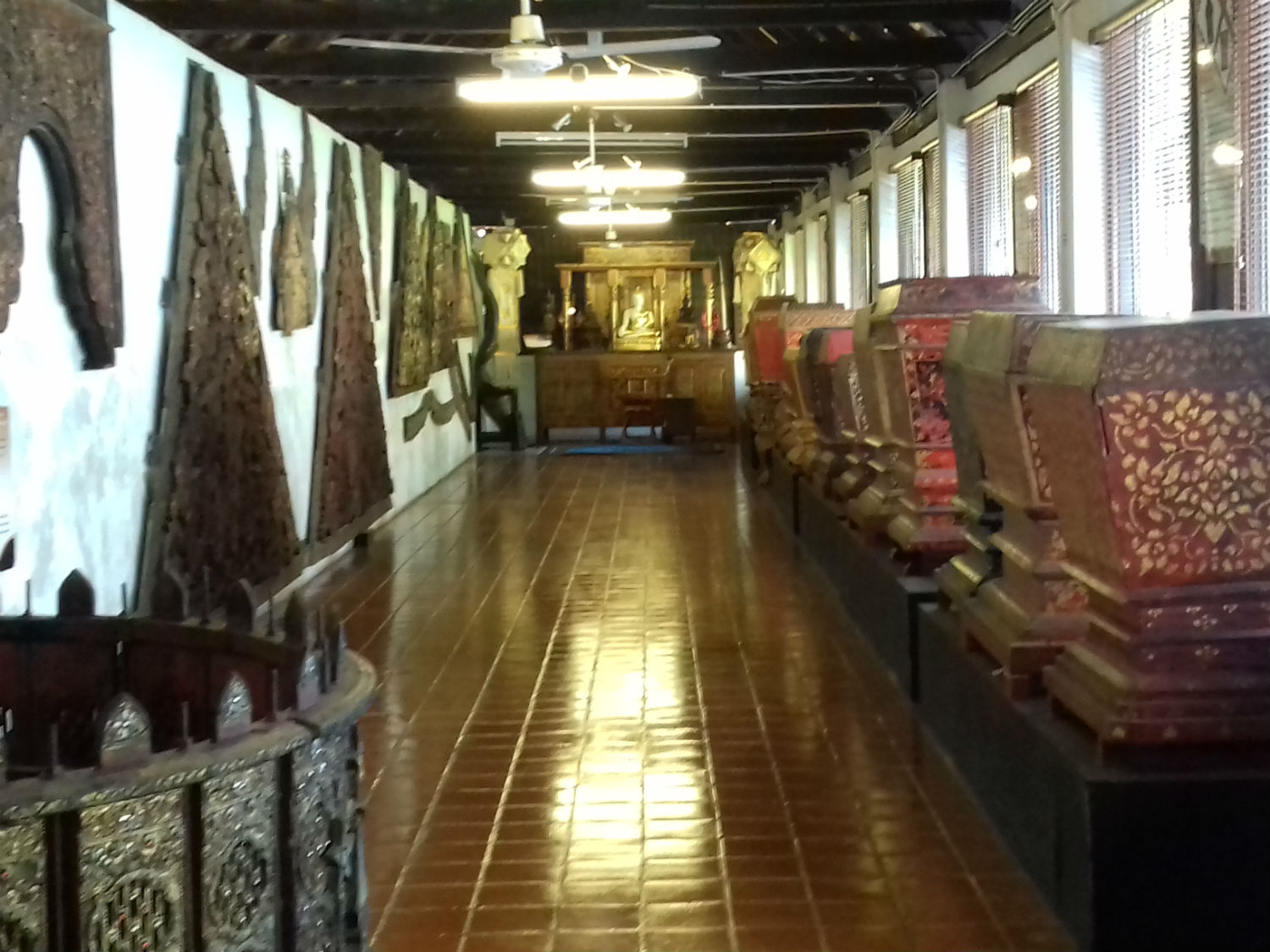
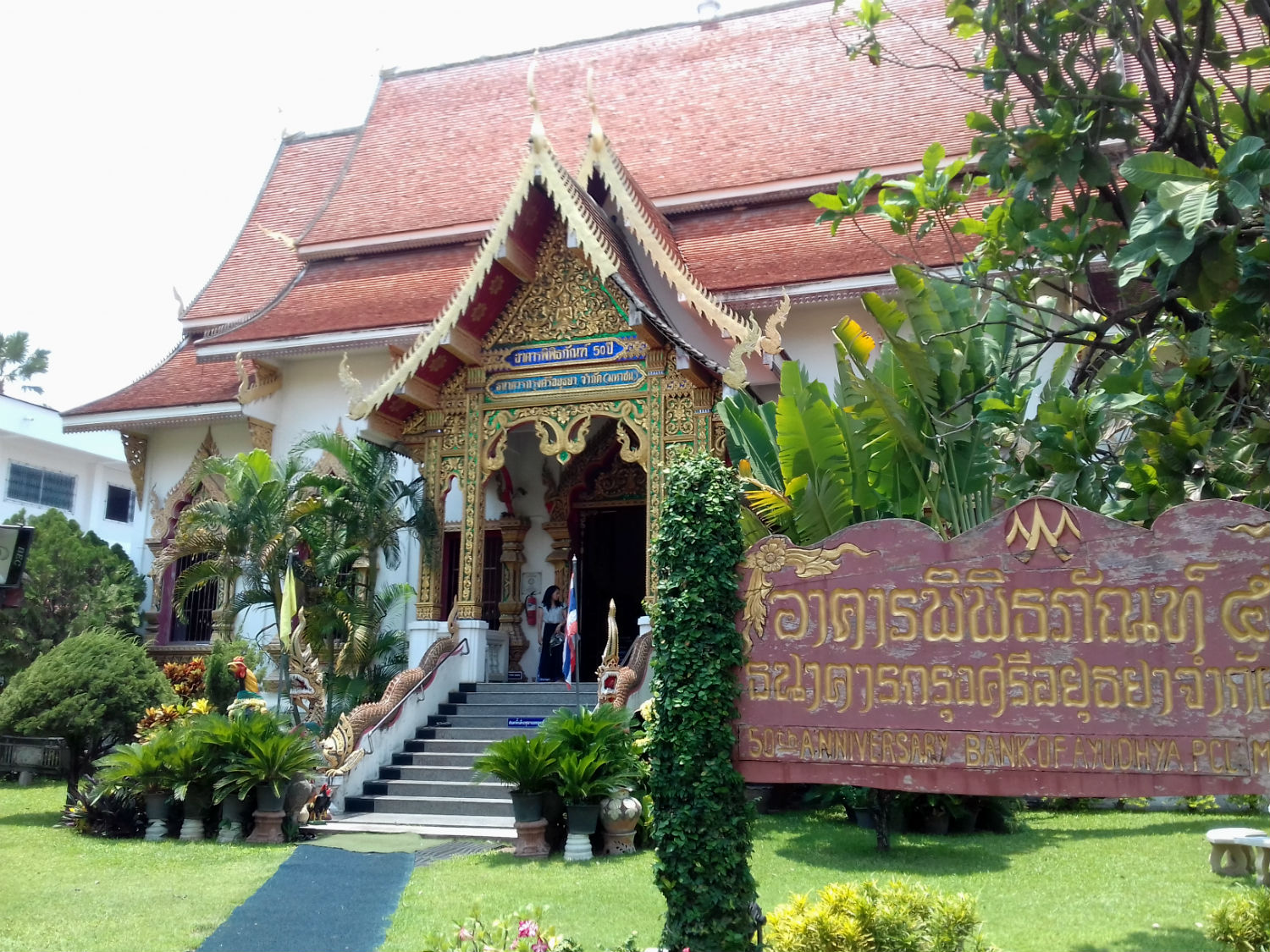
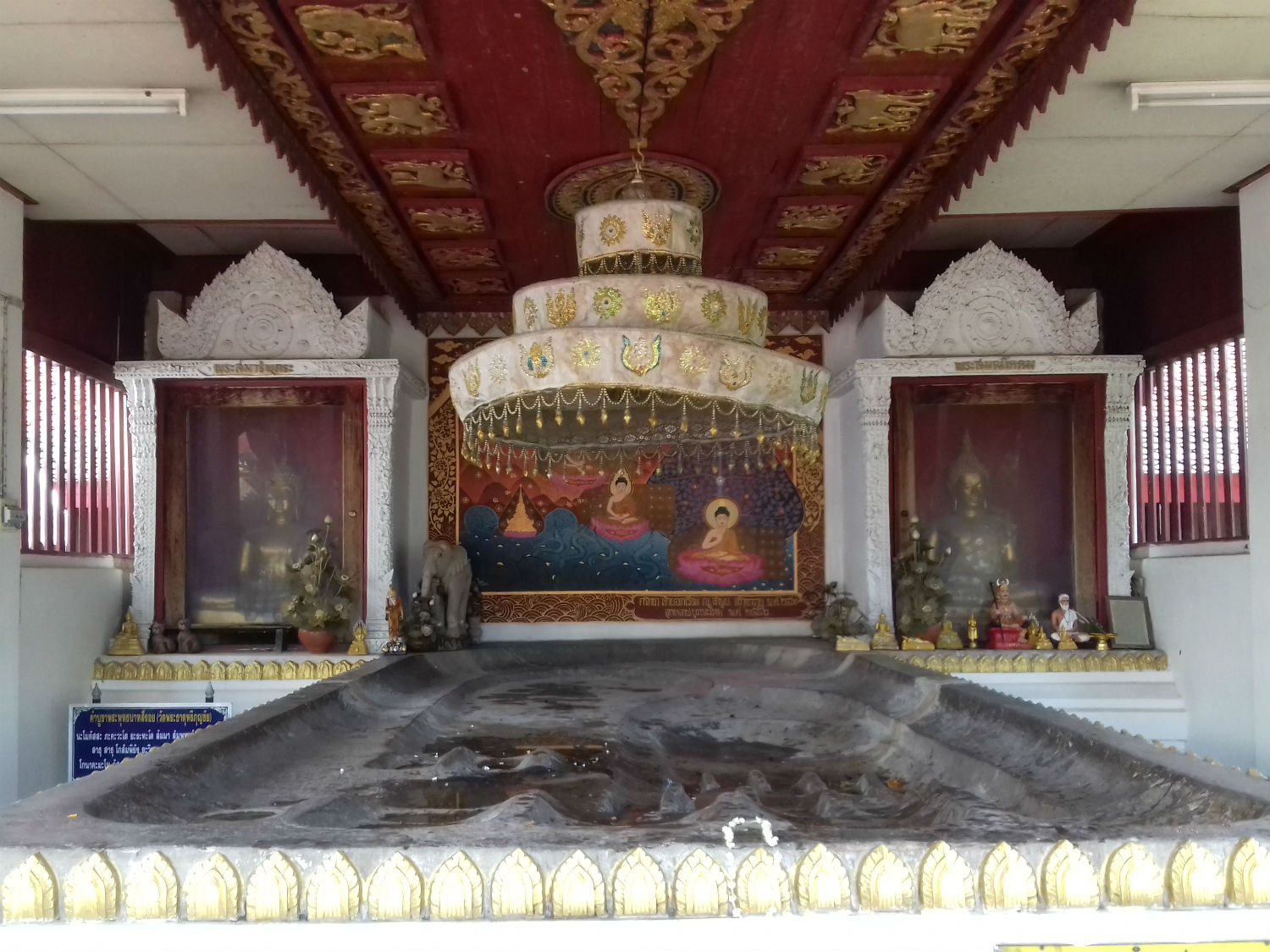
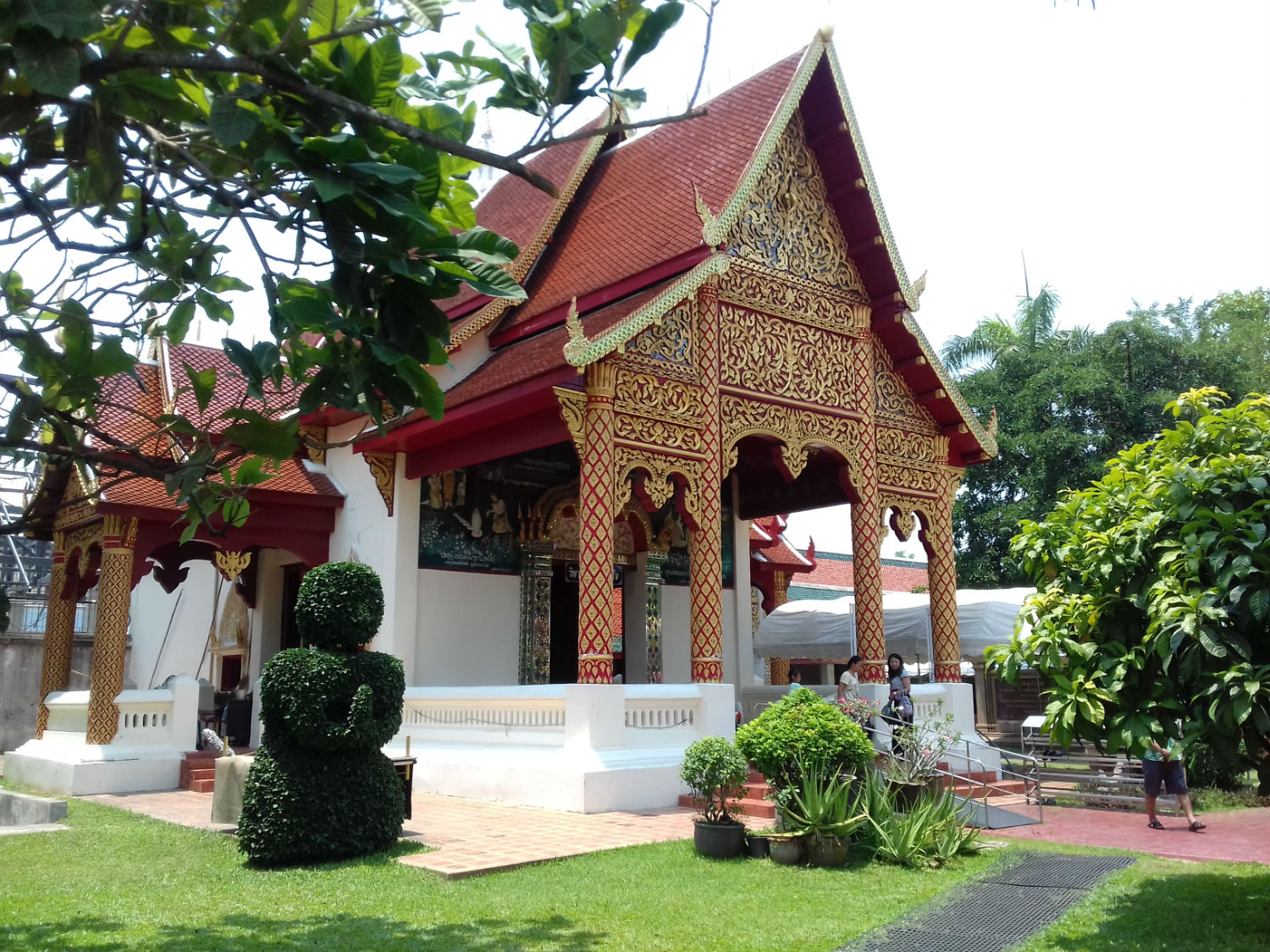
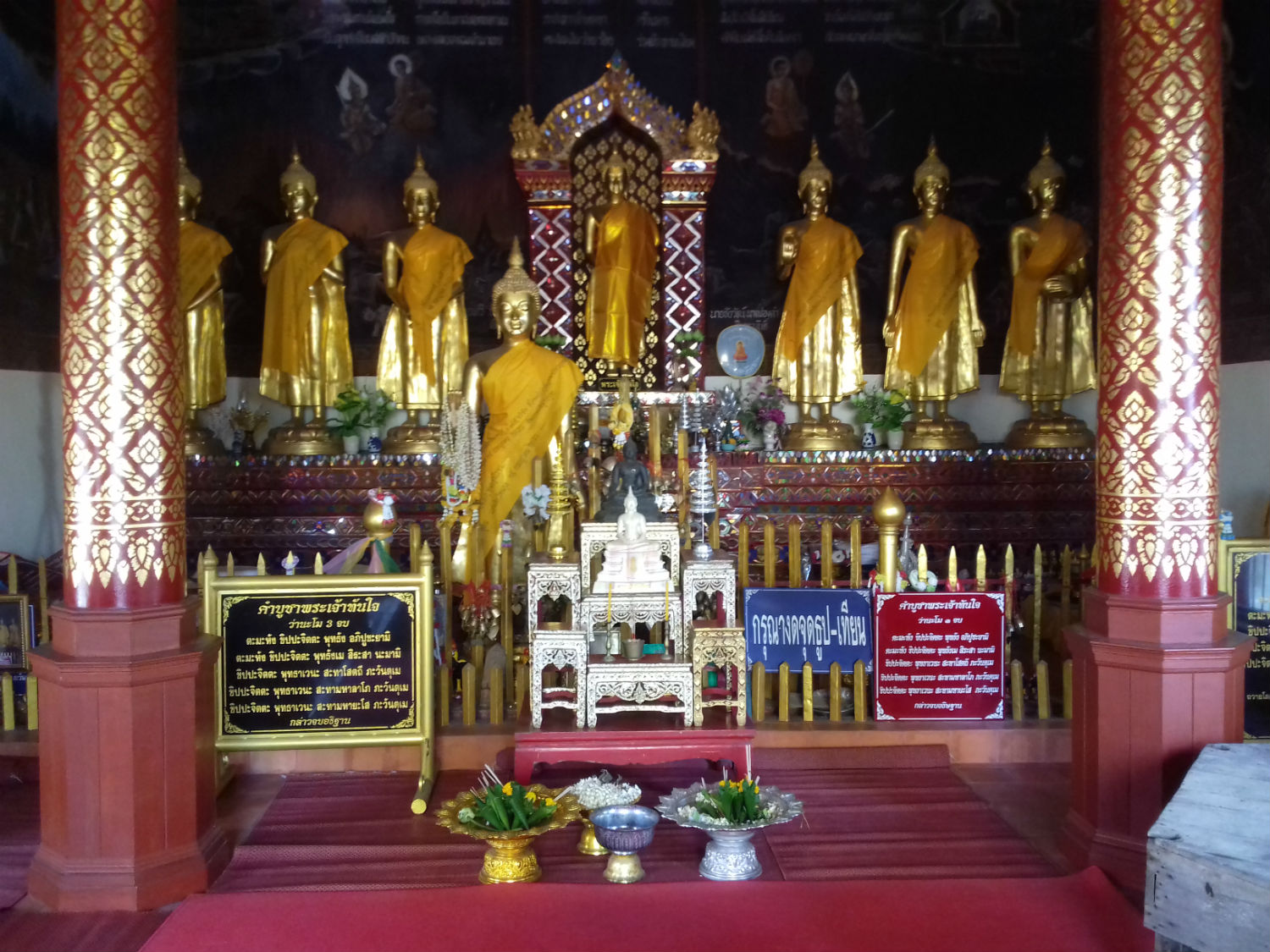
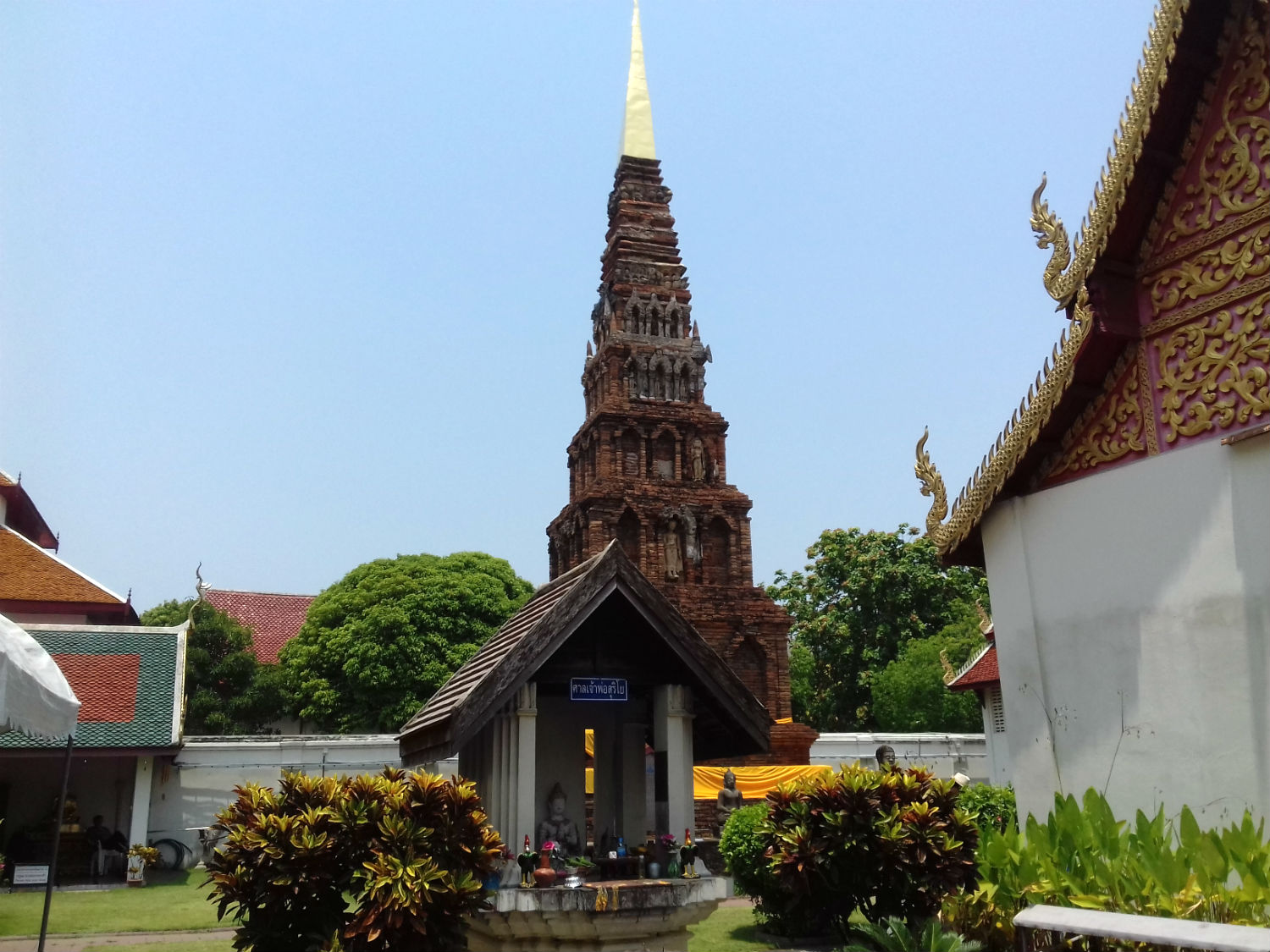
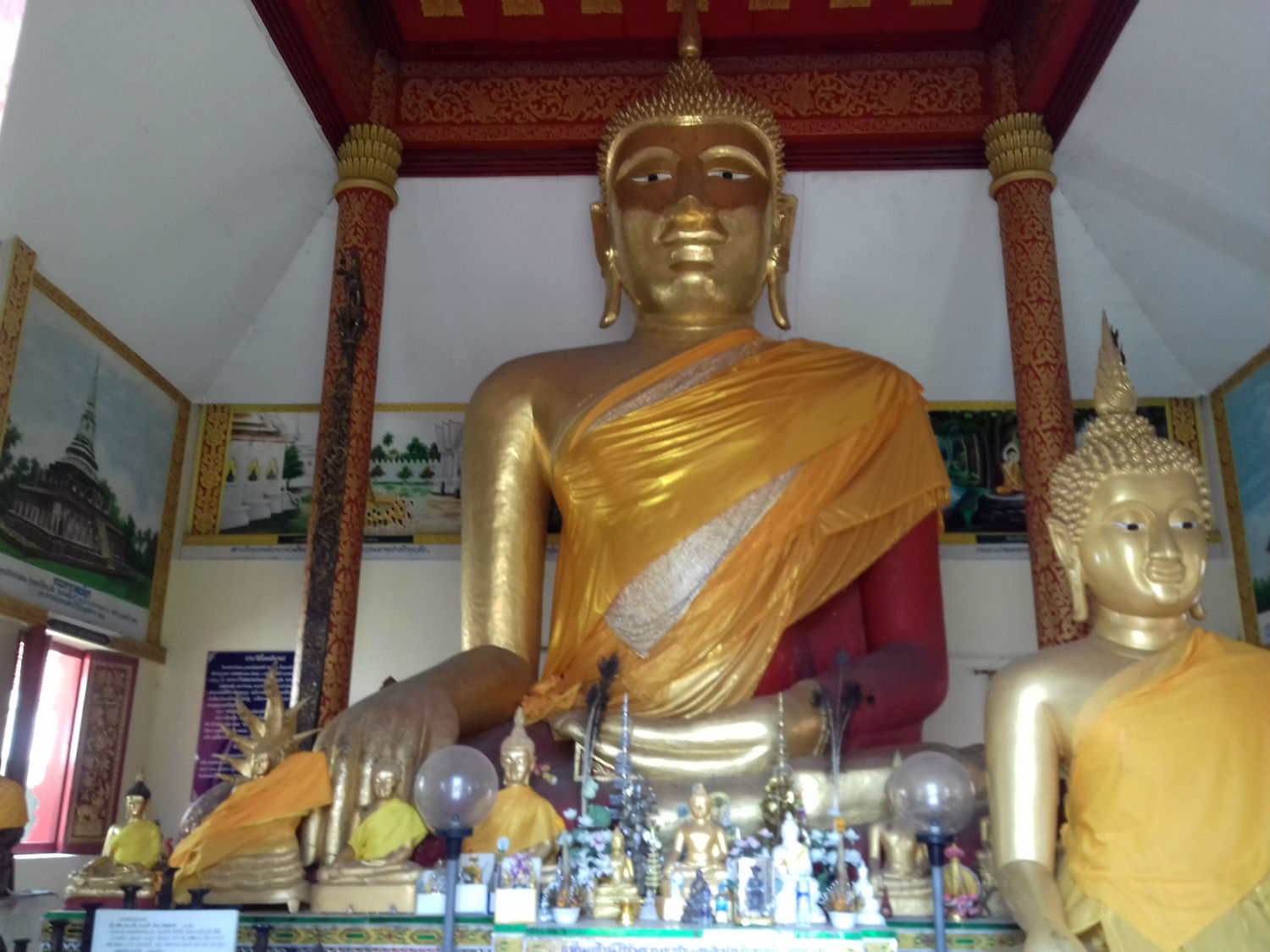
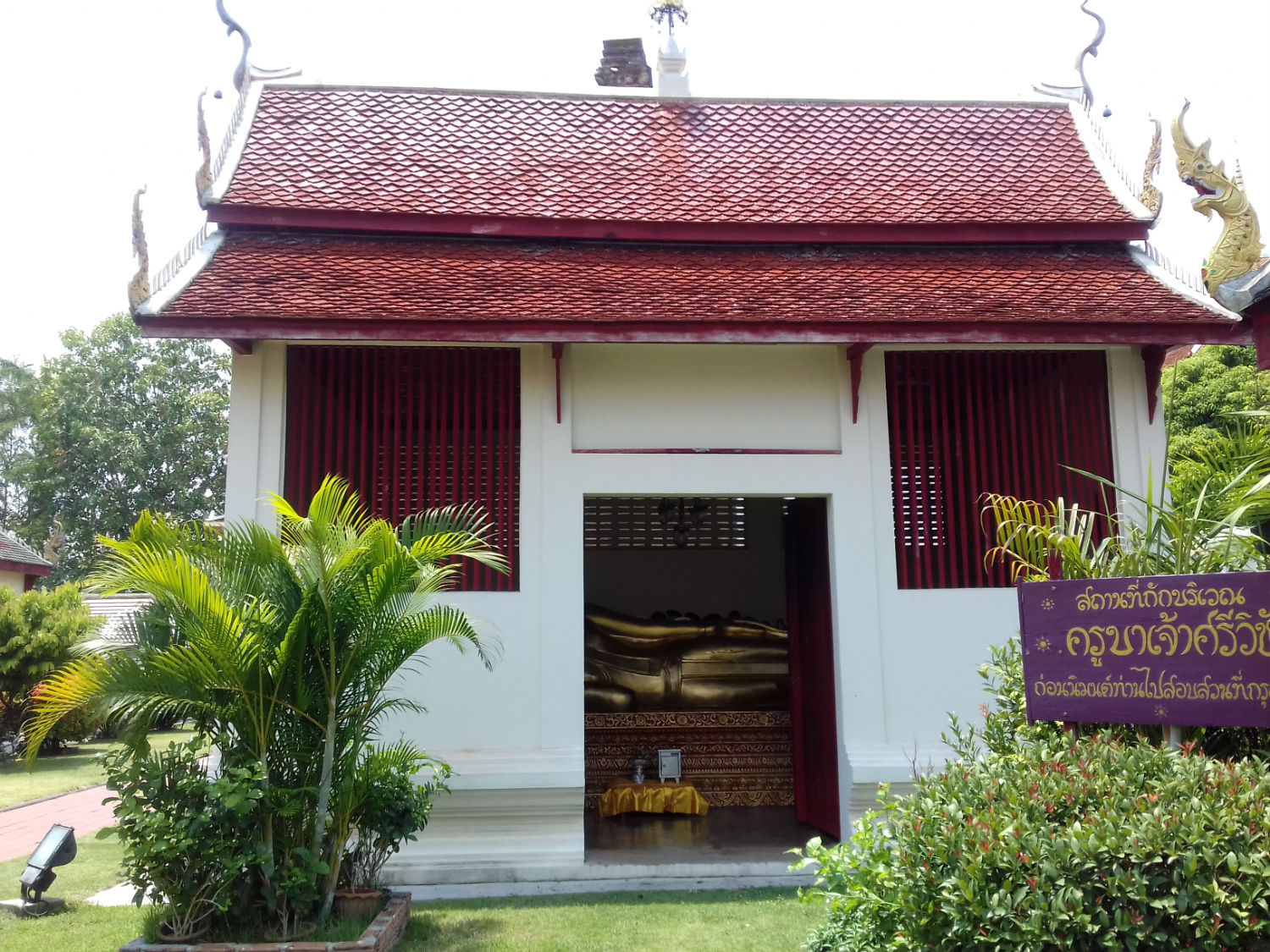
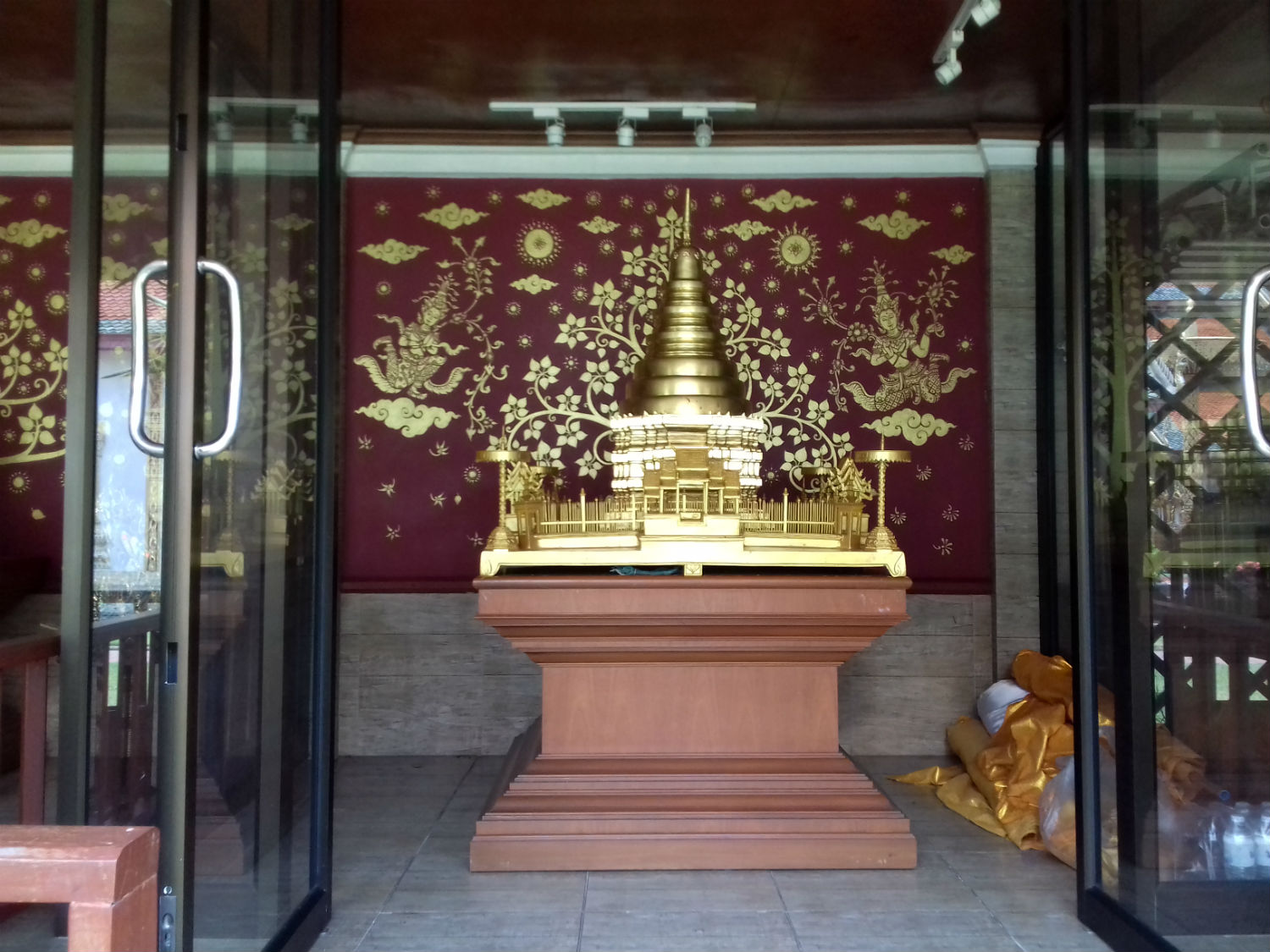
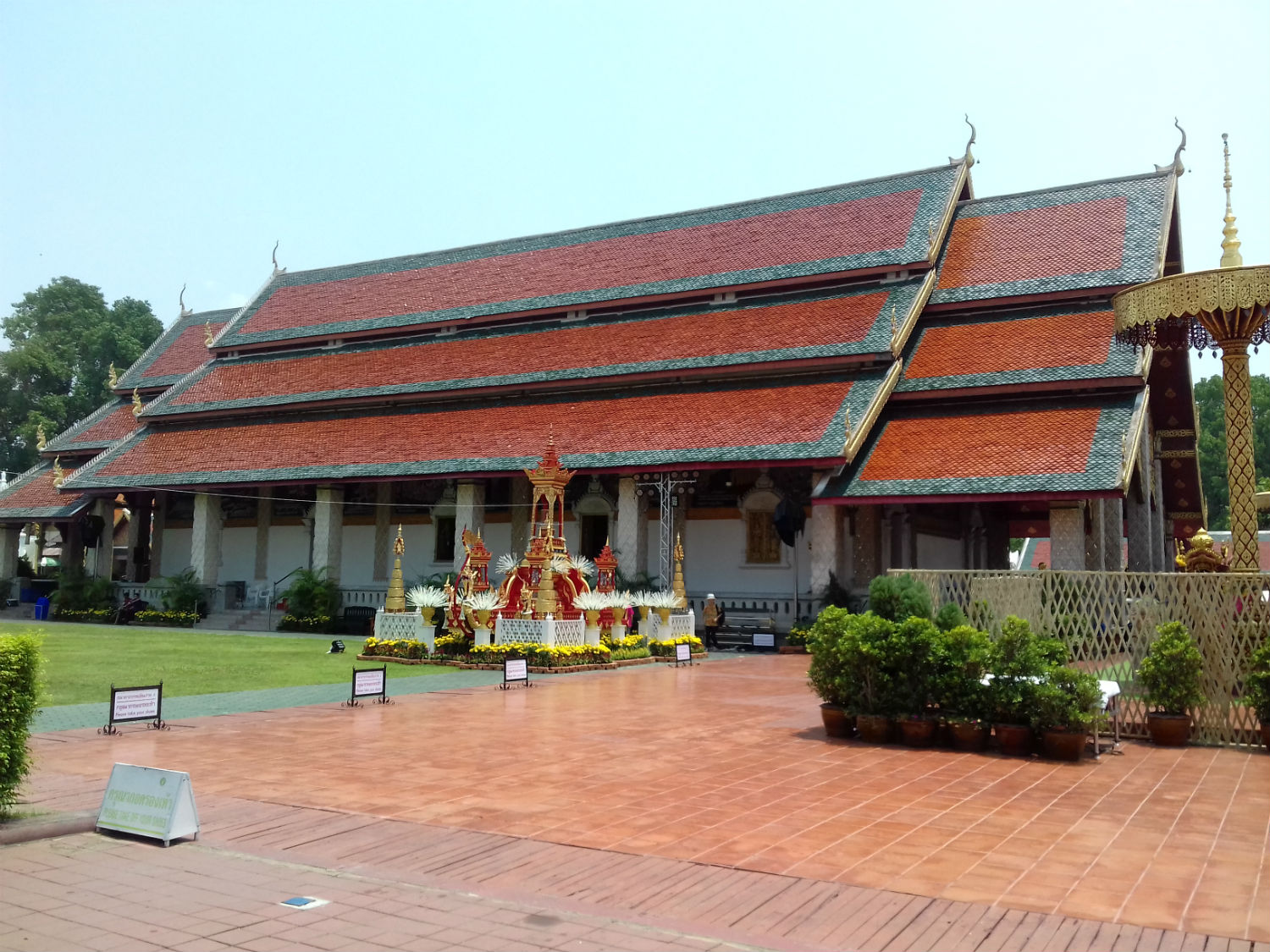
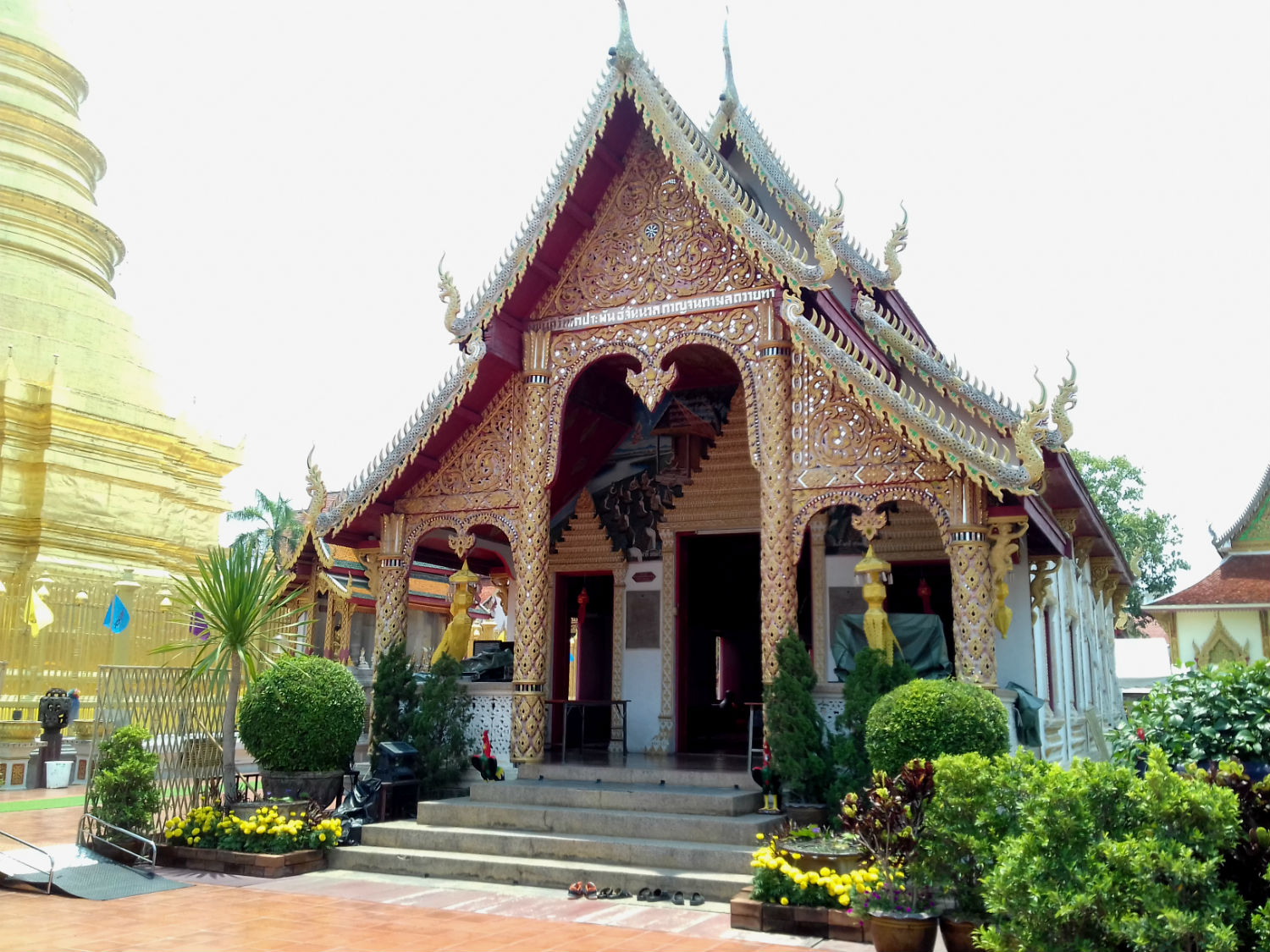
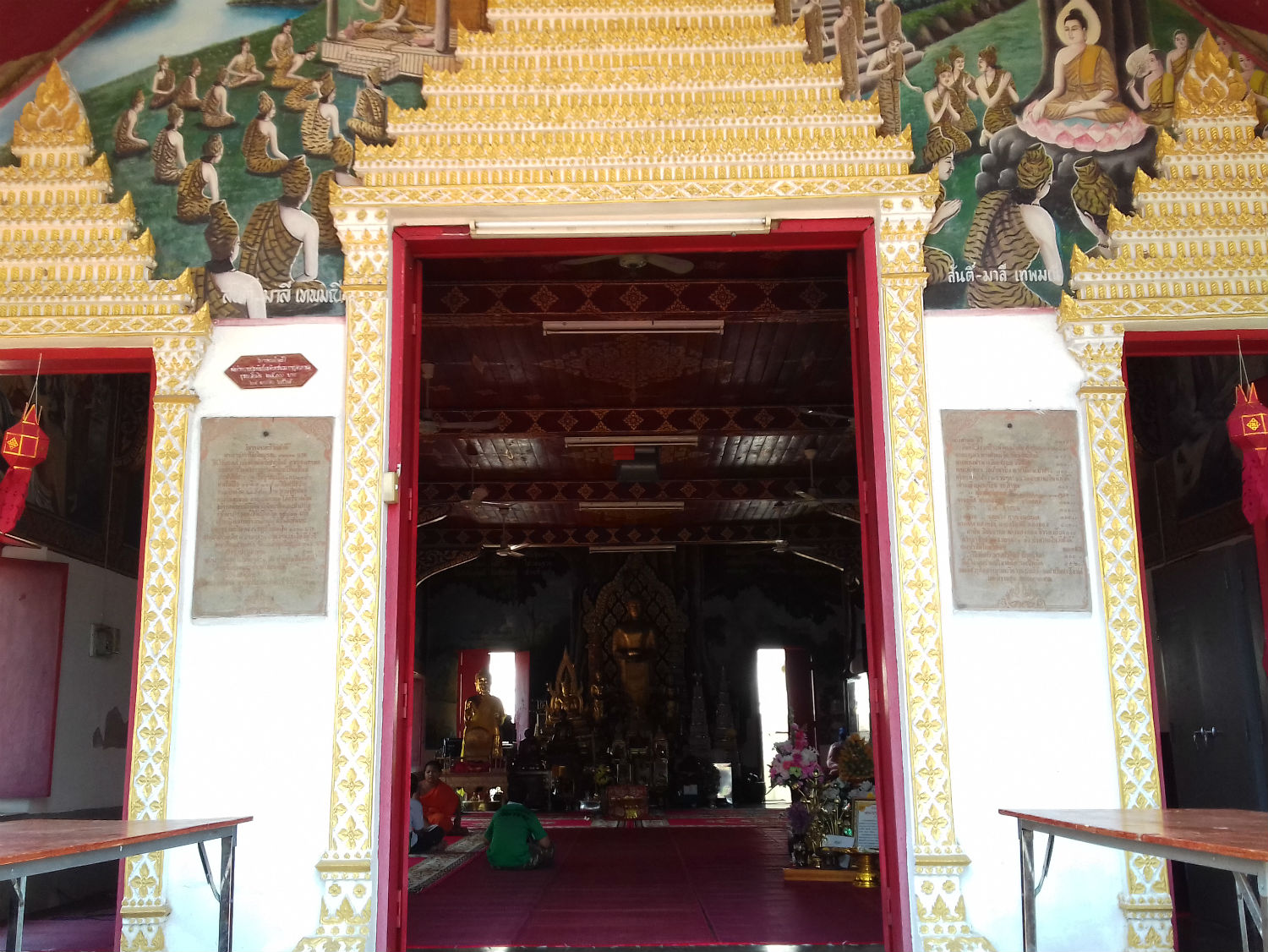
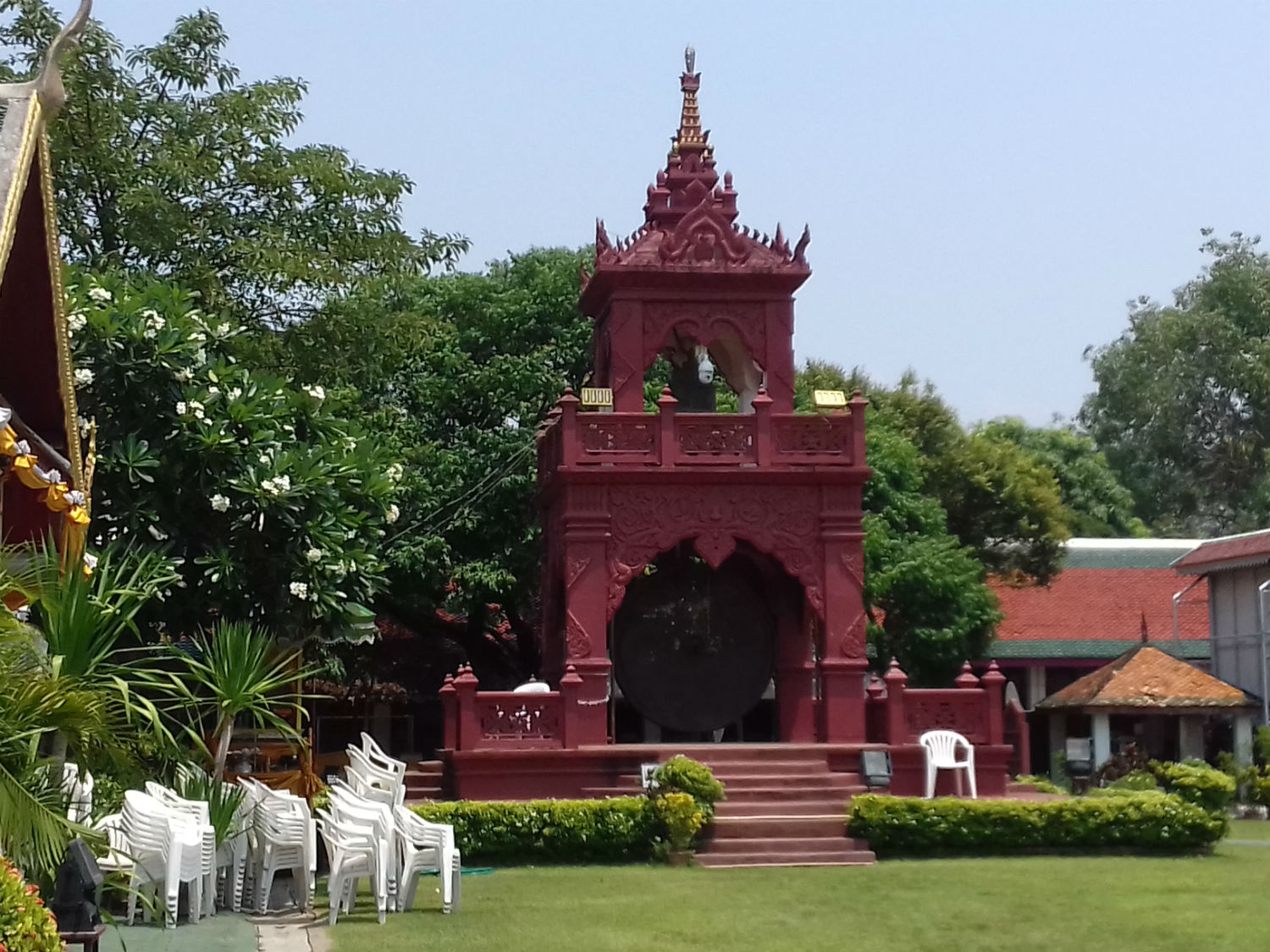
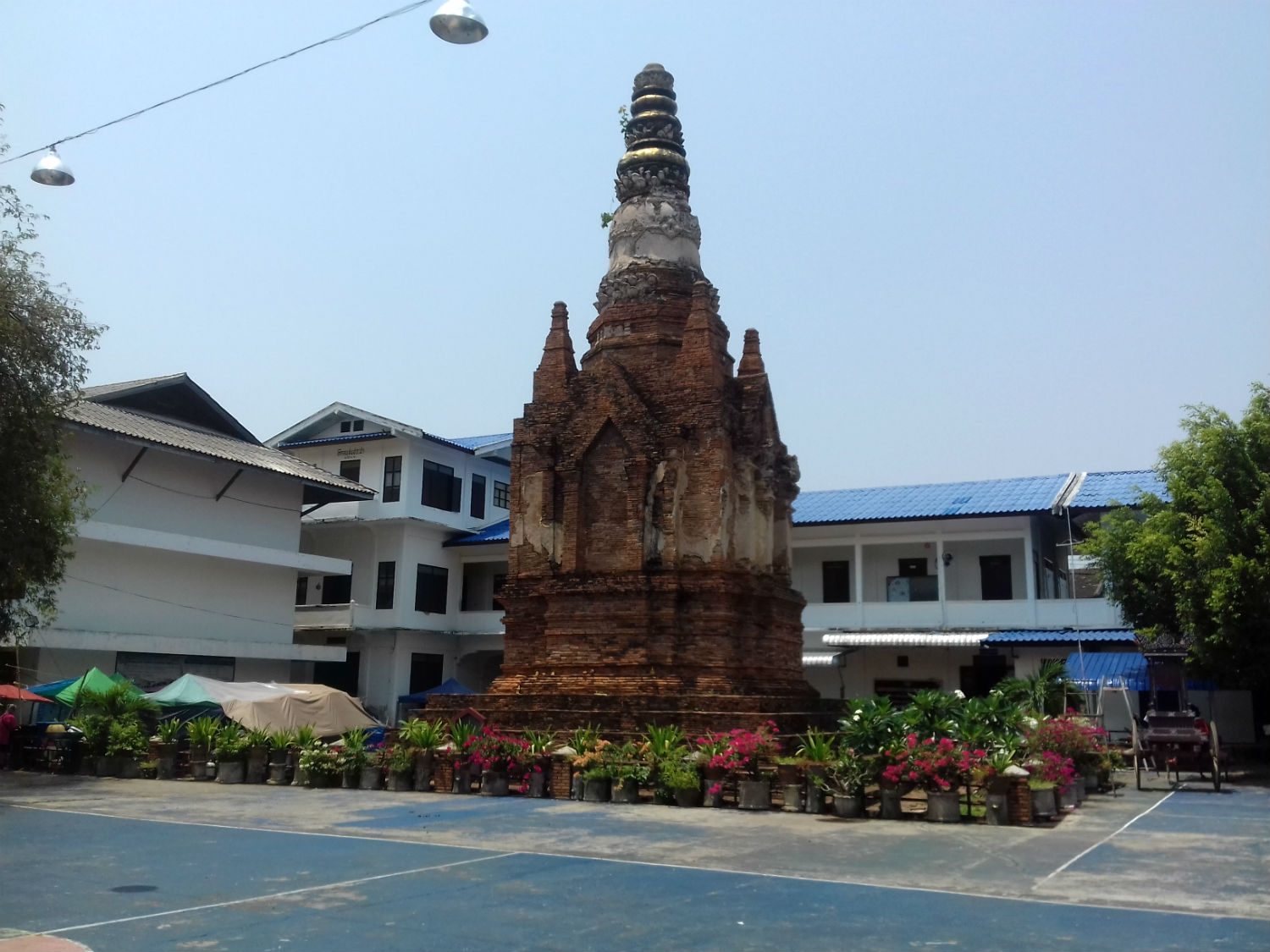
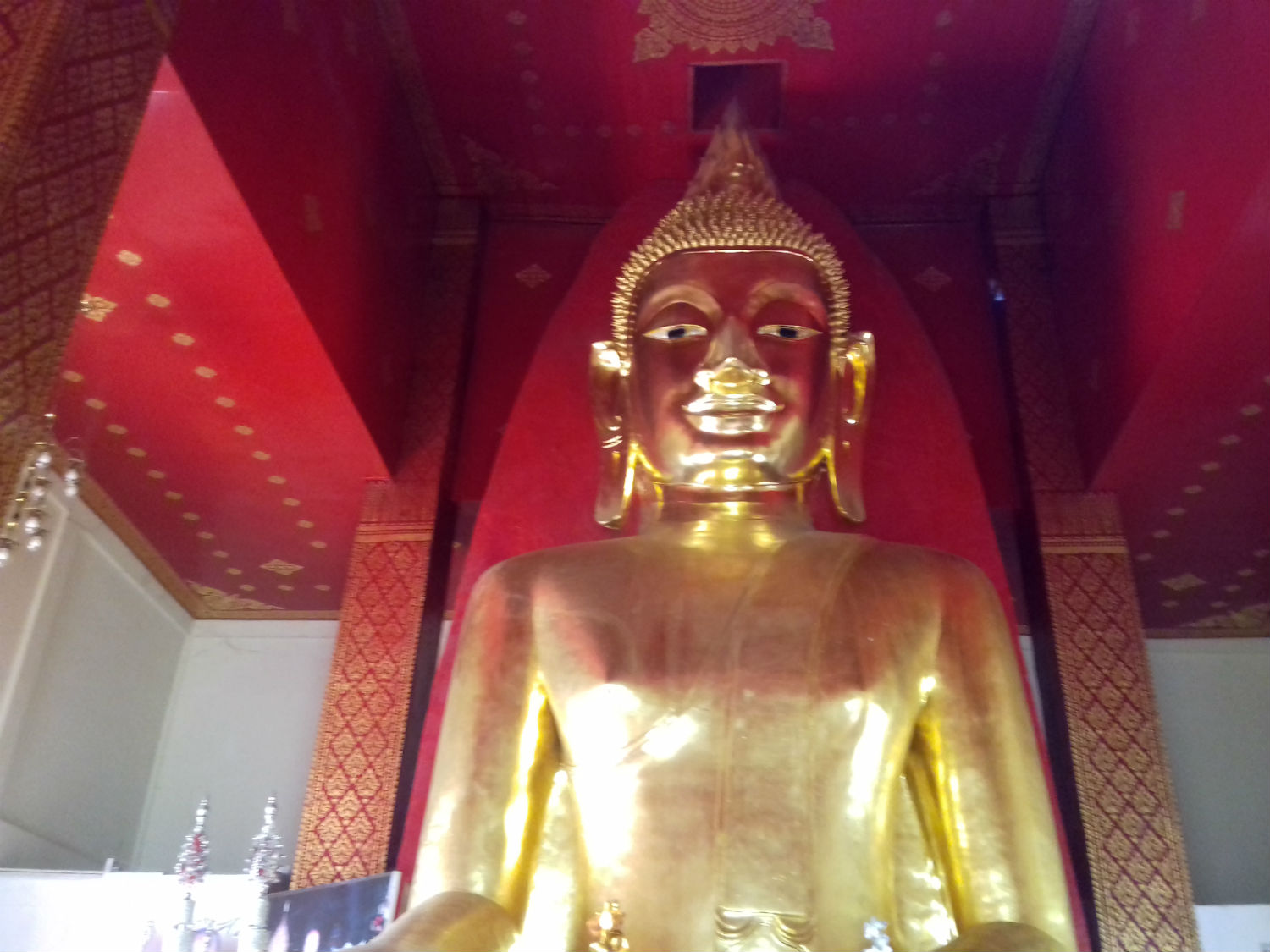 Wat Phrathat Haripunchai, Lamphun
Wat Phrathat Haripunchai, Lamphun
Hariphunchai National Museum........The Hariphunchai National Museum is within walking distance of Wat Phrathat Hariphunchai but then every yard seems like three in this heat. Then when we arrive at the museum there’s little in the way of the air-conditioning I was expecting. A further handicap is the lack of sufficient information in English, unusual for a national museum, and I can imagine that most foreigners who arrive on their first trip here would leave rather confused. Having said all that, the museum itself is divided into sections, with exhibits grouped into different eras or time periods so that approximate dates for the exhibits can be established. The sections are: -
1) Stone Inscription Hall
2.1) Hariphunchai Art - Main Exhibition Hall
2.2) Lanna Art with 3 subgroups – Main Exhibition Hall
The Hariphunchai National Museum was established in 1927 by Praya Rachanakulvibulbhakdi, the Governor of Monthon Phayap State, later transferring to the Department of Fine Arts. The current exhibition building was erected in 1974. Admission Fee is 100 baht.
1) Stone Inscription Hall
2.1) Hariphunchai Art - Main Exhibition Hall
2.2) Lanna Art with 3 subgroups – Main Exhibition Hall
The Hariphunchai National Museum was established in 1927 by Praya Rachanakulvibulbhakdi, the Governor of Monthon Phayap State, later transferring to the Department of Fine Arts. The current exhibition building was erected in 1974. Admission Fee is 100 baht.
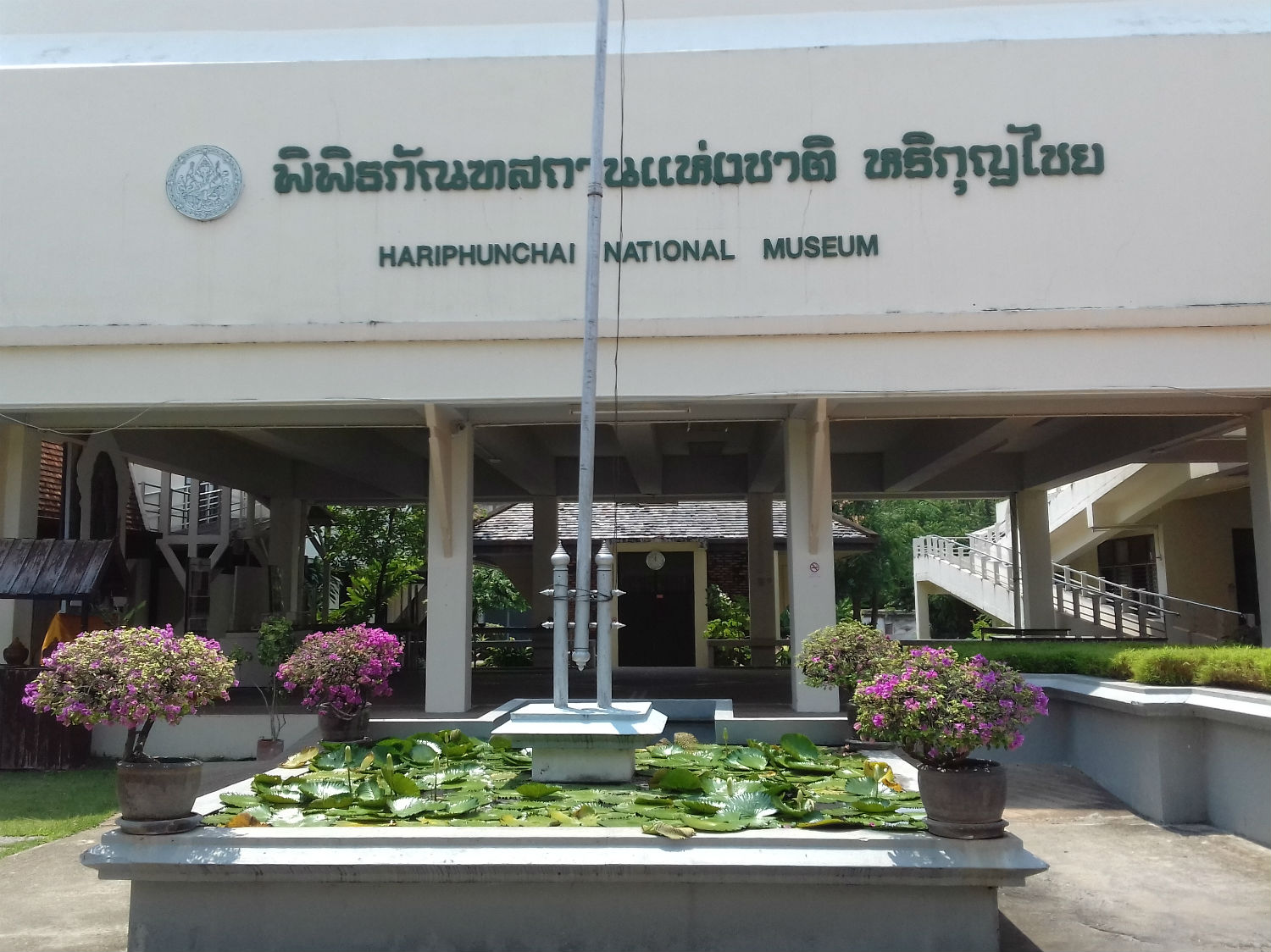
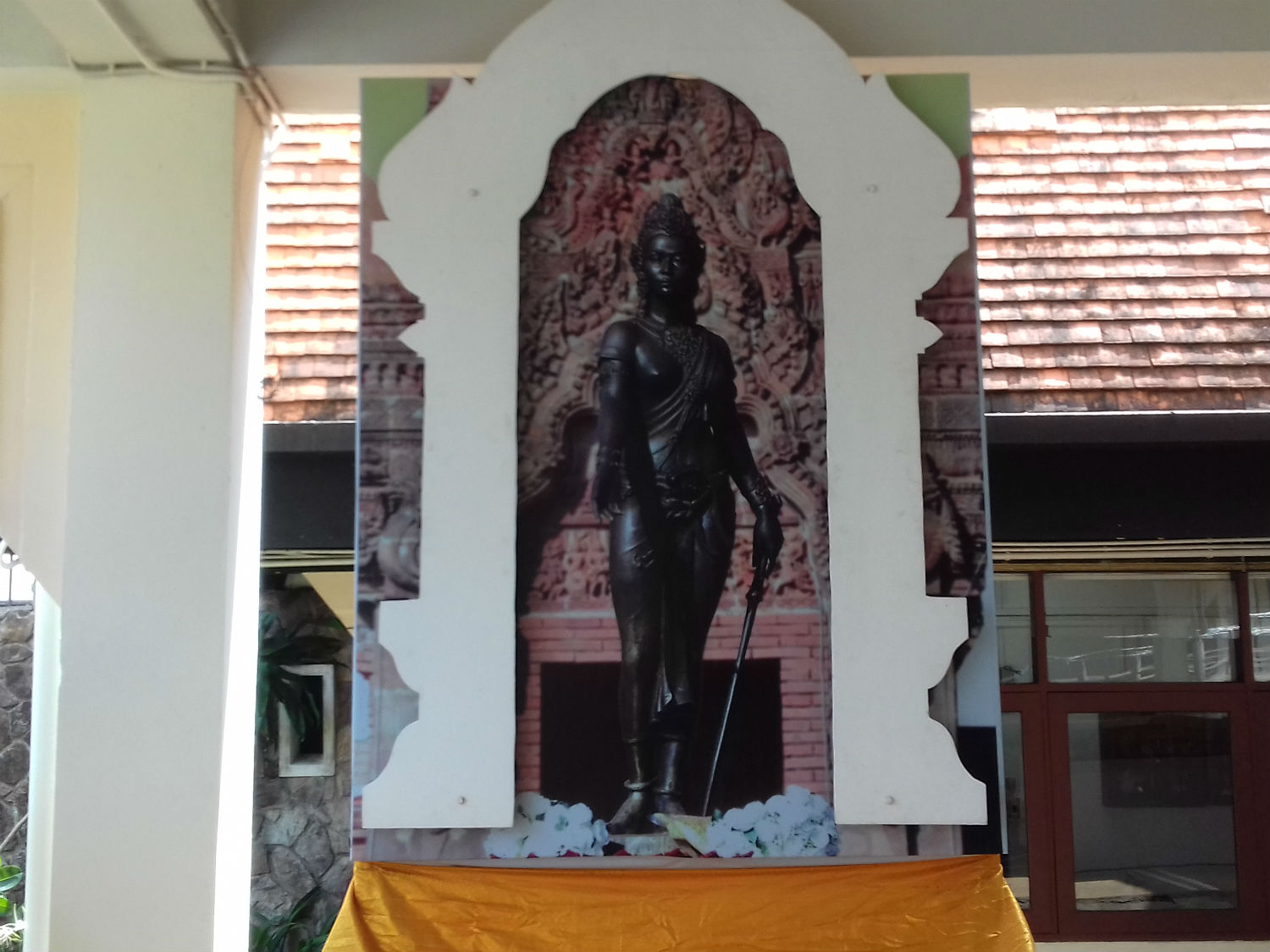
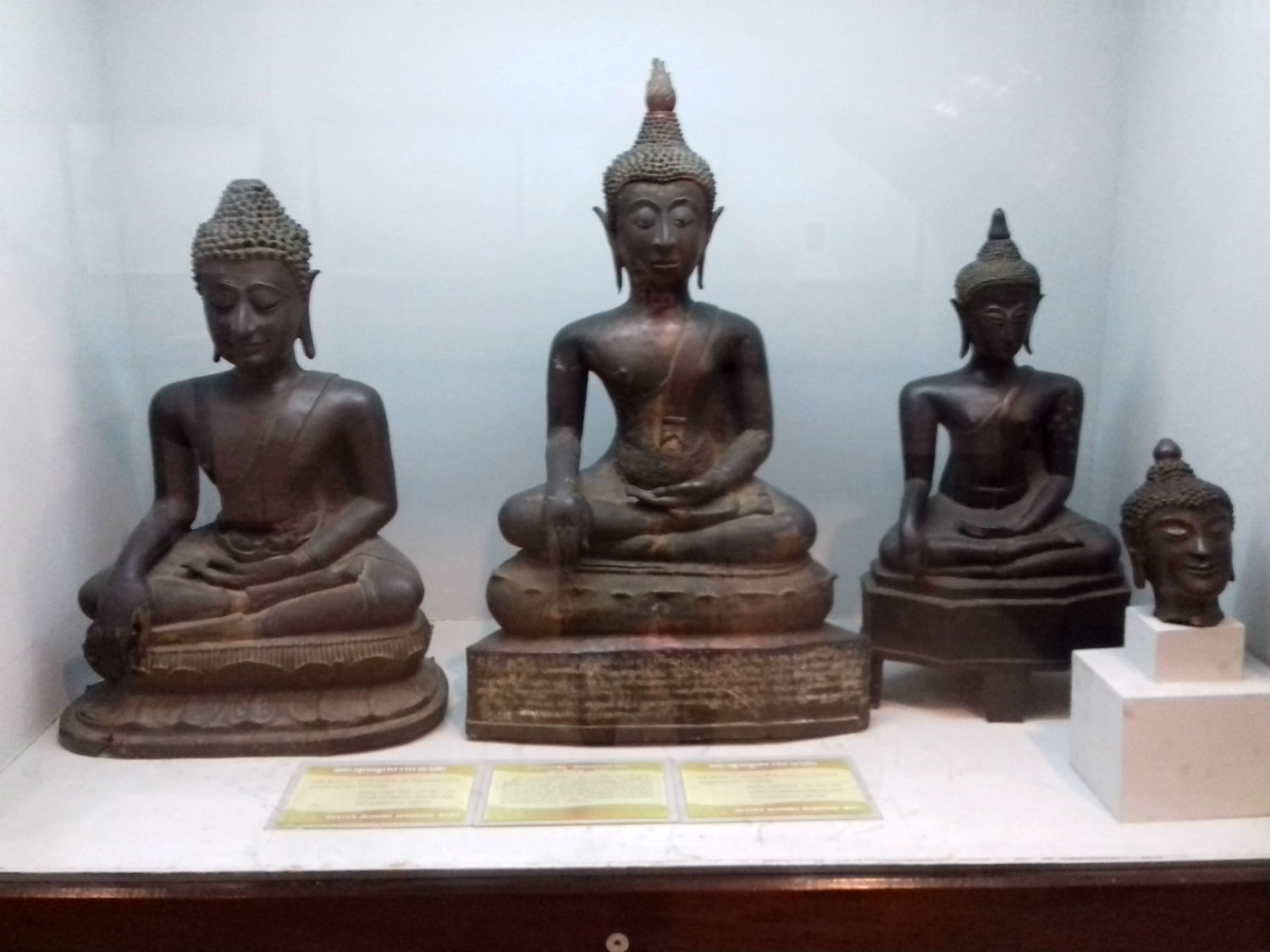
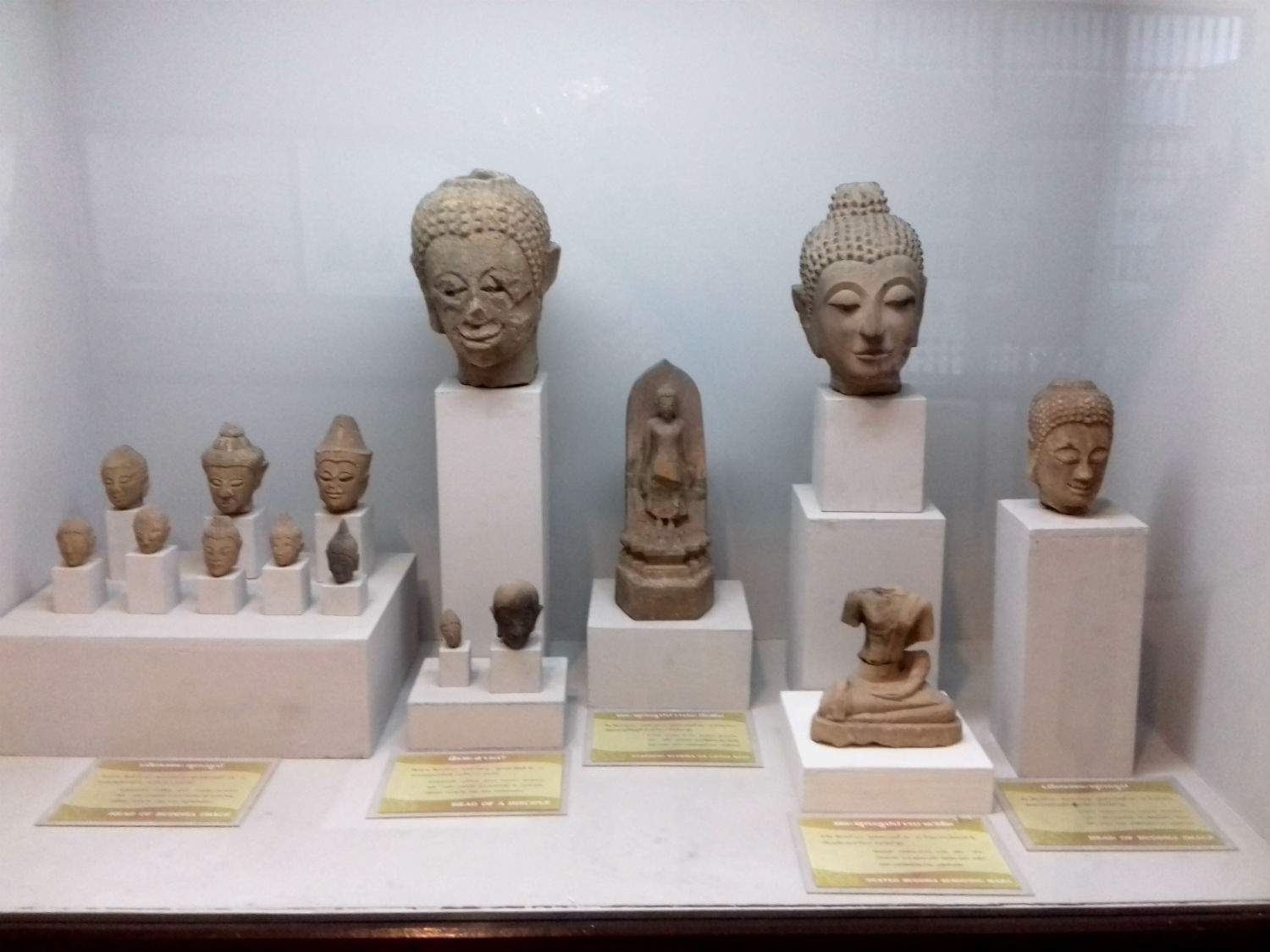
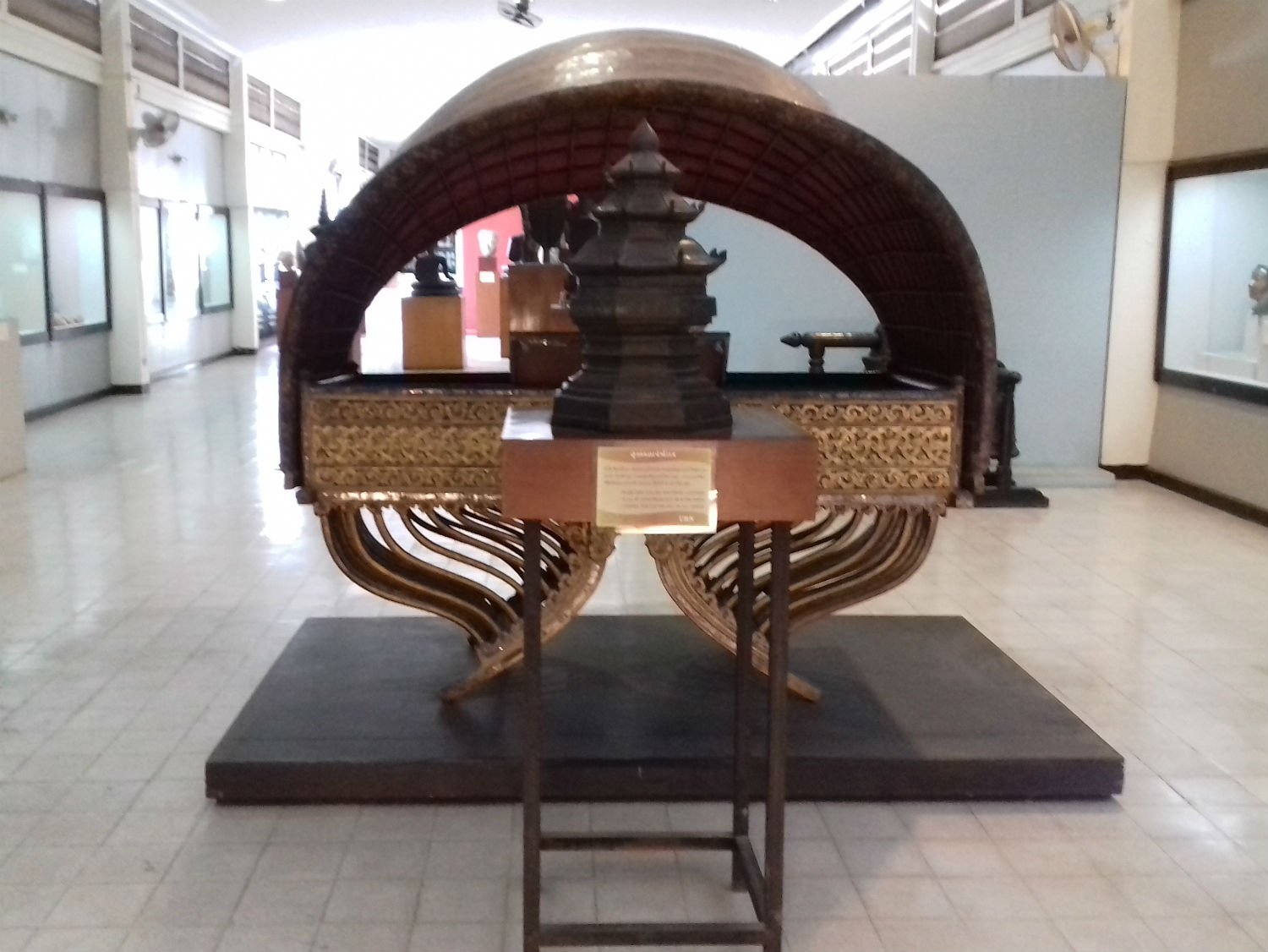
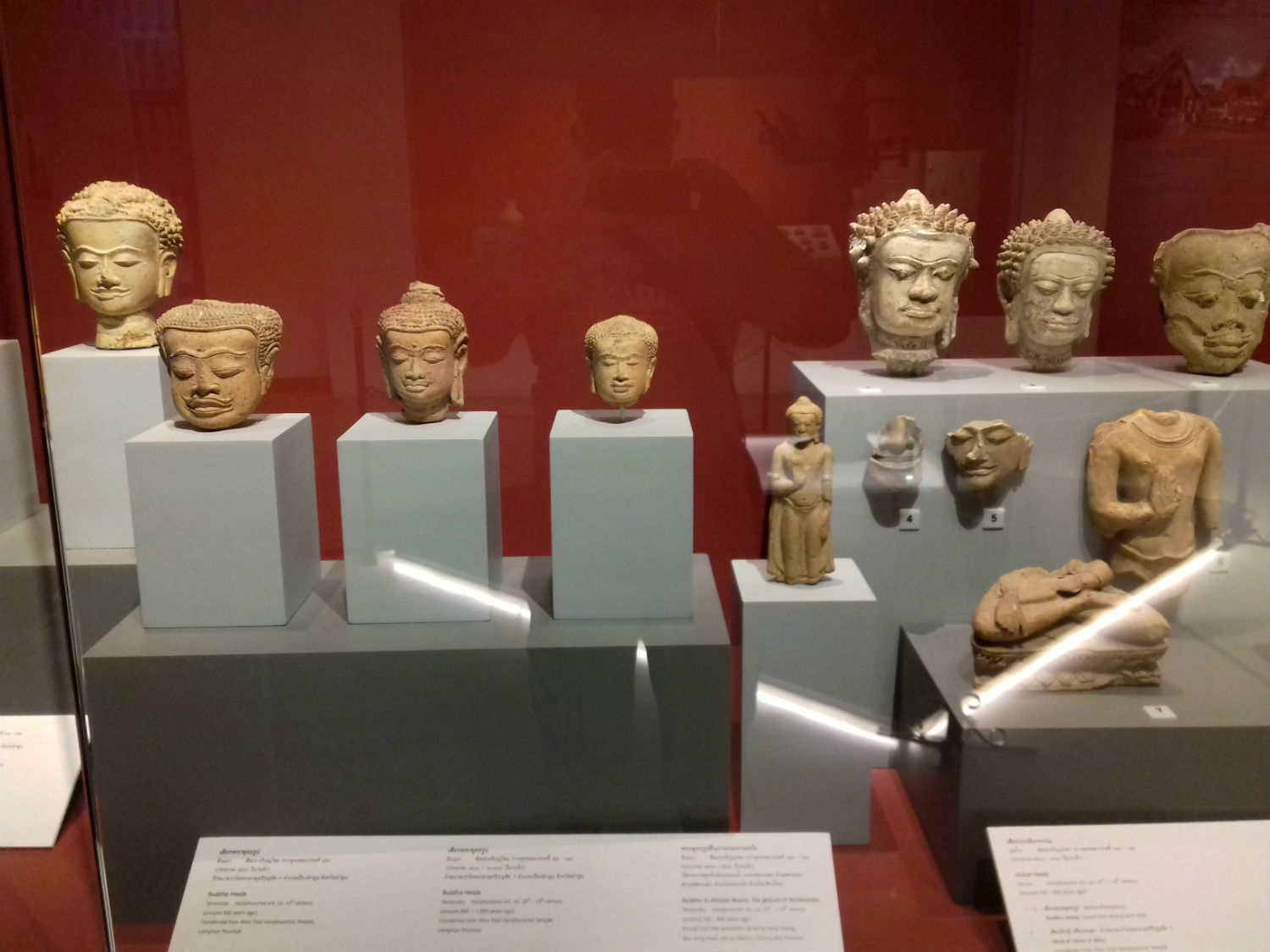
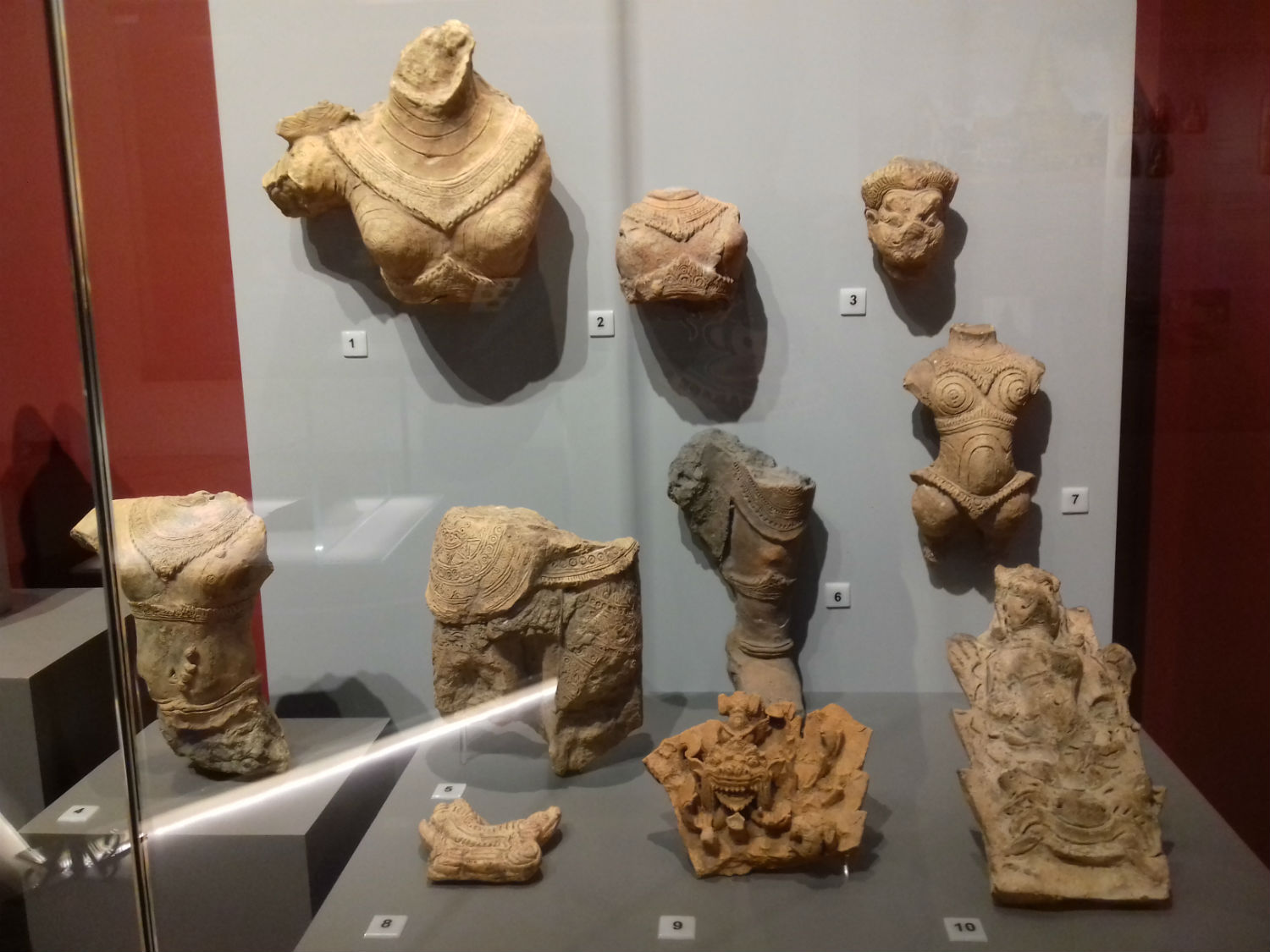
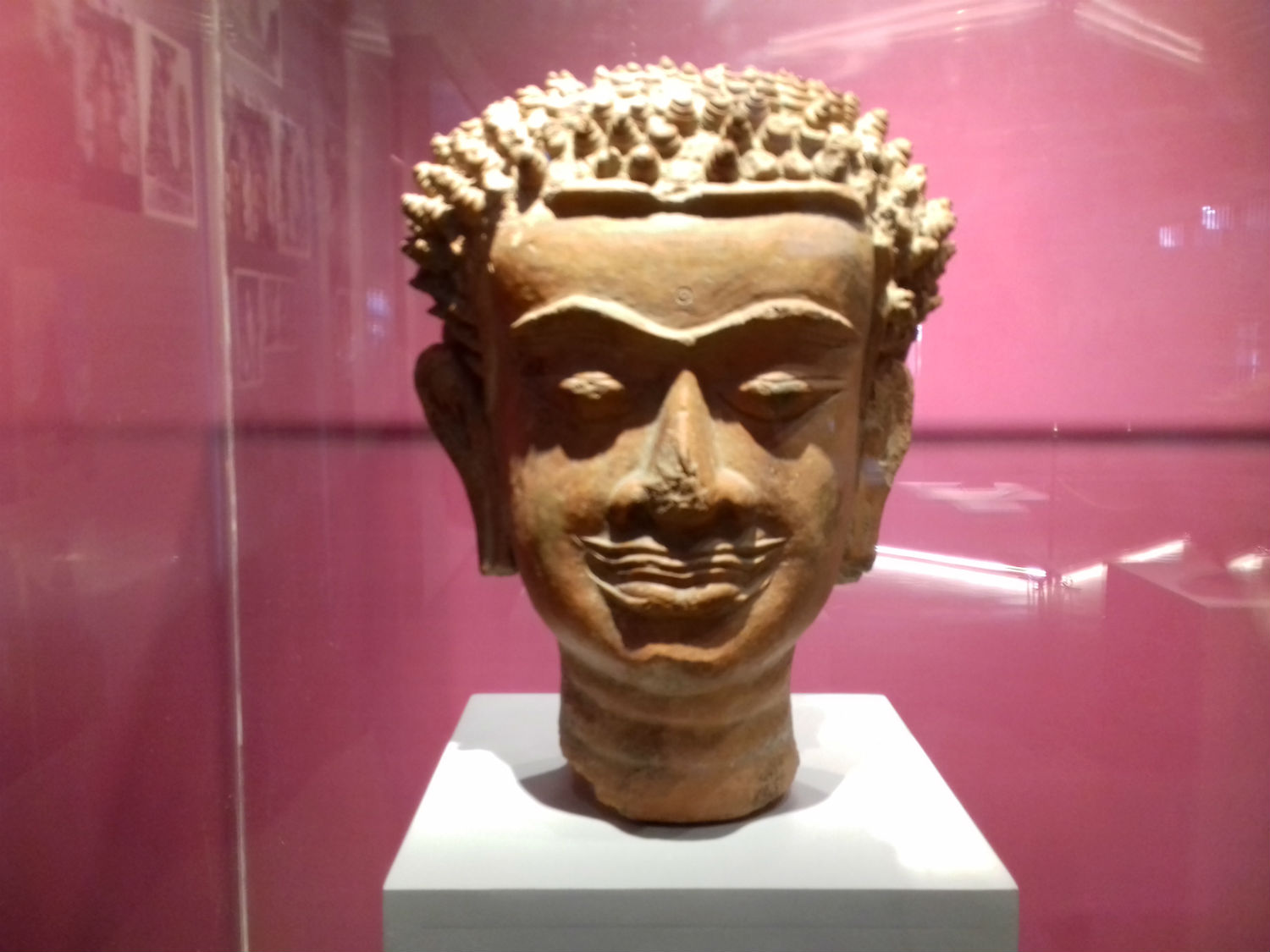
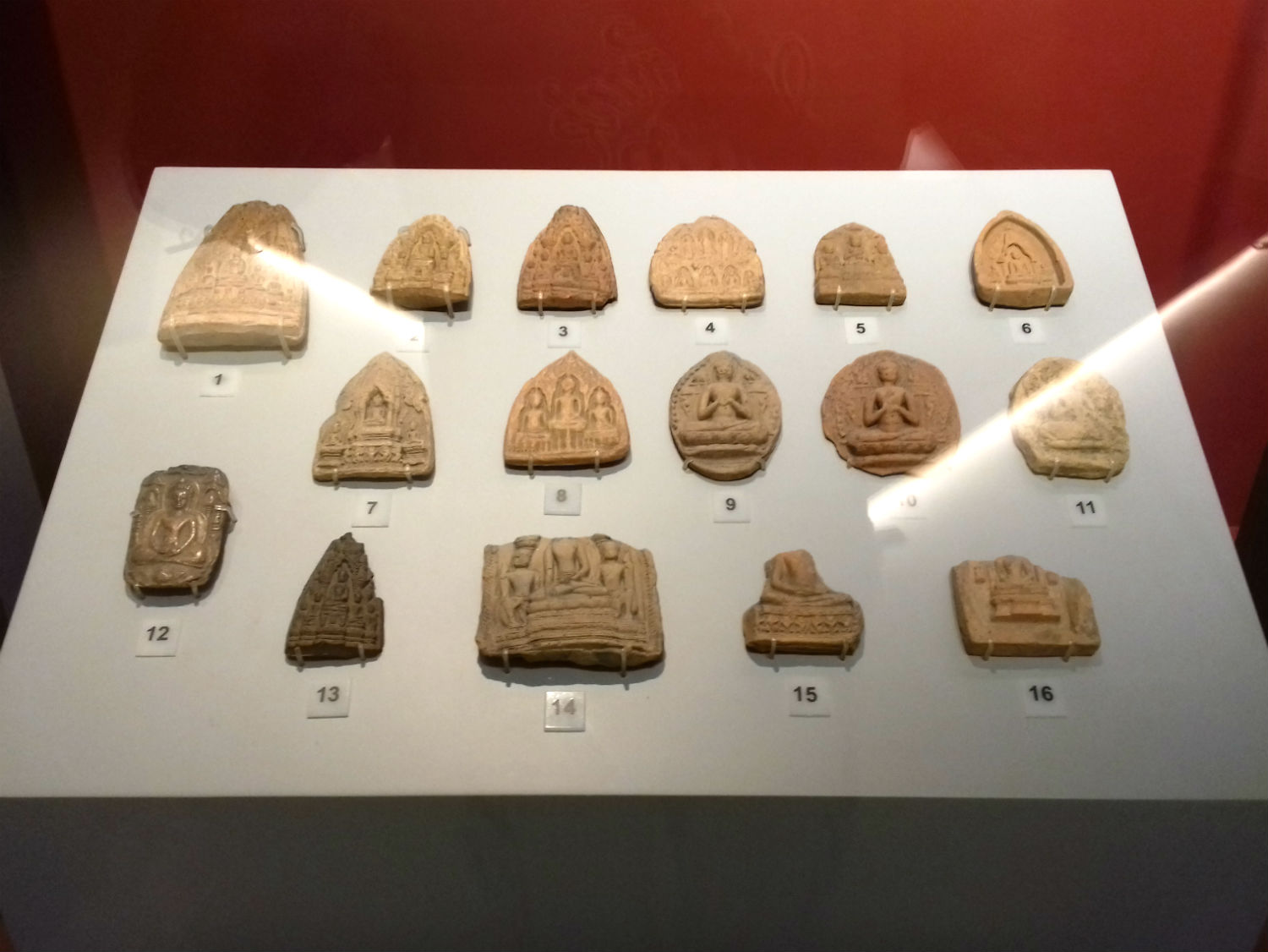
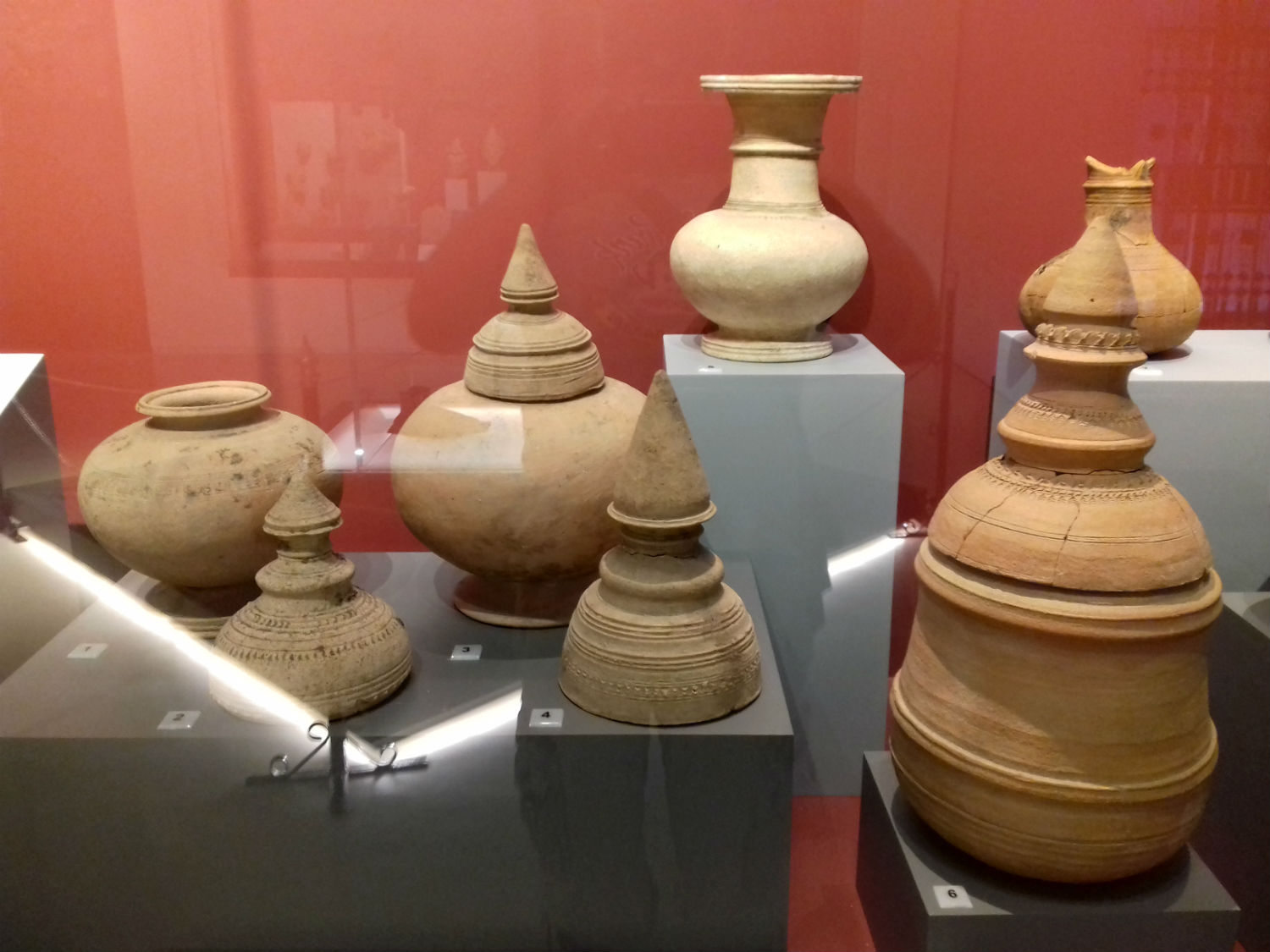
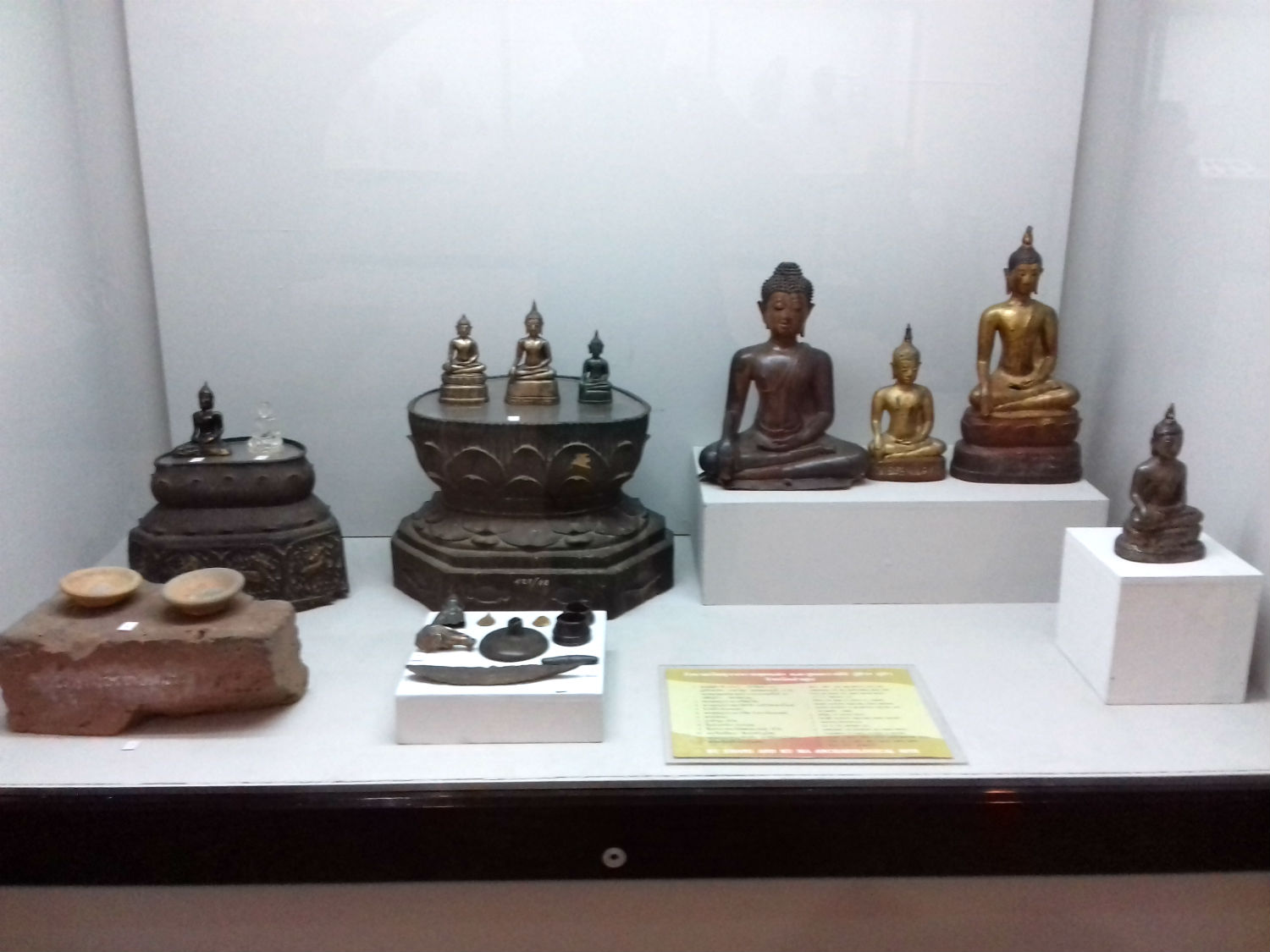
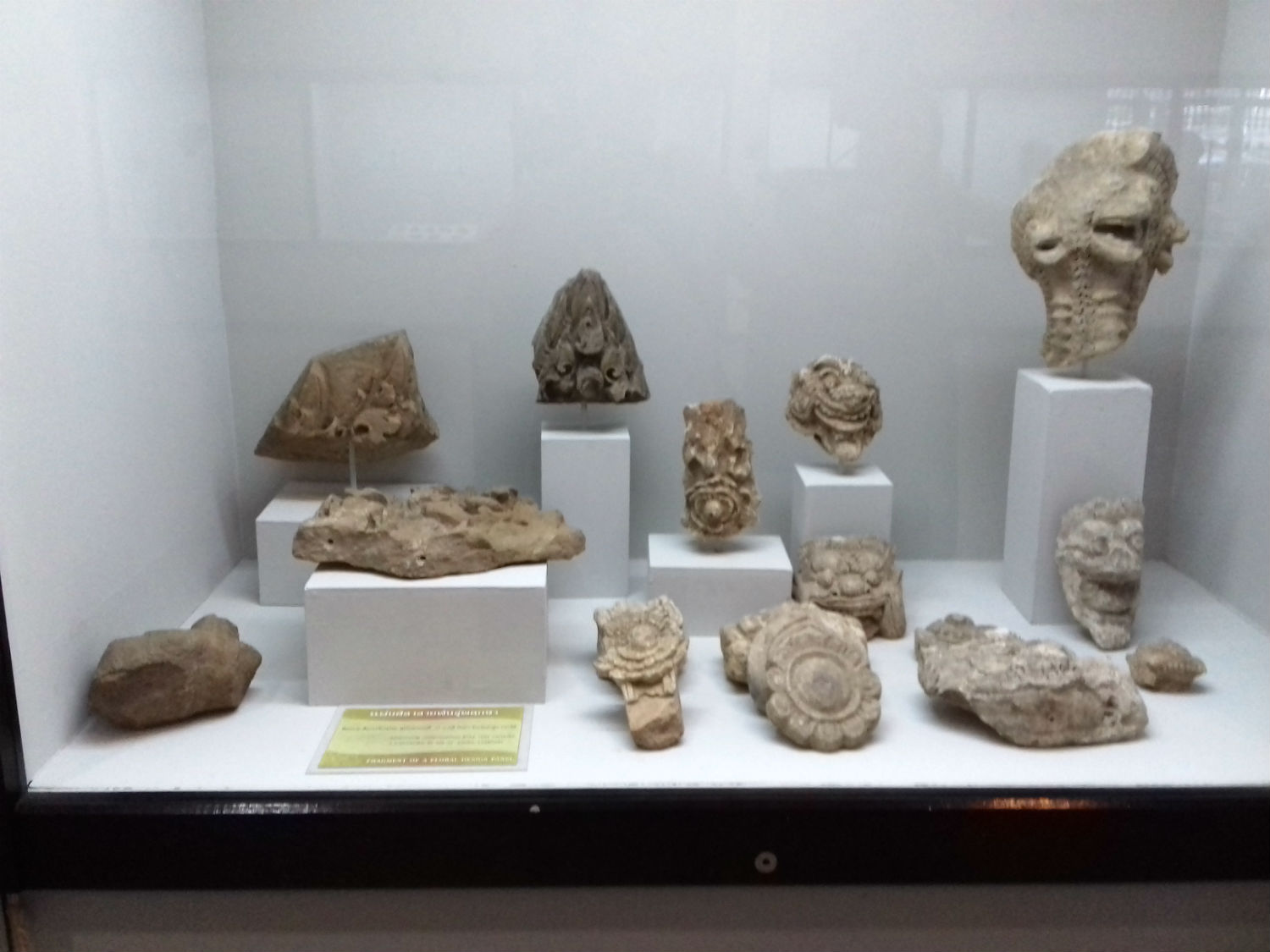
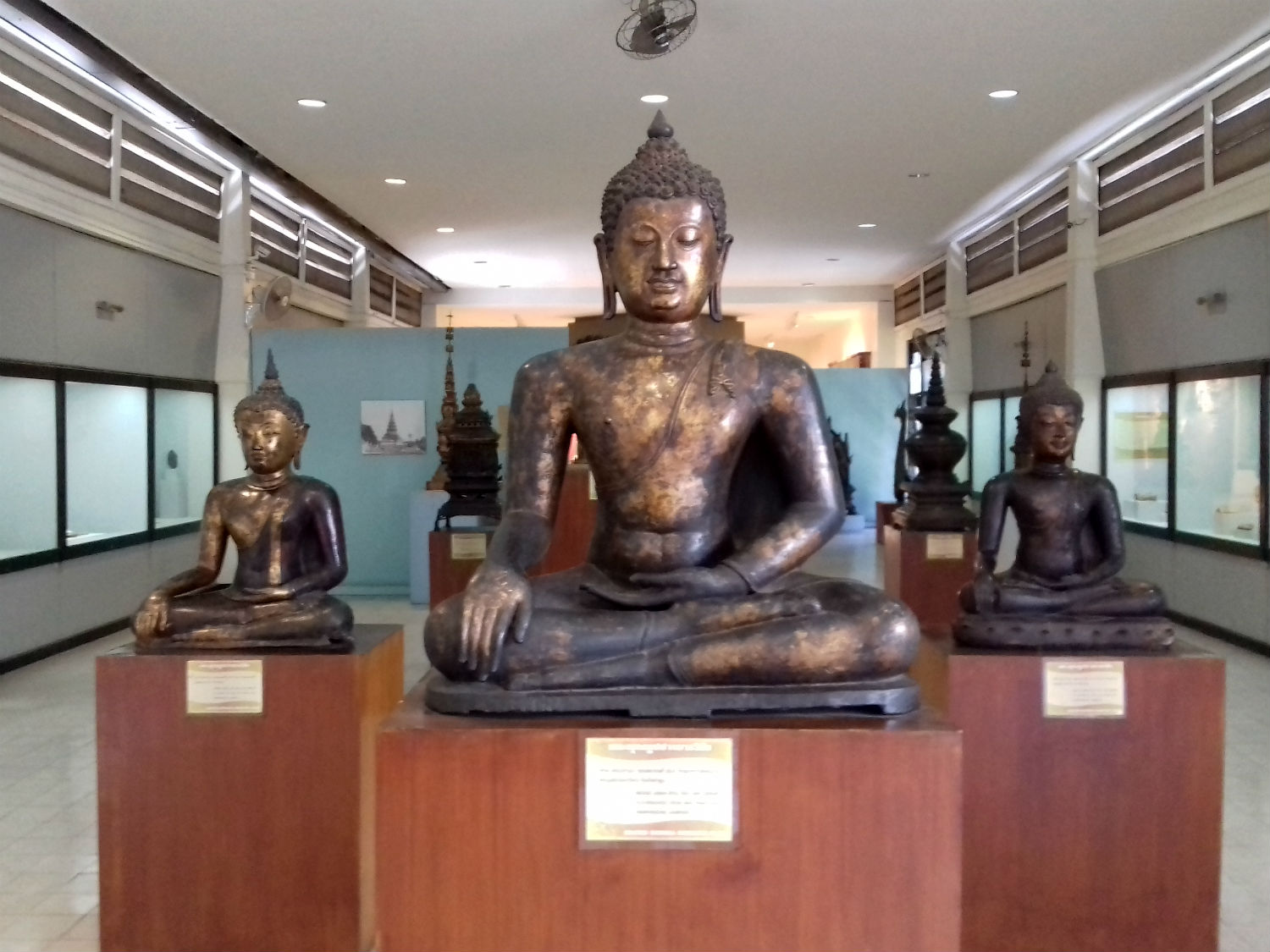
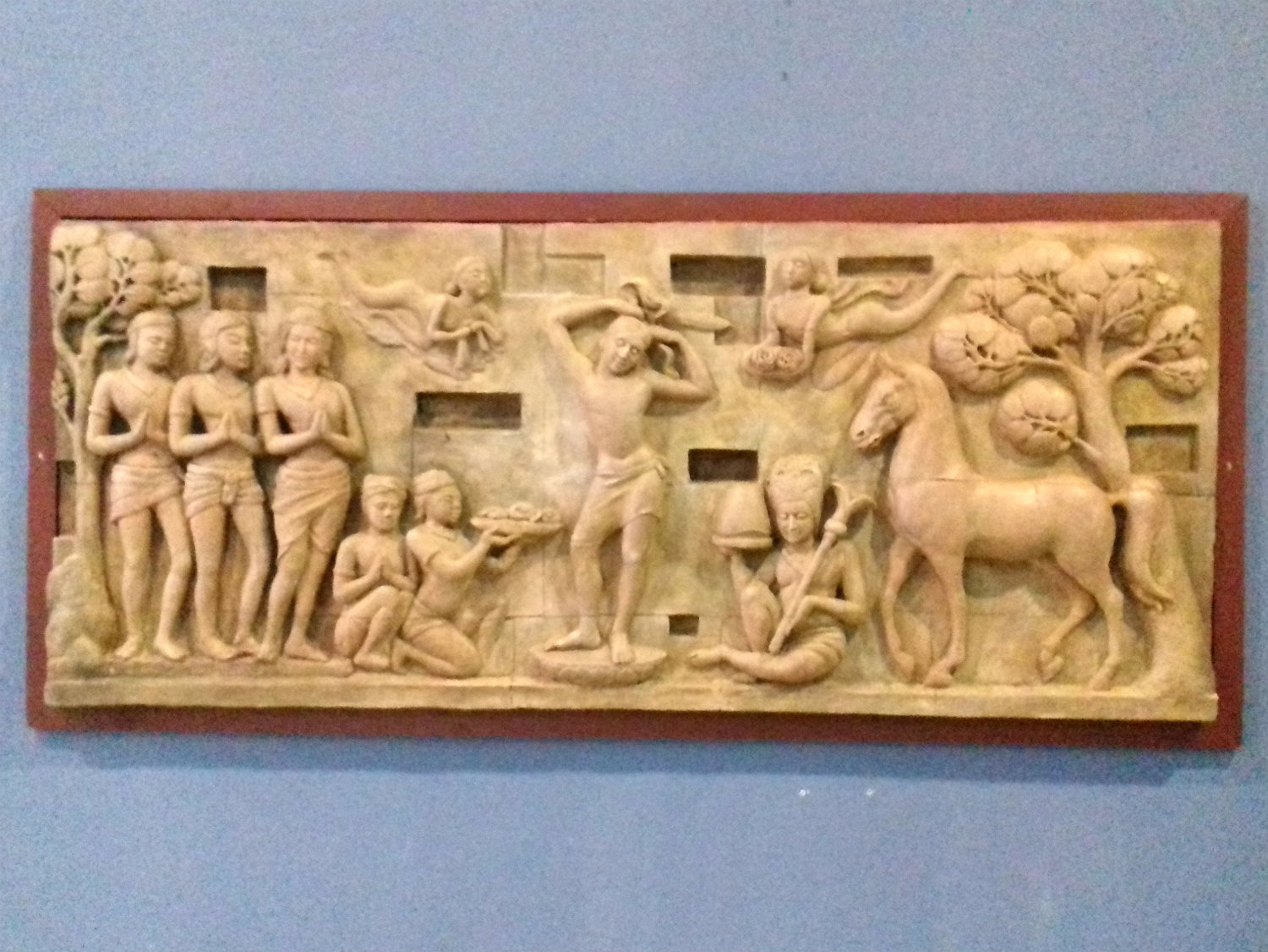
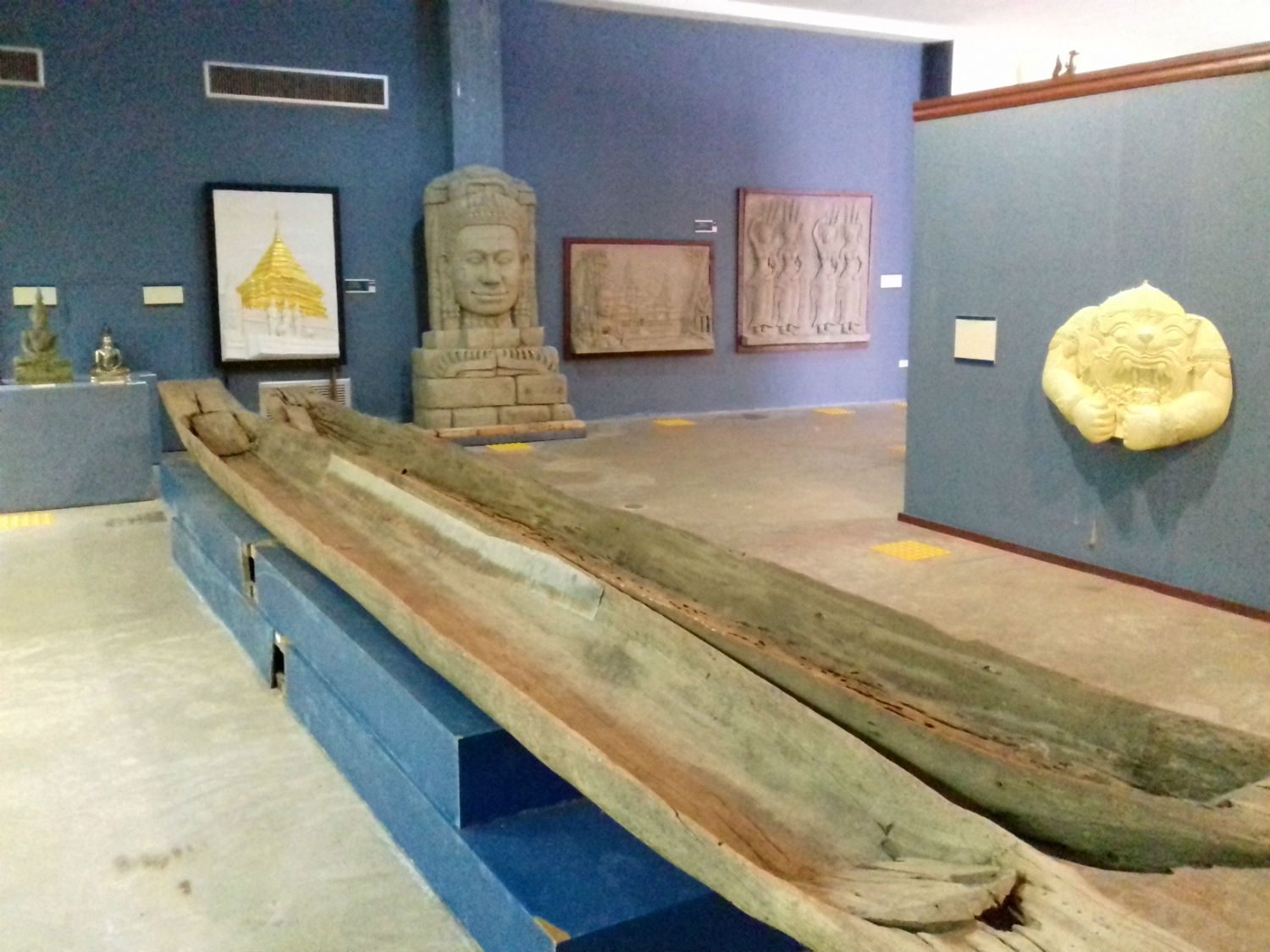
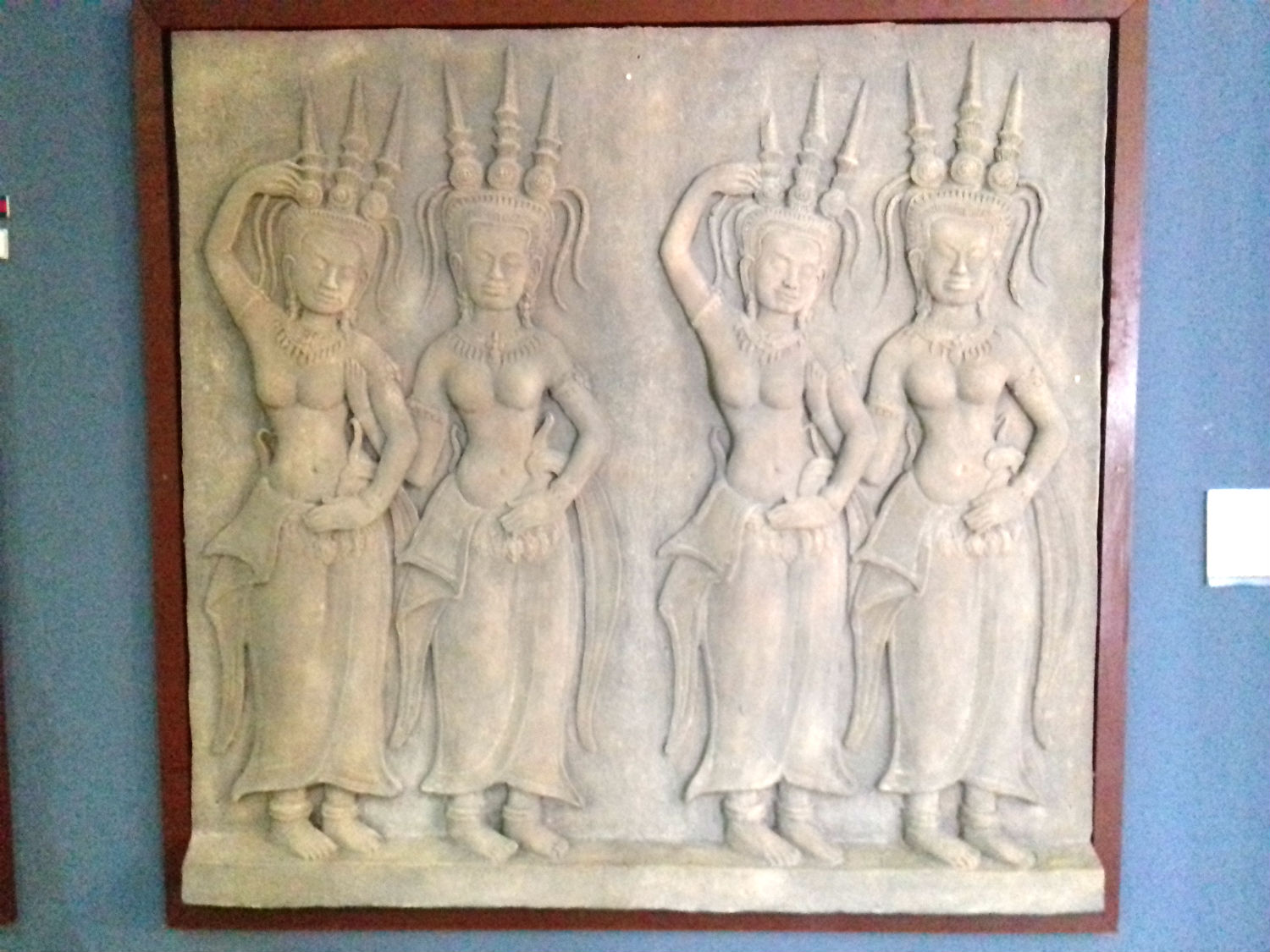
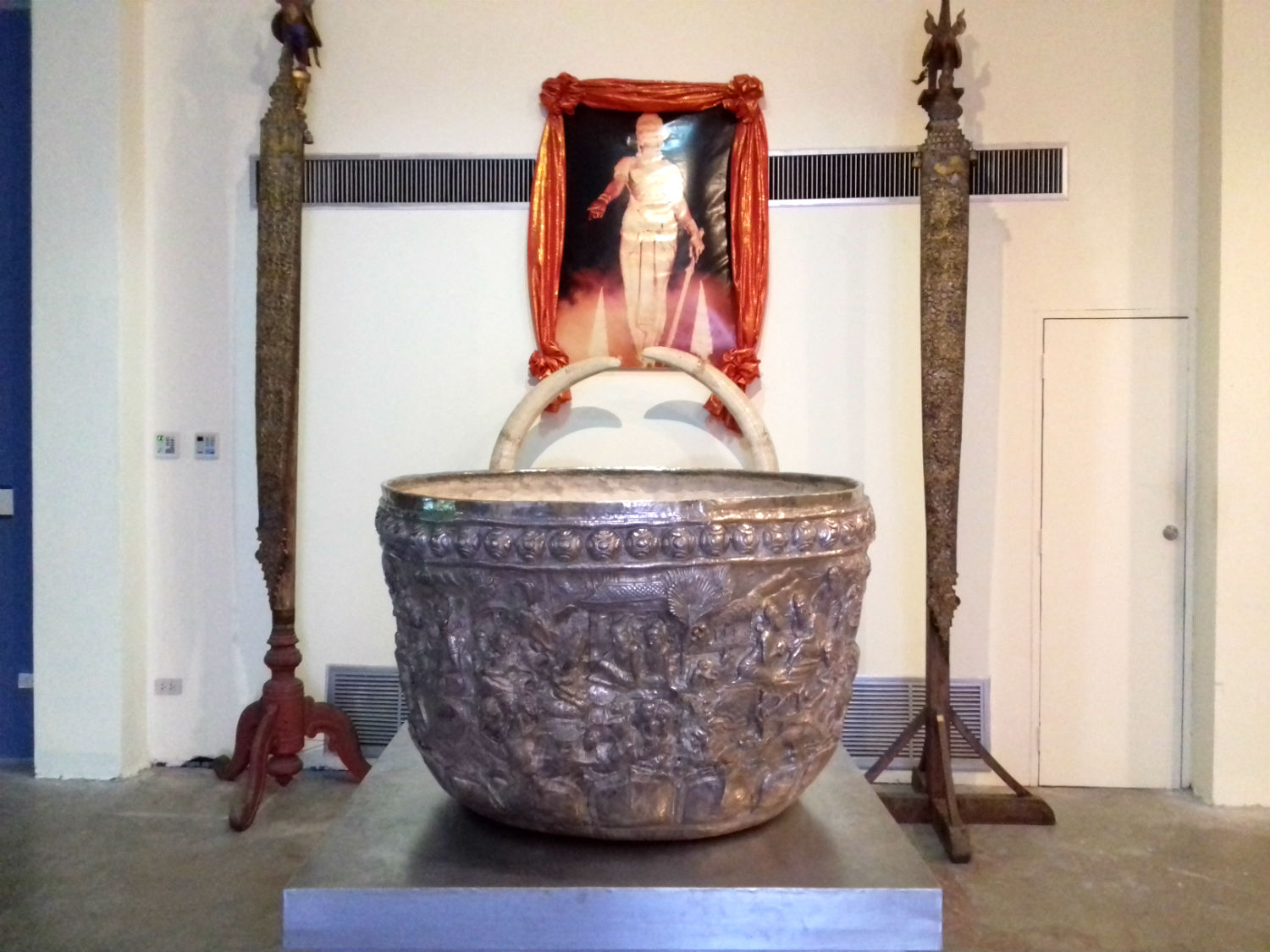
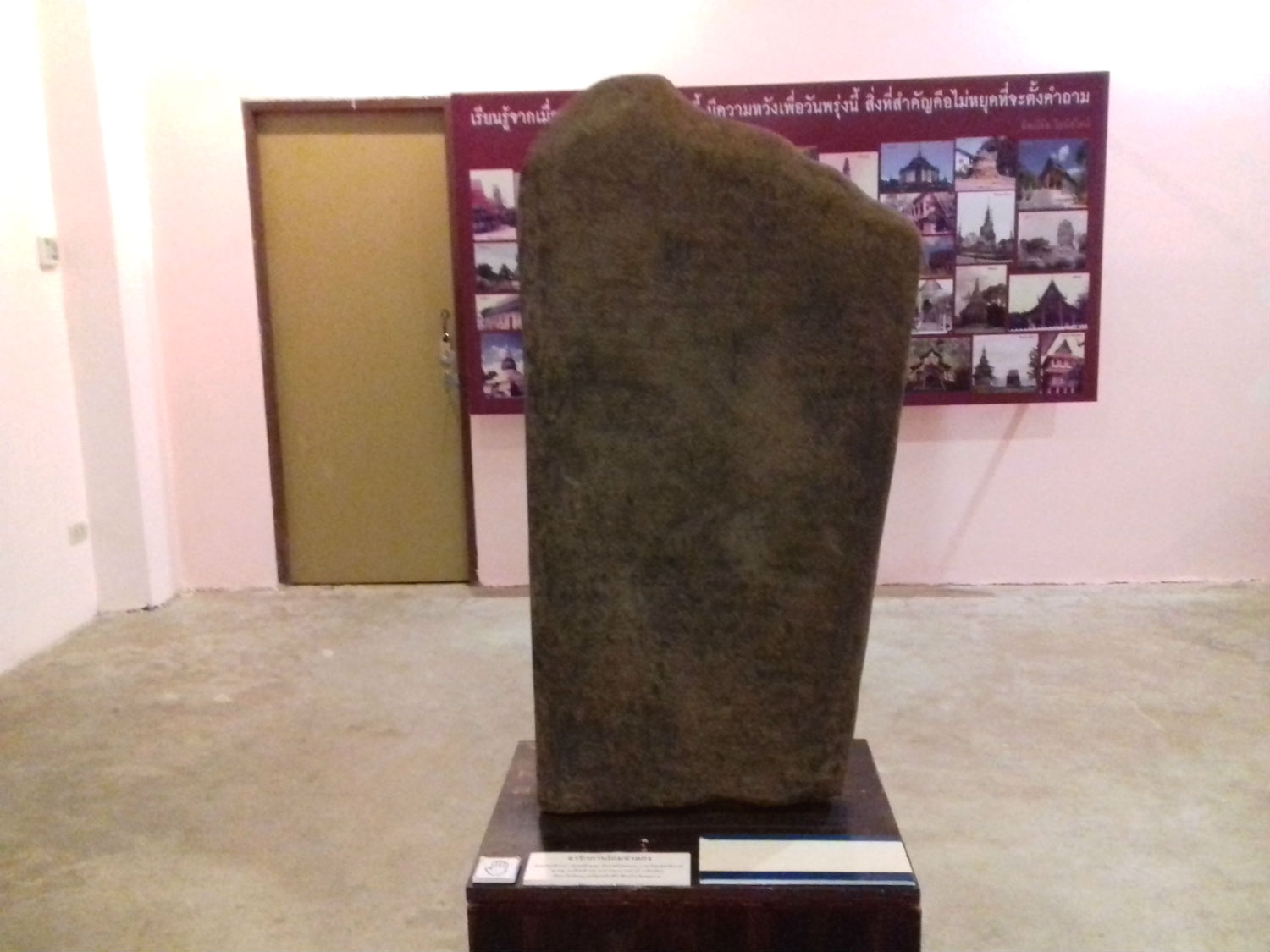
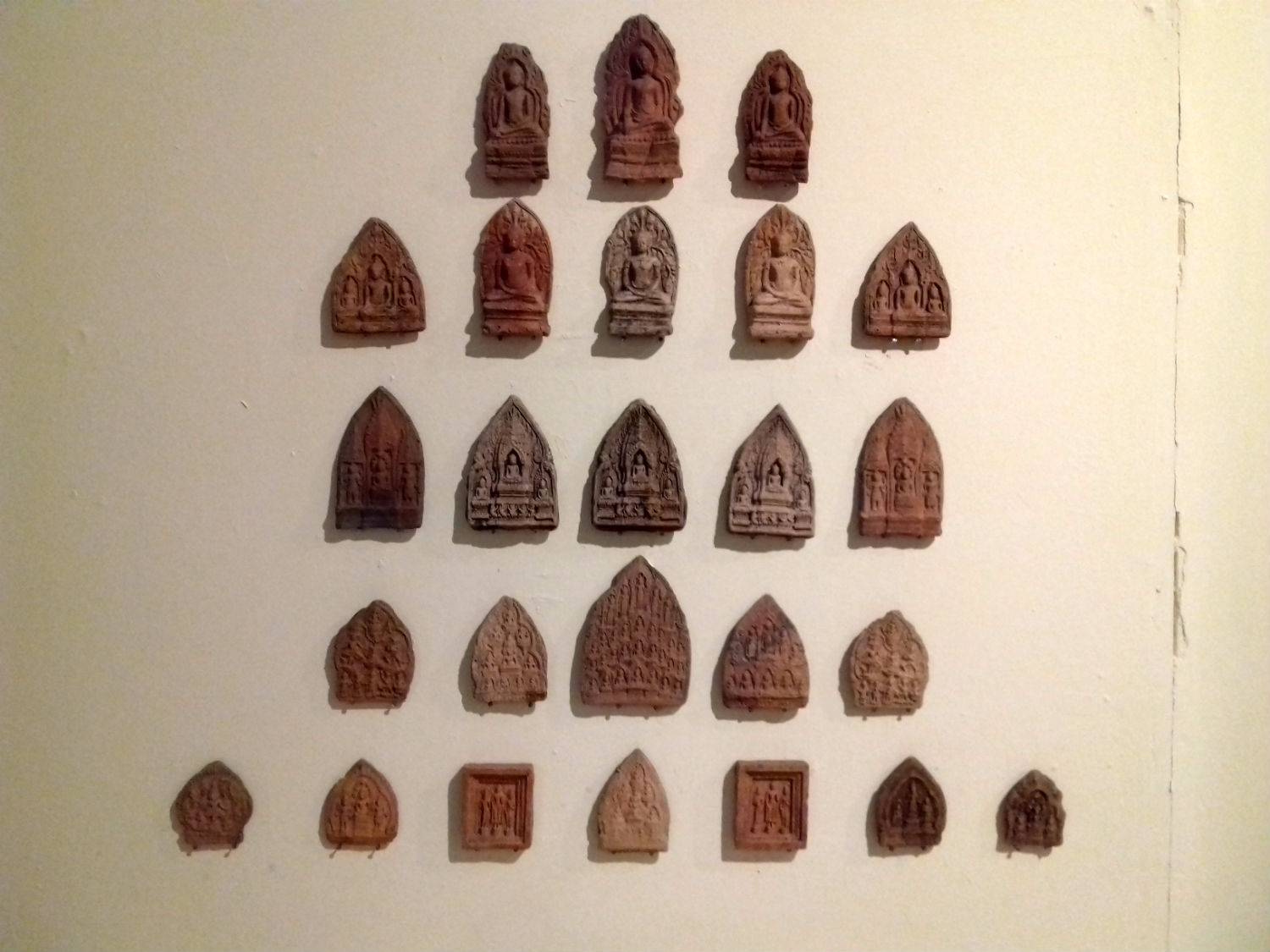
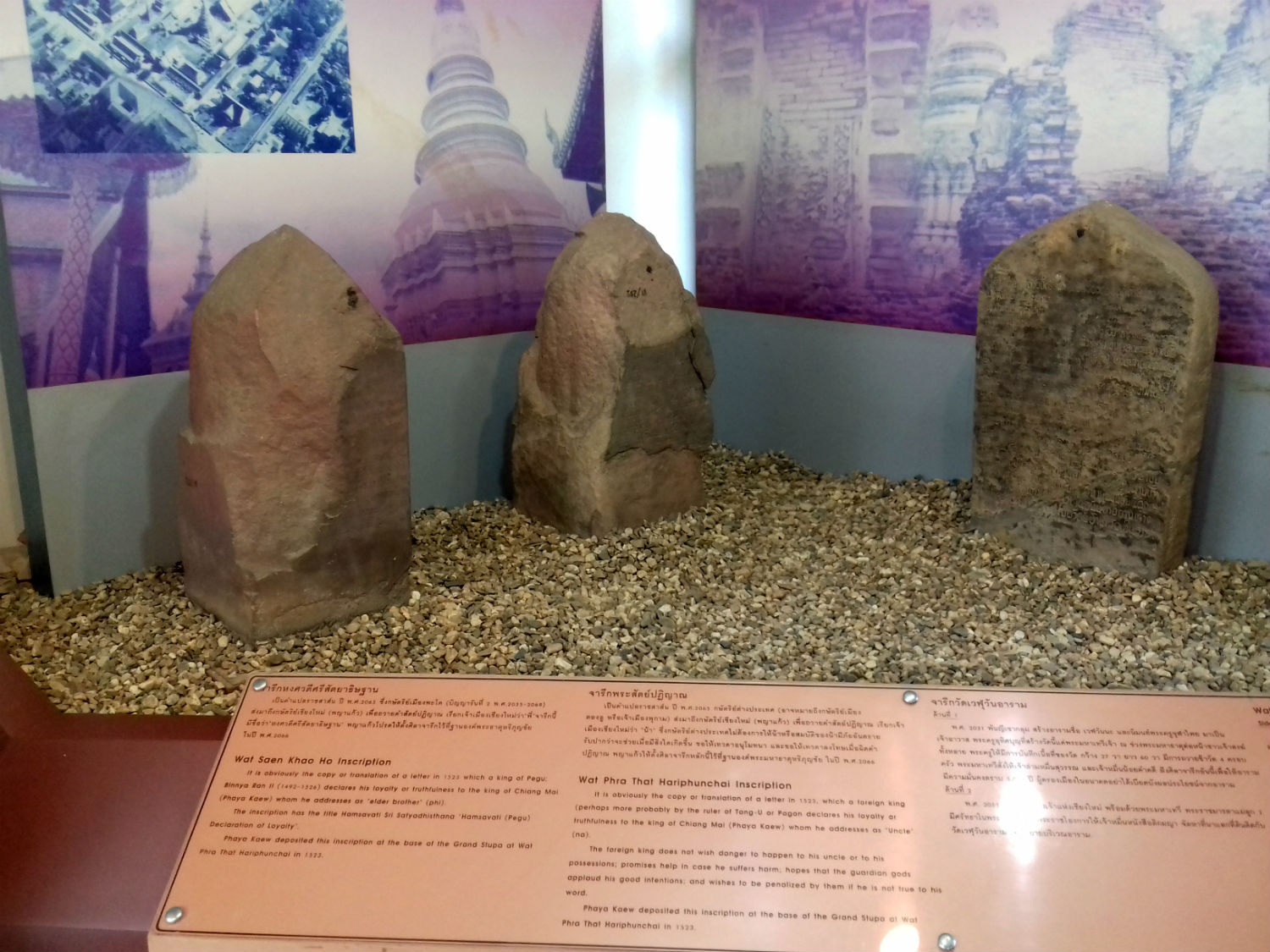
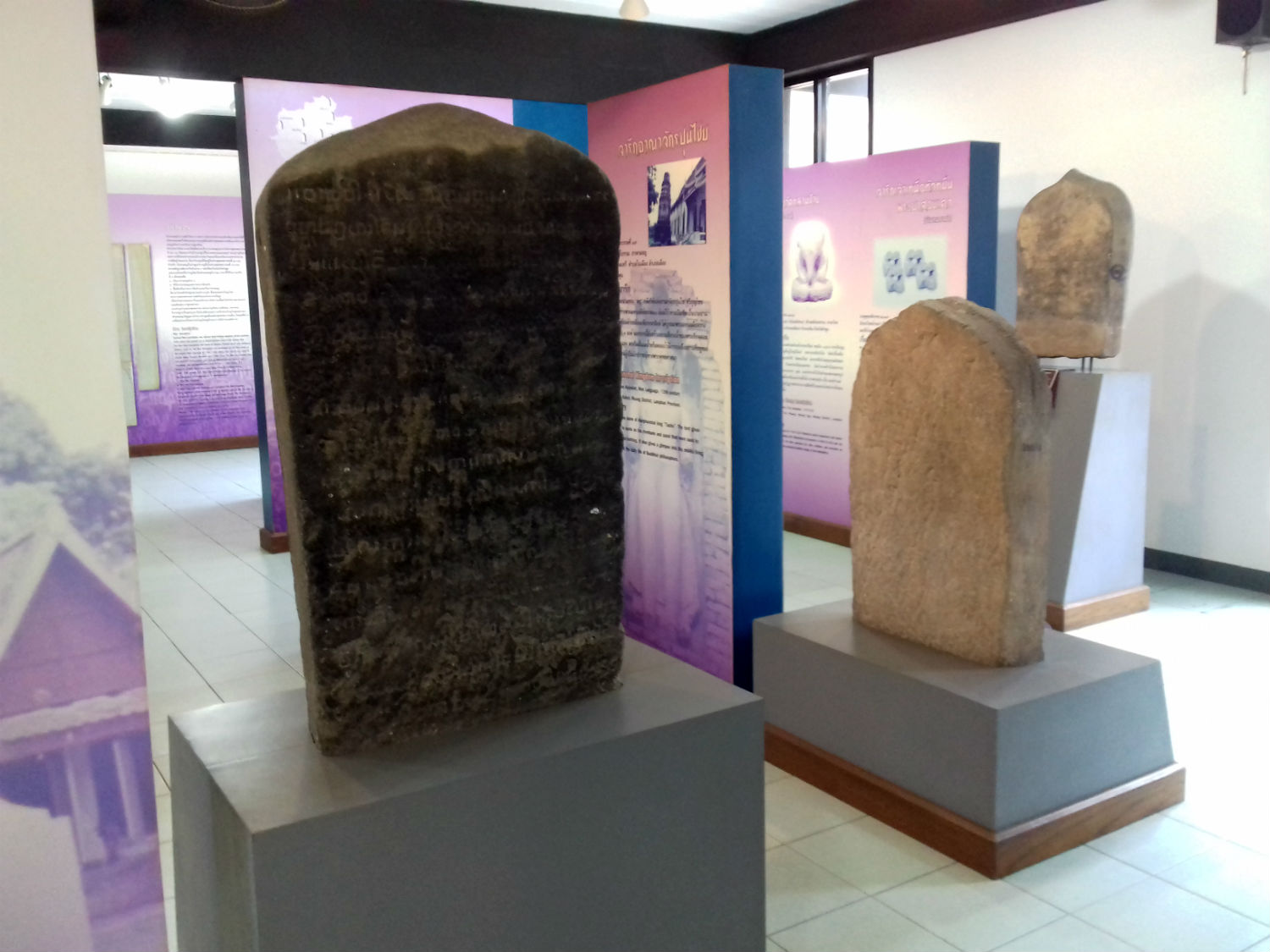
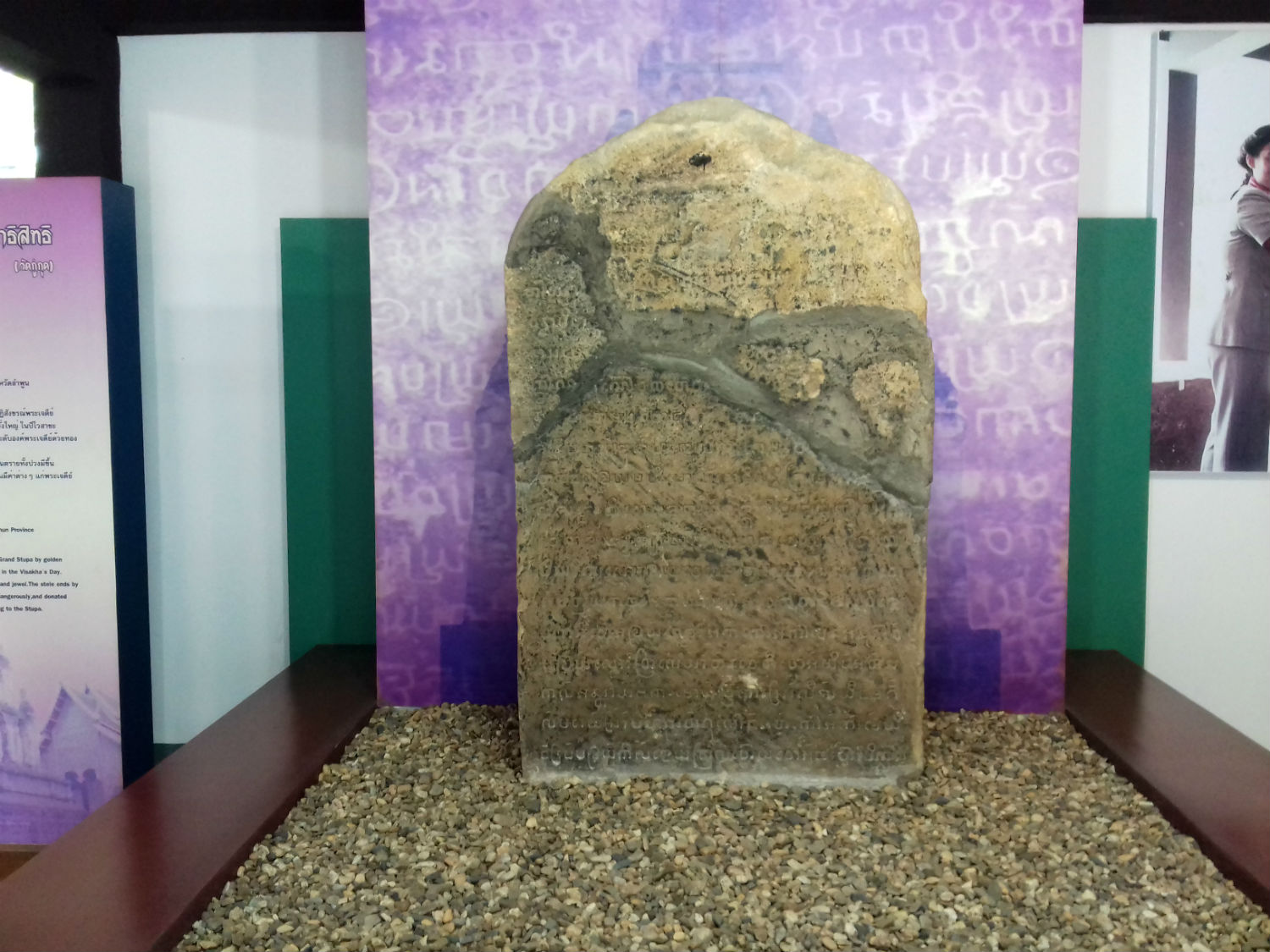
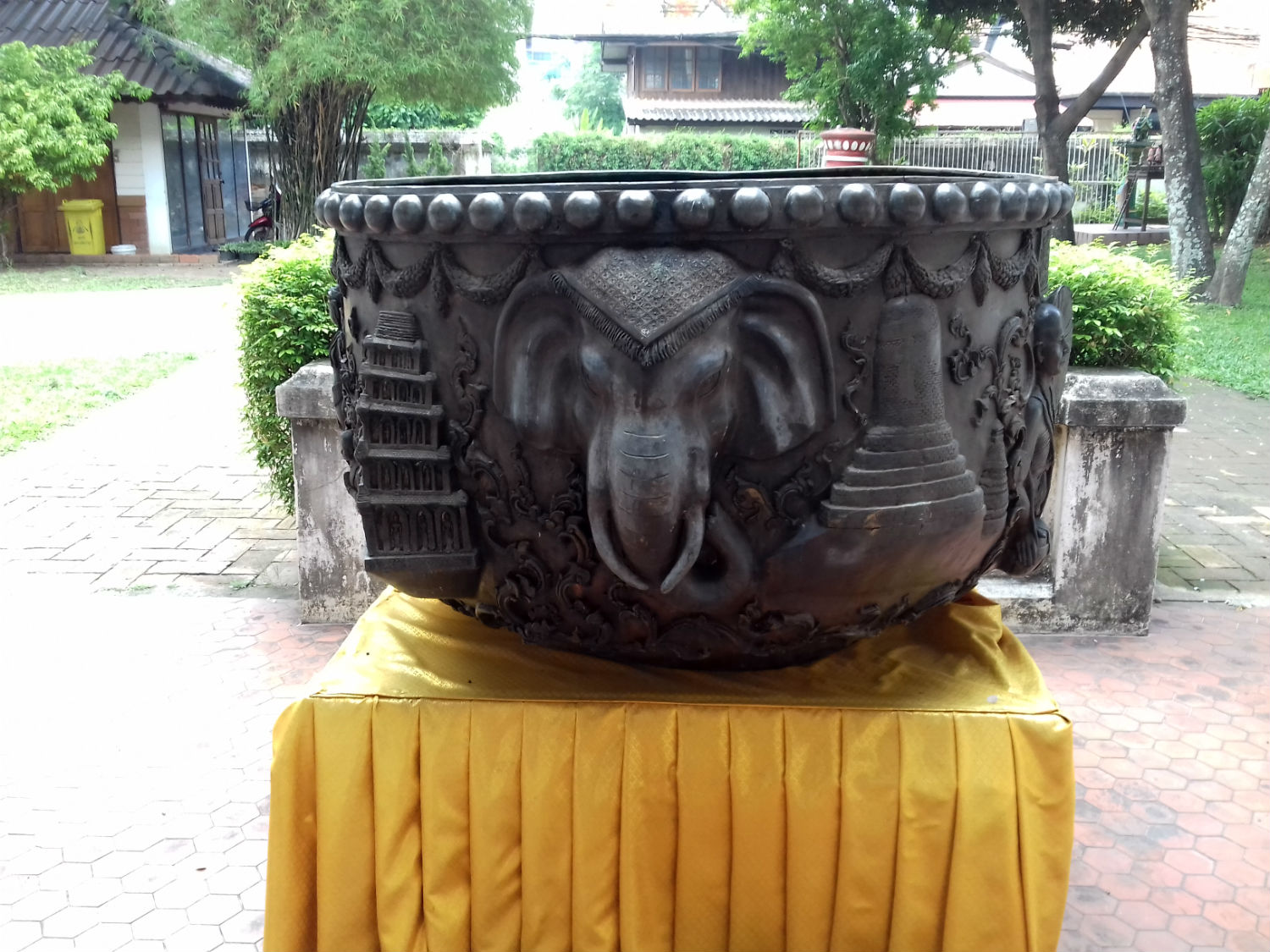
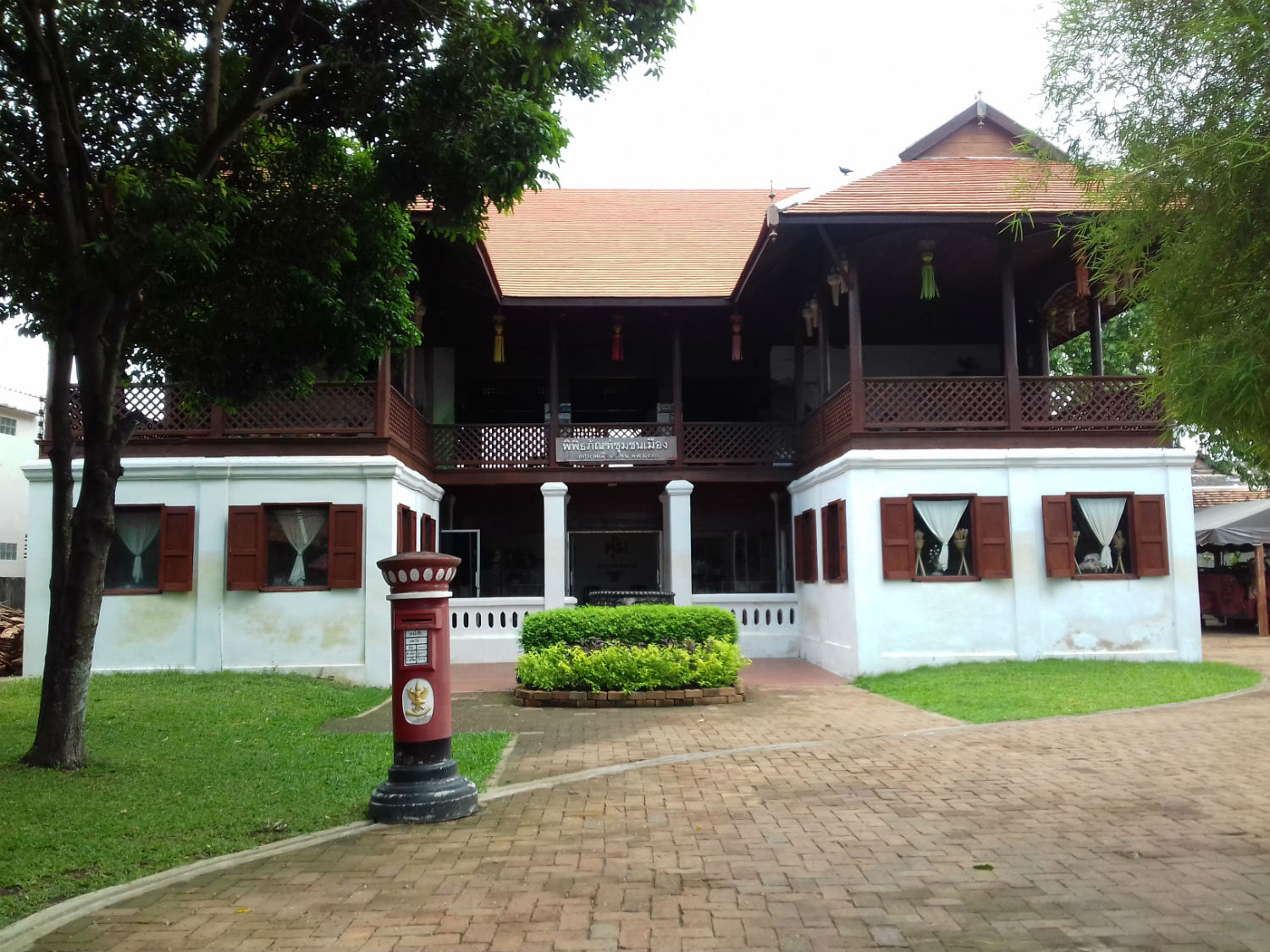 Hariphunchai National Museum, Lamphun (the Sampantawong’s Palace building is at bottom right)
Hariphunchai National Museum, Lamphun (the Sampantawong’s Palace building is at bottom right)
Sampantawong’s Palace........The Sampantawong’s Palace is next to the Hariphunchai National Museum. It was the residence of Prince Ratchasampantawong, a prince from Chiang Mai who married Princess Songlha of Lamphun, sister of Prince Chakham Khajonsak. The palace was built in 1912 when Prince Chakham Khajonsak was ruler of Lamphun. Nowadays this palace is a conservation building adopted by the Lamphun Municipality as a learning centre and contemporary museum. Here they hold exhibitions and activities to expand the theme of the museum and showcase the magnificent objects donated by local citizens. The palace has three exhibition rooms, recording respectively the history of Lamphun, the history of Sampantawong’s Palace and the culture, tradition and ways of living of Lamphun people in the past.
Now in mid afternoon I’m completely drained from the heat and even consider heading back to the room but at least I’m back in the car. If I could manage just a couple more temples, I may find some breathing space to work with, then with hardly enough time to recover, I’m at the next temple.
Wat Mahawan Wanaram........Wat Mahawan Wanaram lies just outside the city wall to the west at the junction with Highway 1015. According to onsite information, this is an old temple built in 657 A.D. at the very beginning of the Hariphunchai Kingdom. It is said that Princess Chamathewi brought a Buddha image under a Naga hood or a black stone Buddha image from Lawo (Lopburi) to be enshrined in this temple. The people called it Phra Rod Luang or Phra Rod Lamphun. Later the image was used as a model for creating votive tablets which became very well-known called ‘Phra Rod Mahawan’.
The temple prospered throughout many reigns but was deserted during times of war. It was restored in 1077 A.D. after Prince Sapasit, son of Phraya Rodrad was ordained as this temple. It appears that the large Buddha image here was cast at that time. An interesting feature of this temple is the large chedi built over the top of an old one. The ubosot and viharn have also been restored.
Now in mid afternoon I’m completely drained from the heat and even consider heading back to the room but at least I’m back in the car. If I could manage just a couple more temples, I may find some breathing space to work with, then with hardly enough time to recover, I’m at the next temple.
Wat Mahawan Wanaram........Wat Mahawan Wanaram lies just outside the city wall to the west at the junction with Highway 1015. According to onsite information, this is an old temple built in 657 A.D. at the very beginning of the Hariphunchai Kingdom. It is said that Princess Chamathewi brought a Buddha image under a Naga hood or a black stone Buddha image from Lawo (Lopburi) to be enshrined in this temple. The people called it Phra Rod Luang or Phra Rod Lamphun. Later the image was used as a model for creating votive tablets which became very well-known called ‘Phra Rod Mahawan’.
The temple prospered throughout many reigns but was deserted during times of war. It was restored in 1077 A.D. after Prince Sapasit, son of Phraya Rodrad was ordained as this temple. It appears that the large Buddha image here was cast at that time. An interesting feature of this temple is the large chedi built over the top of an old one. The ubosot and viharn have also been restored.
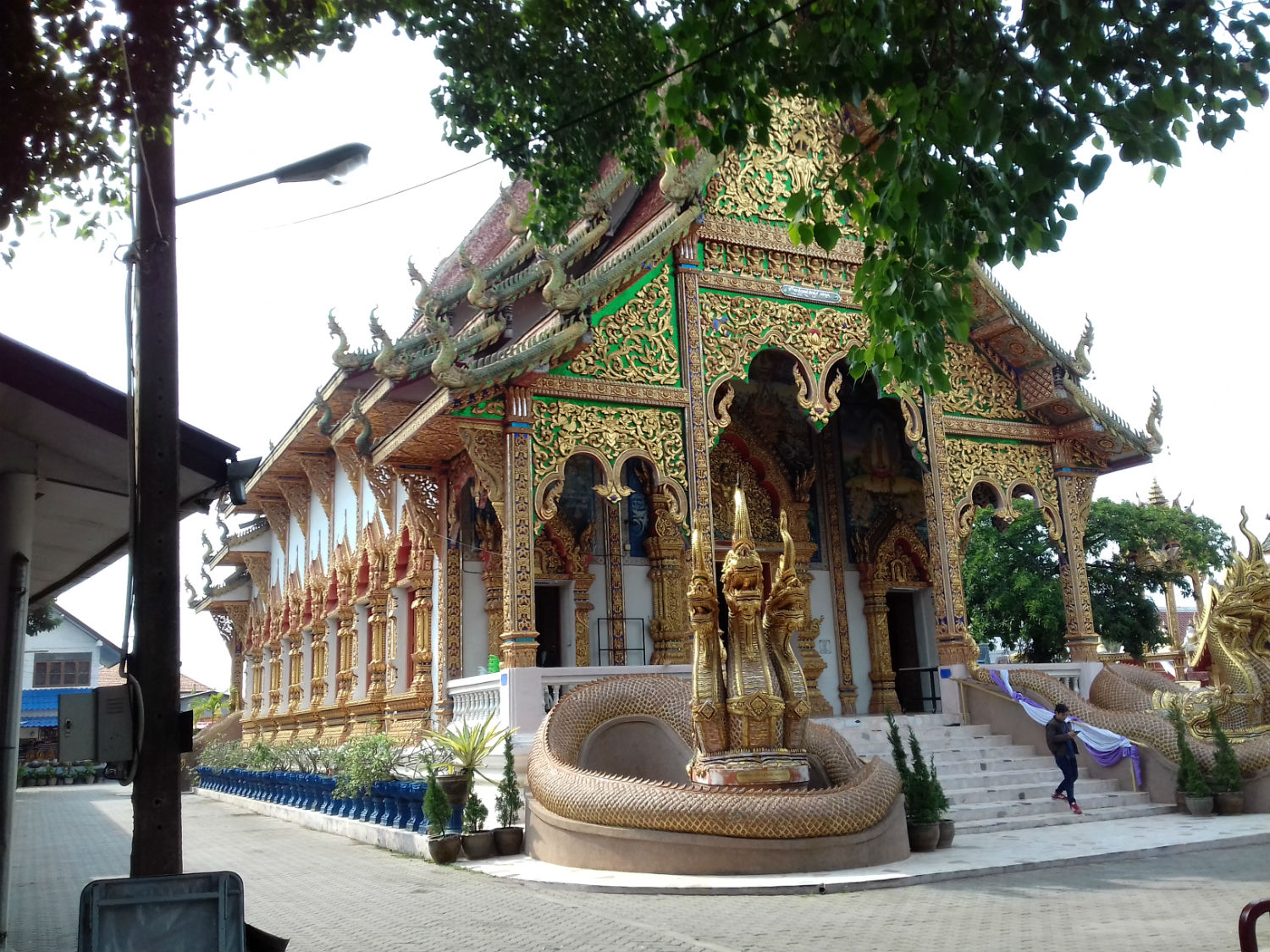
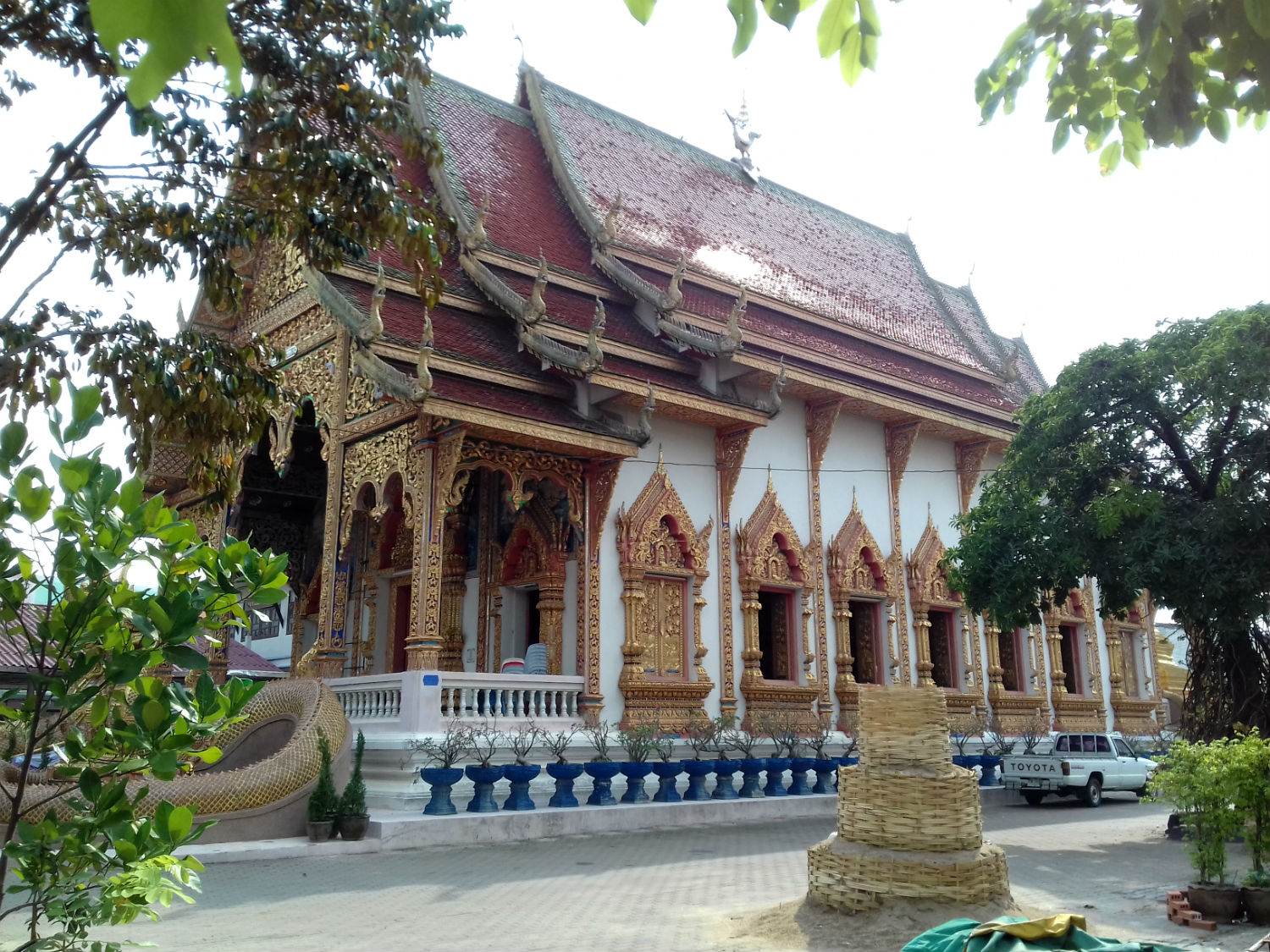
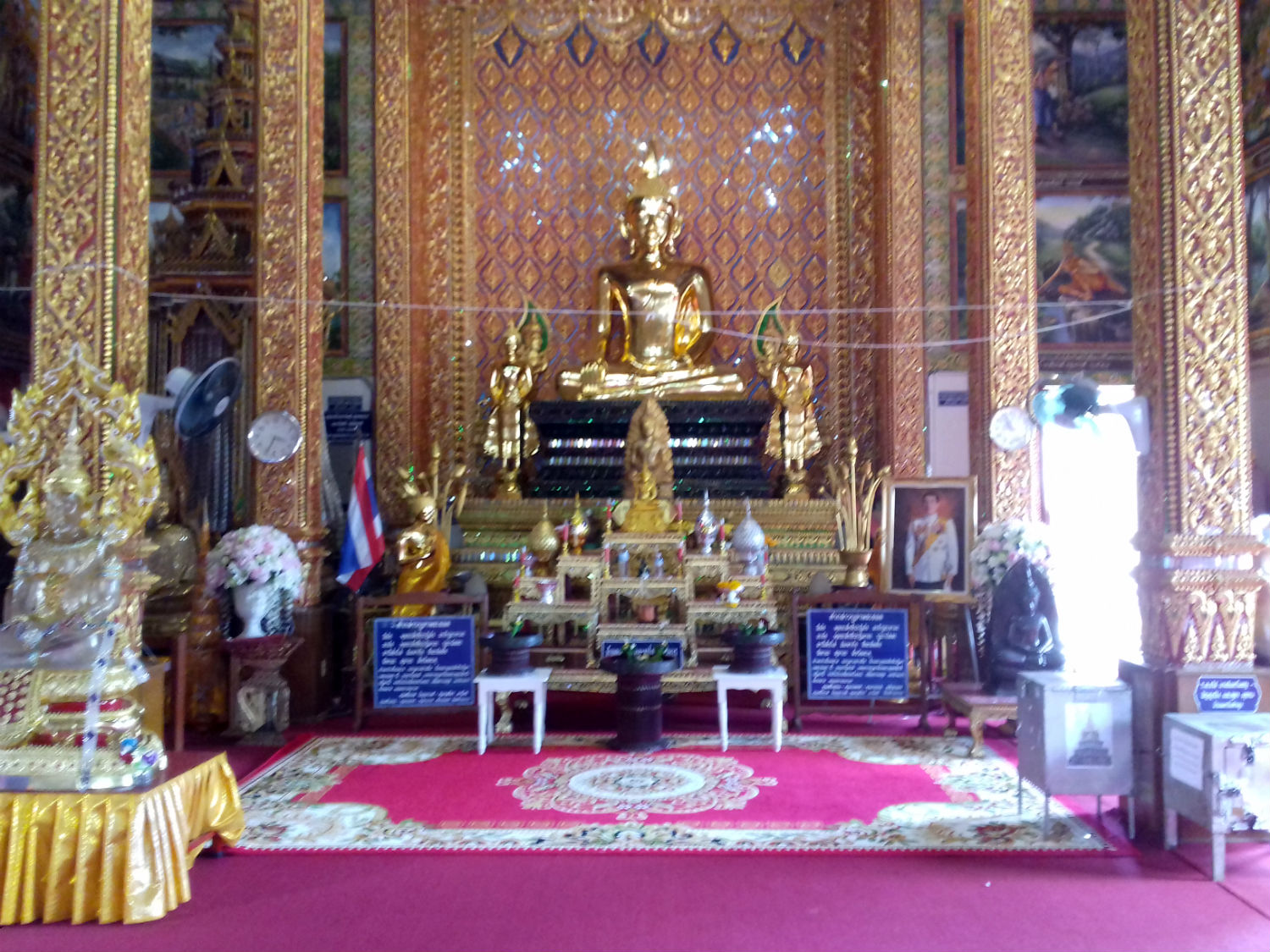
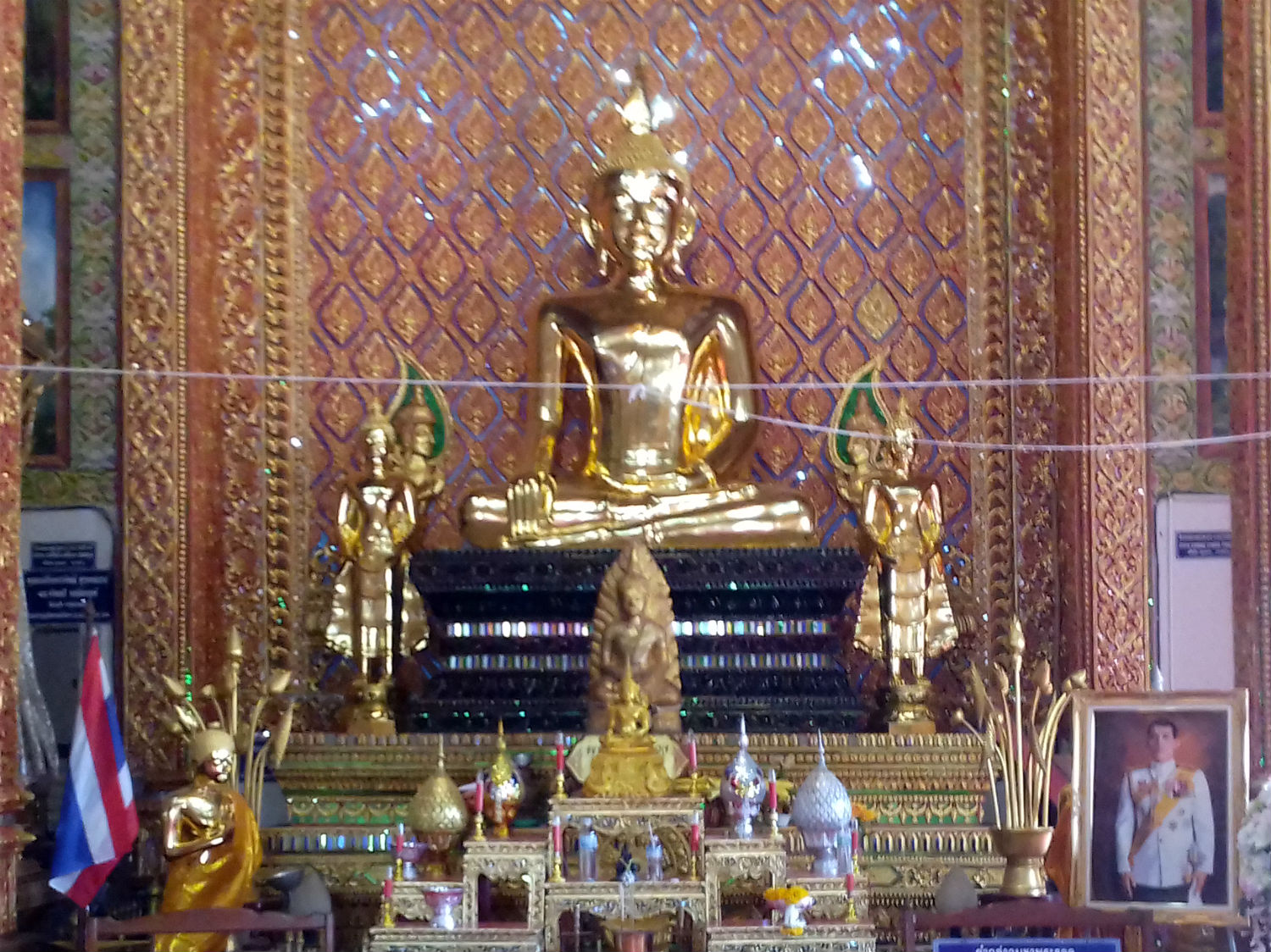
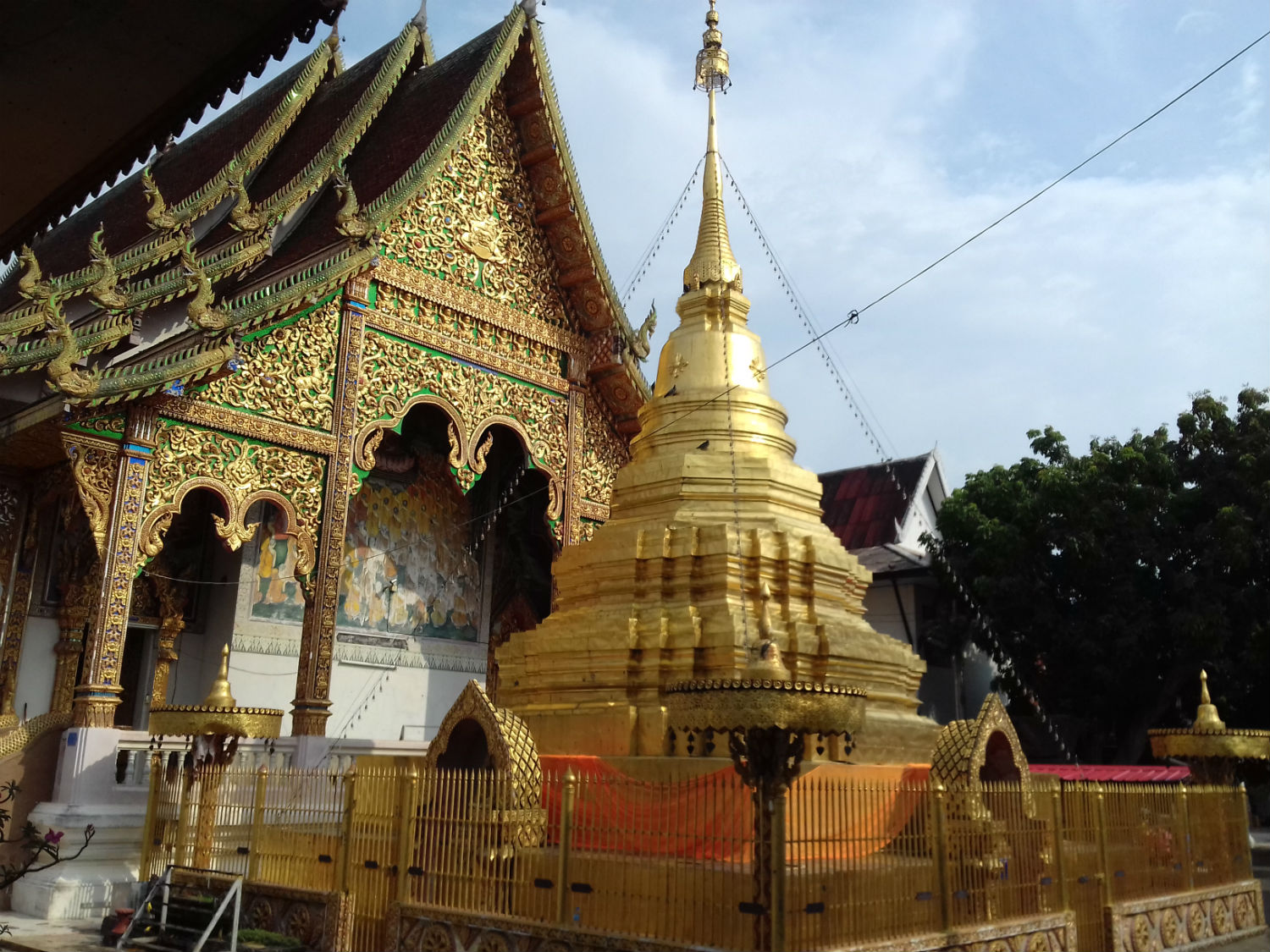
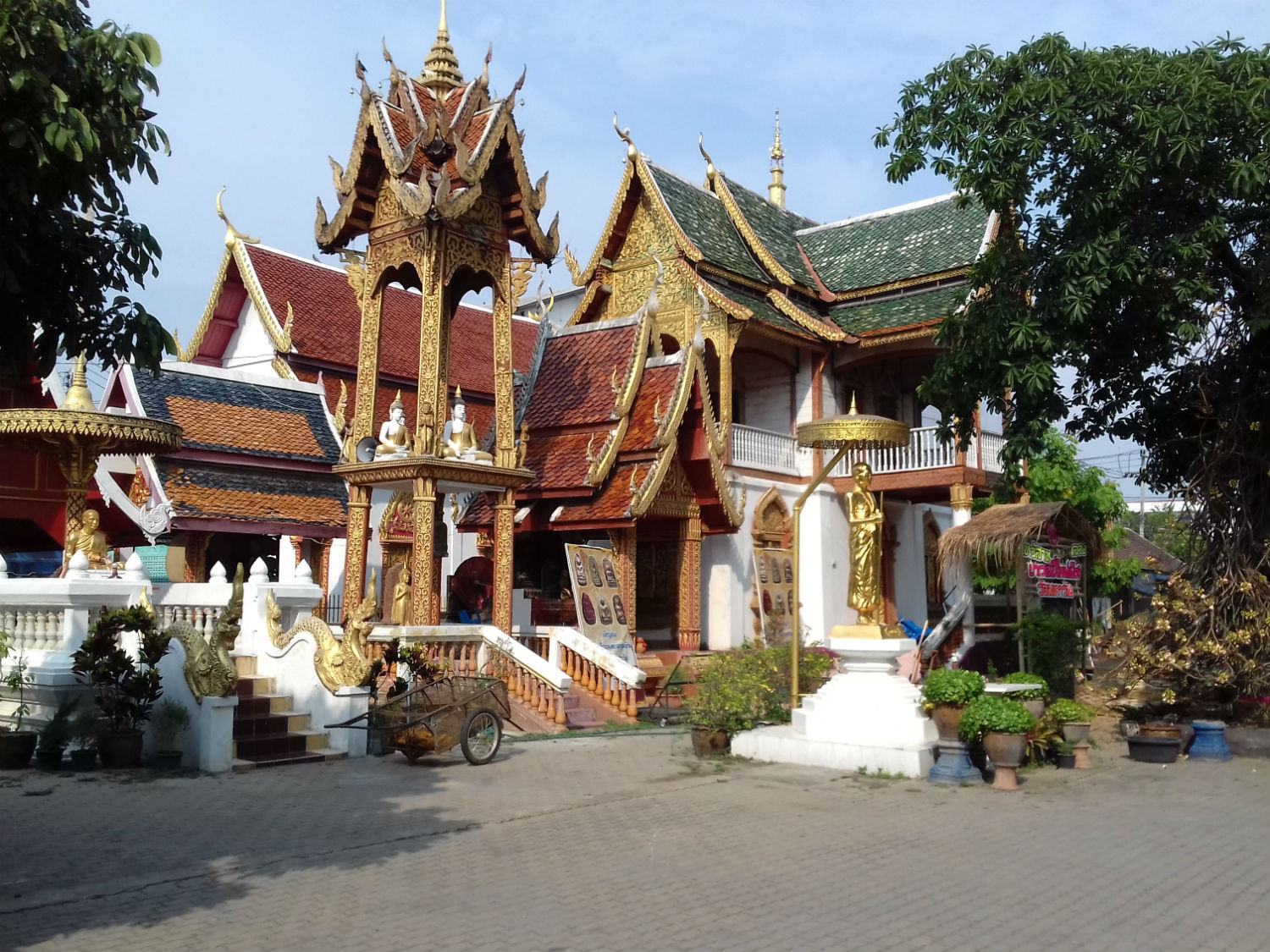 Wat Mahawan Wanaram, Lamphun
Wat Mahawan Wanaram, Lamphun
While it’s thankfully taken little time to collect necessary information about this temple, Katoon on the other hand wanders off souvenir hunting. I later realise that this is for one of the votive tablets this temple is famous for. Rather than sit around in the heat, I too wander off towards the city wall.
Mahawan Gate........The Mahawan Gate is one of two city gates still standing, the other two having to be demolished to expand the road system. However the fact that the old wall remained essentially intact is remarkable and allowed restoration to create the unique feature Lamphun is proud of today.
According to onsite information, the wall and moat date back to the foundation of the city itself, built around 660 A.D. by Wasuthep Rusri to surround the palace of Queen Chamatewi. In 1519 A.D. it was improved by Phra Muangkeaw.
With Katoon satisfied with her souvenir hunting we proceed to the next temple a couple of kilometres further along the 1015.
Mahawan Gate........The Mahawan Gate is one of two city gates still standing, the other two having to be demolished to expand the road system. However the fact that the old wall remained essentially intact is remarkable and allowed restoration to create the unique feature Lamphun is proud of today.
According to onsite information, the wall and moat date back to the foundation of the city itself, built around 660 A.D. by Wasuthep Rusri to surround the palace of Queen Chamatewi. In 1519 A.D. it was improved by Phra Muangkeaw.
With Katoon satisfied with her souvenir hunting we proceed to the next temple a couple of kilometres further along the 1015.
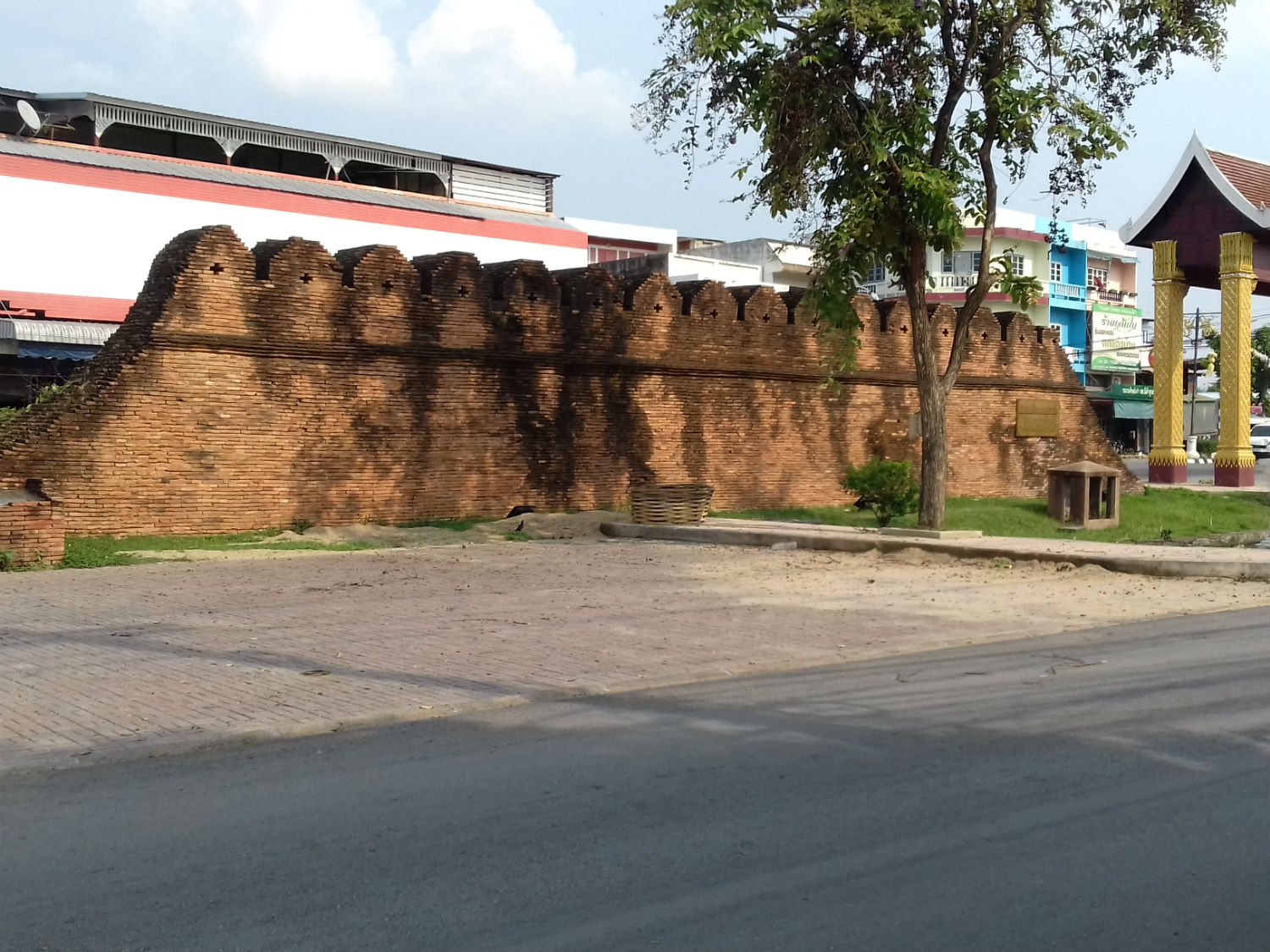
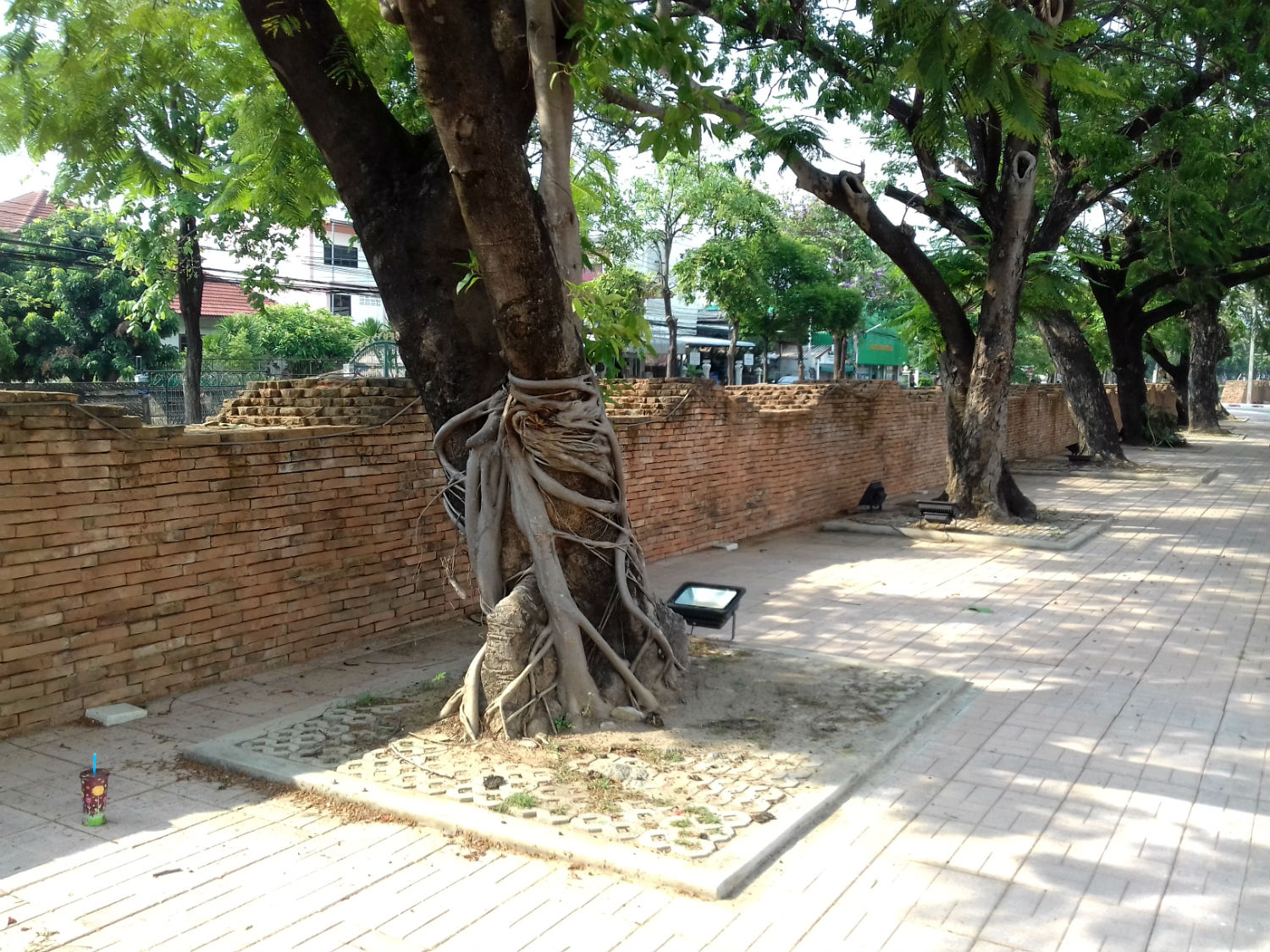
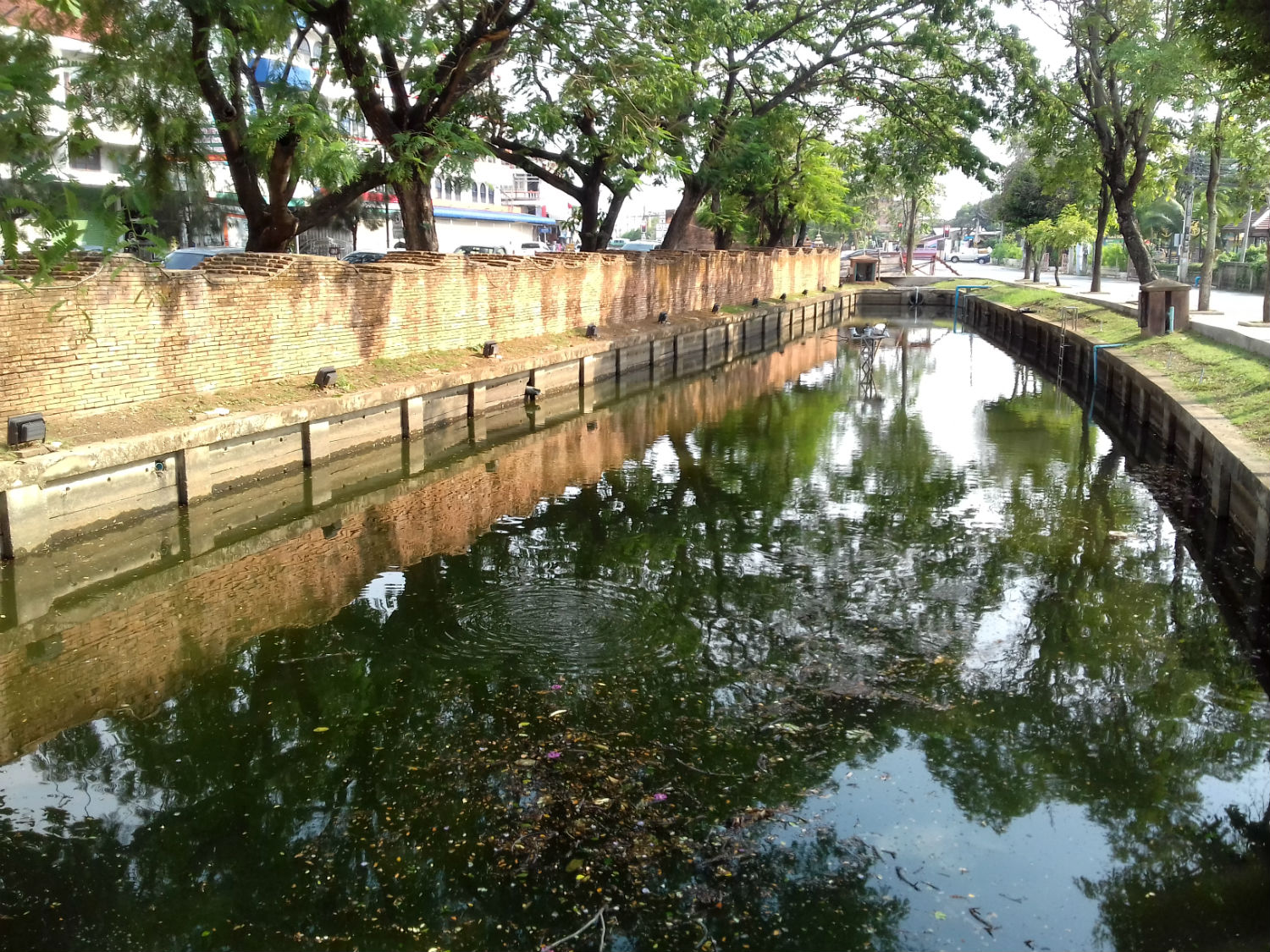 Mahawan Gate, Lamphun
Mahawan Gate, Lamphun
Wat Chamatewi........Constructed in 749 A.D , this temple also dates back to the early Kingdom of Hariphunchai founded by Queen Chamatewi. Within the grounds of the temple lies a beautiful temple known as ‘Suwan Chedi Jungkote’. The architectural style of the period has produced a square chedi resembling a pyramid known as Chedi Kukut (Ku Kuthi). Each tier of the chedi is decorated with ancient Buddha images and enshrined inside are the ashes of the Queen. Another theory is that it was formerly the Mahaphol Chedi built by King Athitayarat in the Mahaphol field as a memorial to his victory in the battle with the Lawo Kingdom around the end of the 12th Century A.D. The chedi took its name ‘Kukut’ from the tip of the chedi that had broken off. ‘Ku Kuthi’ refers to a monk’s residence so it could refer to the arched bays around the chedi where Buddha images were placed. It’s believed that the present form is the result of renovation in the 13th Century carried out by King Sawathisit according to Wat Ku Kut stone inscription No 2.
Despite the conditions, I now feel I’ve made some progress and with intermittent cloud cover I feel the worst is over. There’s still time to add another site visit and we feel we can leave the city heading in the same direction as yesterday into Pa Sang District. Fortunately I’ve now located an elusive temple that GPS failed to locate then.
Despite the conditions, I now feel I’ve made some progress and with intermittent cloud cover I feel the worst is over. There’s still time to add another site visit and we feel we can leave the city heading in the same direction as yesterday into Pa Sang District. Fortunately I’ve now located an elusive temple that GPS failed to locate then.
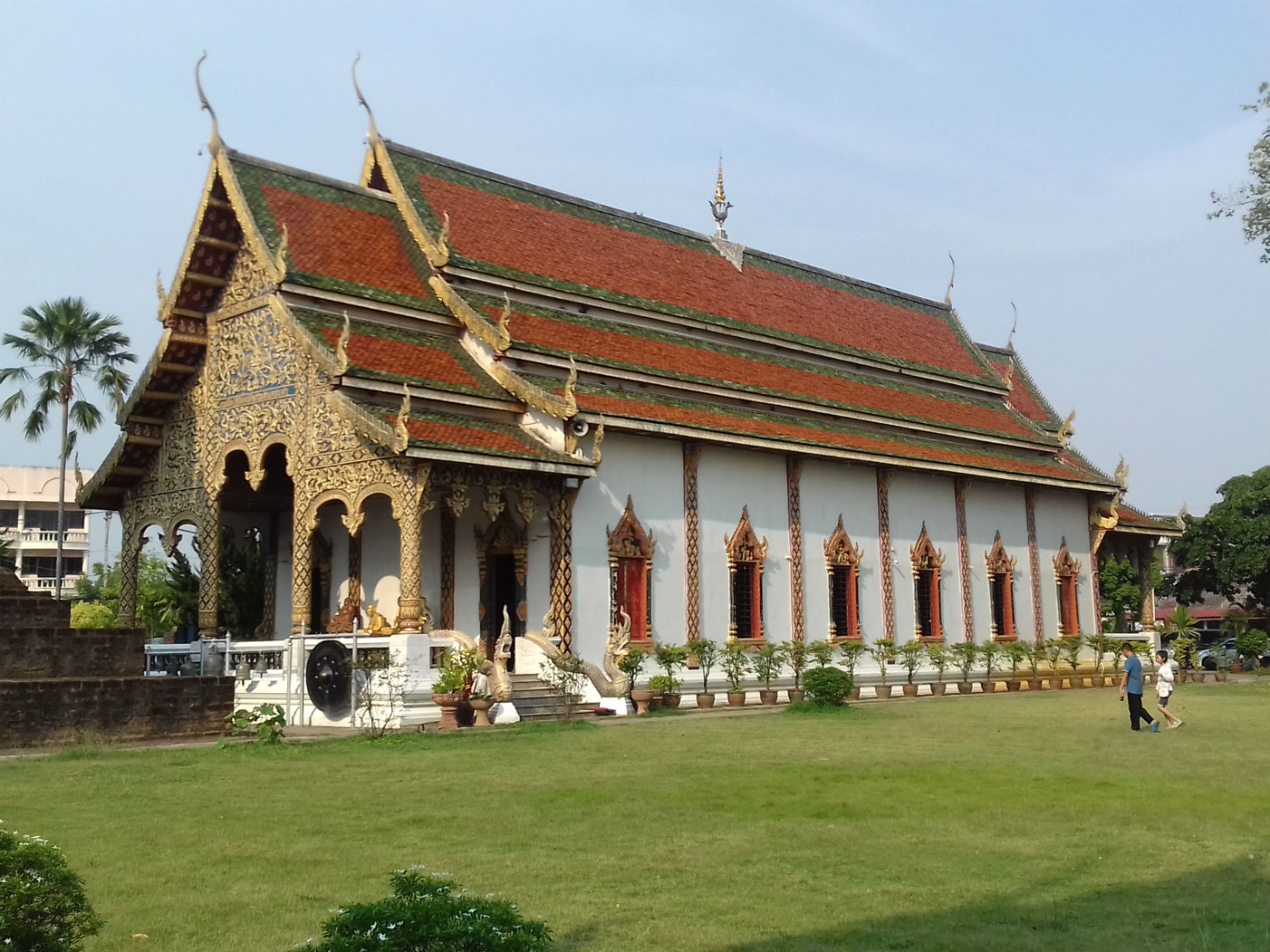
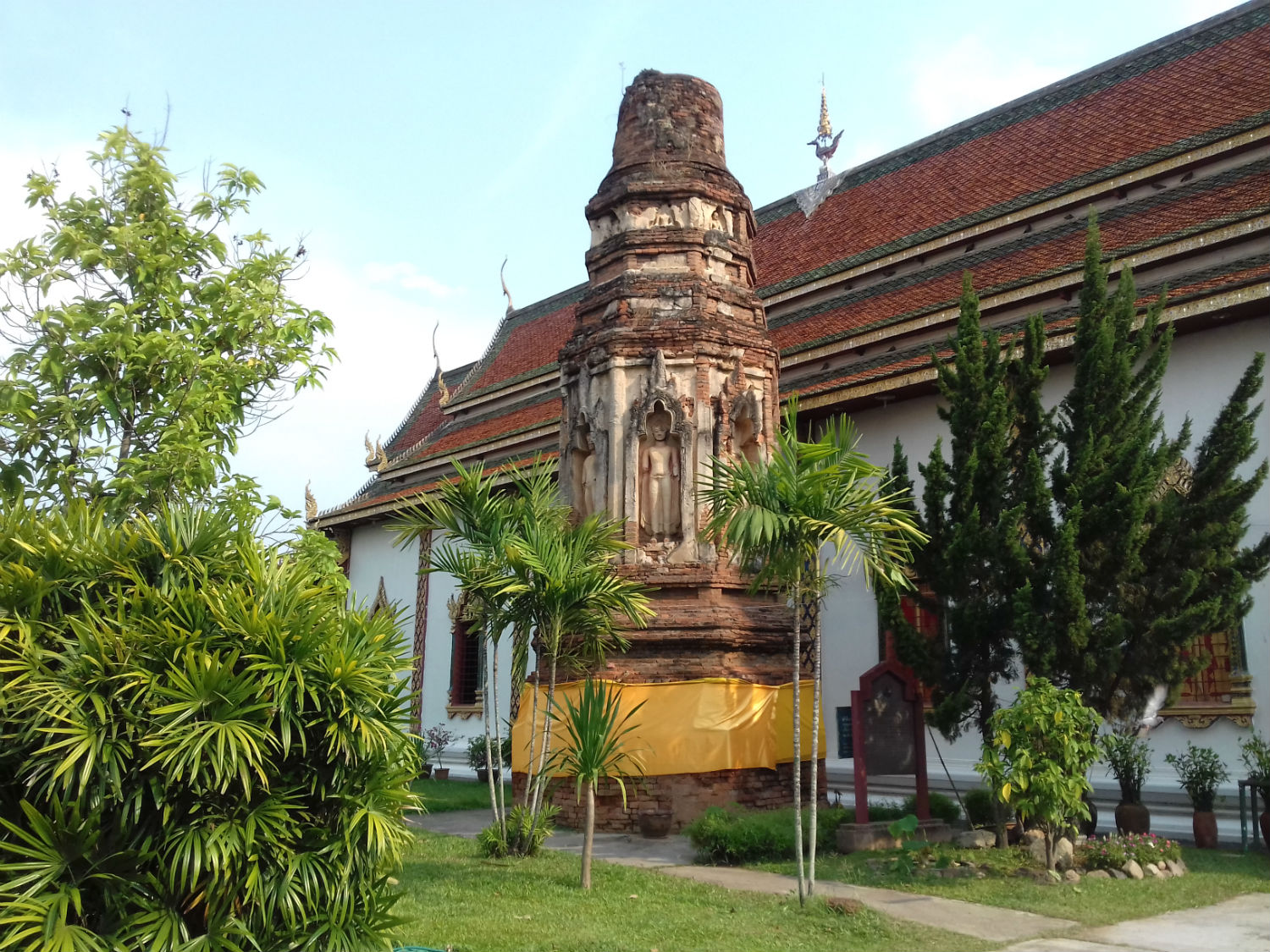
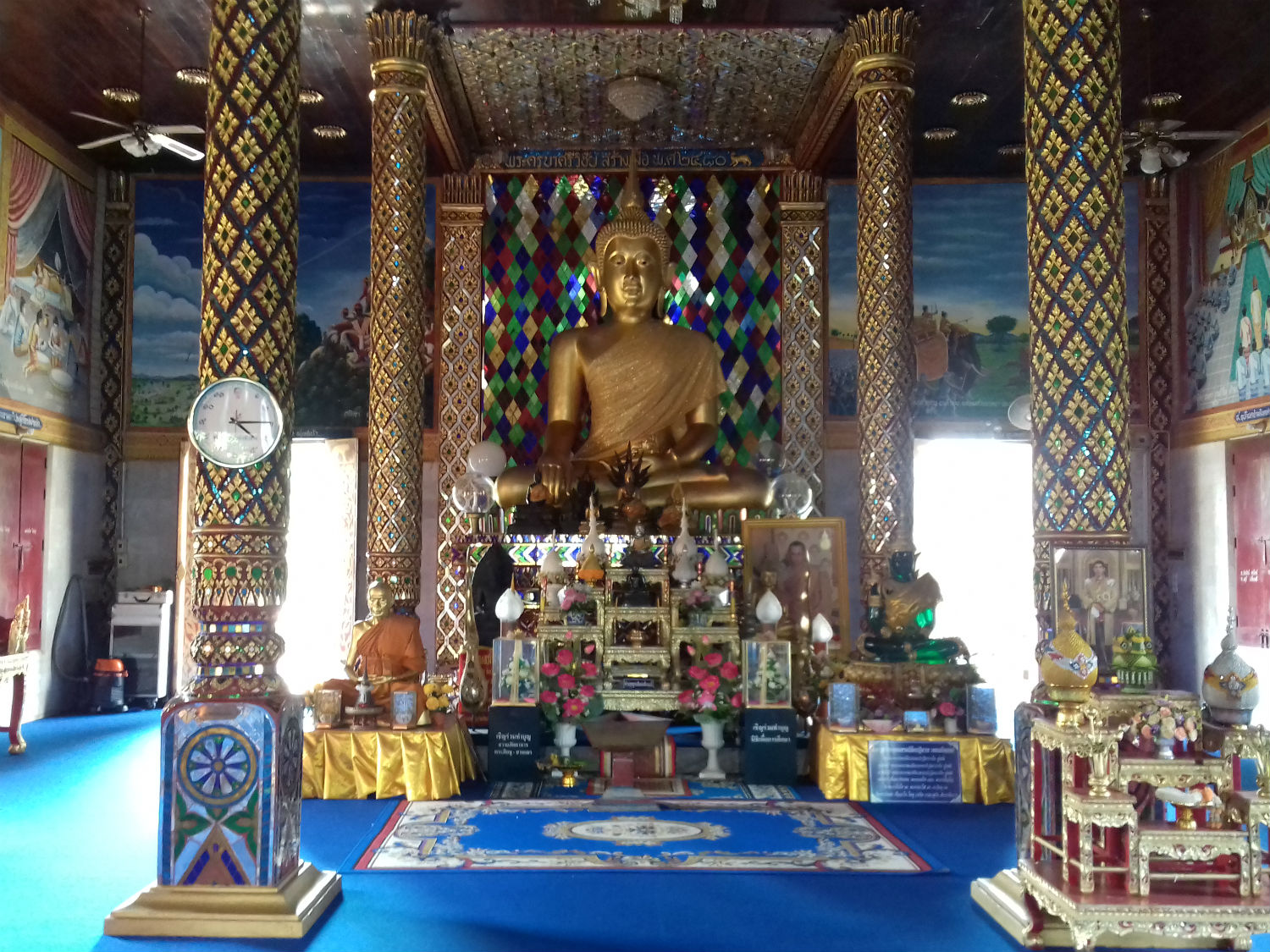 Wat Chamatewi, Lamphun
Wat Chamatewi, Lamphun
Wat Ko Klang........Wat Koh Klang is located west of Lamphun along Highway 1156 which follows the Ping River along the border with Chaing Mai province. Having seen a photograph, I’m expecting to see an ancient ruin but I wasn’t expecting to find a complete archaeological site. A number of individual ruins make up the site, each afforded an information board to help identify it within or near the compound.
The site is described as having Mon origins built by In Ta the father of Princess Chamathewi. Little more is known about it except that in lay abandoned for a long time until some renovation work was carried out in 1971 when the ruins were registered and the components identified. These consist of the following: -
1) Chedi Mai Ta – Located near the Ping River, a probable crossing point, the chedi is constructed in Lanna/Burmese style.
2) Mondrop in the Water – A chedi on a round base about 2.3 metres tall located within a pond. Excavations revealed pieces of pottery from the Lanna kilns together with over 2,000 pieces of stucco sculpture similar to those at Wat Chedi Yot in Chiang Mai built by King Tilokarat which dates it 14th/15th Century.
3) Principal Chedi – Located in the main compound, consisting of a castle style chedi on a square base on which the tower was built with niches on all four sides supporting a spire. It appears to have been built long before Hariphunchai was incorporated into the Lanna Kingdom in the 14th Century. Some renovation work seems to have been carried out in the 15th/16th Century.
4) Vihran Phra Non – Only the bases exist of two buildings only a metre apart on top of which was built a new viharn. The ruined image of the Buddha was found nearby which would have been in a reclining position, hence the name ‘Phra Non’.
5) Ubosot of Ko Klang Temple – The base is rectangular stucco and brick. In the corners there are traces of decorative stucco posts suggesting the ubosot was made of wood except for the rear wall behind the Buddha image which was in brick. Boundary stones were found in eight positions around the base suggesting the boundary was changed probably around the new Buddhist era 15th Century.
6) Mondrop Chedi – This chedi comprises two square bases one on top of and overlapping each other supporting a chedi with niches in the four sides. A semicircle of brick on the roof suggests it was the base of a bell-shaped chedi similar to the one at Wat Maha Photharam in Chiang Mai. This would date it as 15th Century.
Today there are monks in residence after the Department of Buddhism built a new temple on site in 1978. With this welcome addition to my site visits today, we can head back to Lamphun, collecting some provisions on the way. Now at around 6pm there’s just one more thing I could try.
The site is described as having Mon origins built by In Ta the father of Princess Chamathewi. Little more is known about it except that in lay abandoned for a long time until some renovation work was carried out in 1971 when the ruins were registered and the components identified. These consist of the following: -
1) Chedi Mai Ta – Located near the Ping River, a probable crossing point, the chedi is constructed in Lanna/Burmese style.
2) Mondrop in the Water – A chedi on a round base about 2.3 metres tall located within a pond. Excavations revealed pieces of pottery from the Lanna kilns together with over 2,000 pieces of stucco sculpture similar to those at Wat Chedi Yot in Chiang Mai built by King Tilokarat which dates it 14th/15th Century.
3) Principal Chedi – Located in the main compound, consisting of a castle style chedi on a square base on which the tower was built with niches on all four sides supporting a spire. It appears to have been built long before Hariphunchai was incorporated into the Lanna Kingdom in the 14th Century. Some renovation work seems to have been carried out in the 15th/16th Century.
4) Vihran Phra Non – Only the bases exist of two buildings only a metre apart on top of which was built a new viharn. The ruined image of the Buddha was found nearby which would have been in a reclining position, hence the name ‘Phra Non’.
5) Ubosot of Ko Klang Temple – The base is rectangular stucco and brick. In the corners there are traces of decorative stucco posts suggesting the ubosot was made of wood except for the rear wall behind the Buddha image which was in brick. Boundary stones were found in eight positions around the base suggesting the boundary was changed probably around the new Buddhist era 15th Century.
6) Mondrop Chedi – This chedi comprises two square bases one on top of and overlapping each other supporting a chedi with niches in the four sides. A semicircle of brick on the roof suggests it was the base of a bell-shaped chedi similar to the one at Wat Maha Photharam in Chiang Mai. This would date it as 15th Century.
Today there are monks in residence after the Department of Buddhism built a new temple on site in 1978. With this welcome addition to my site visits today, we can head back to Lamphun, collecting some provisions on the way. Now at around 6pm there’s just one more thing I could try.
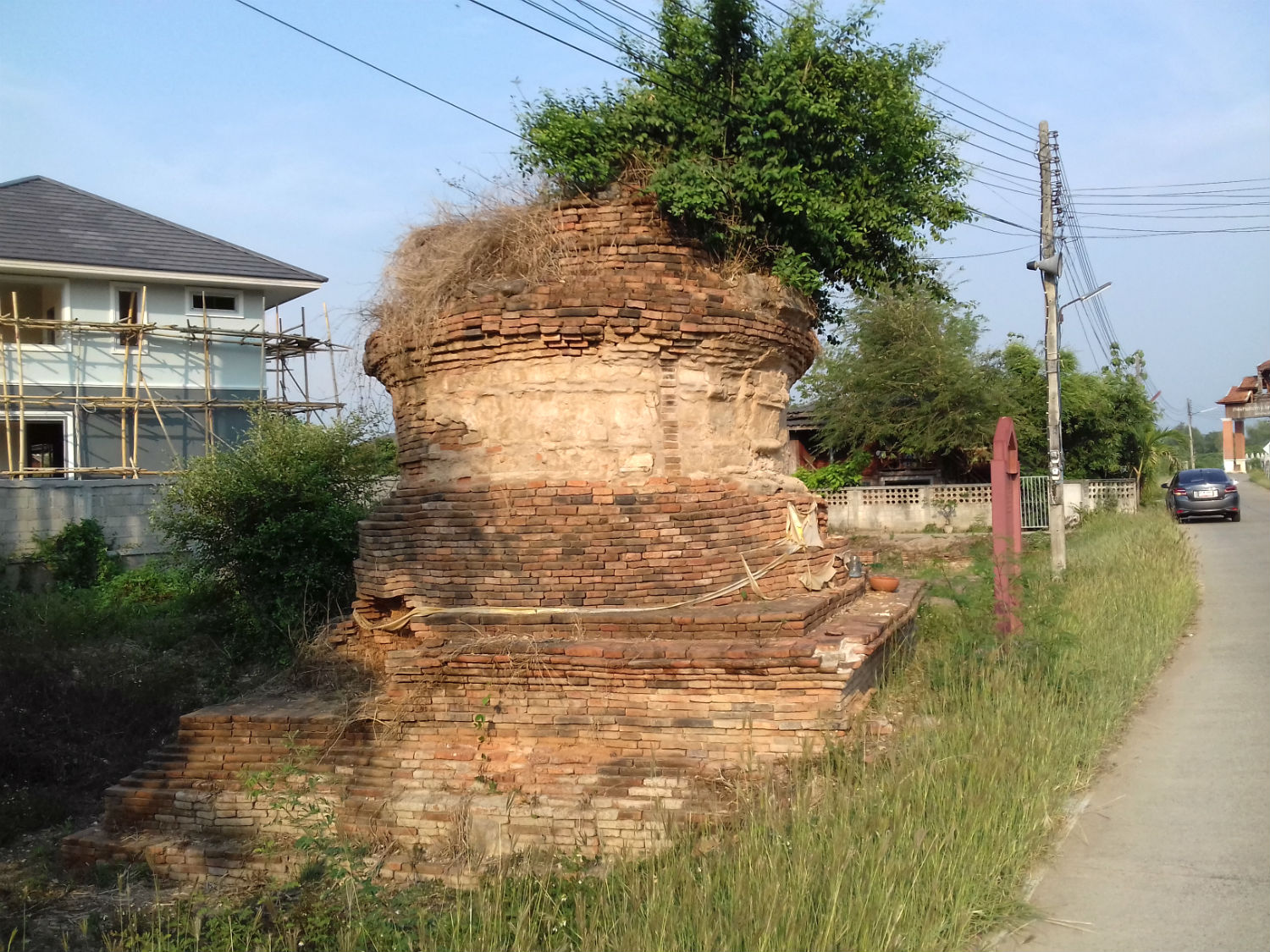
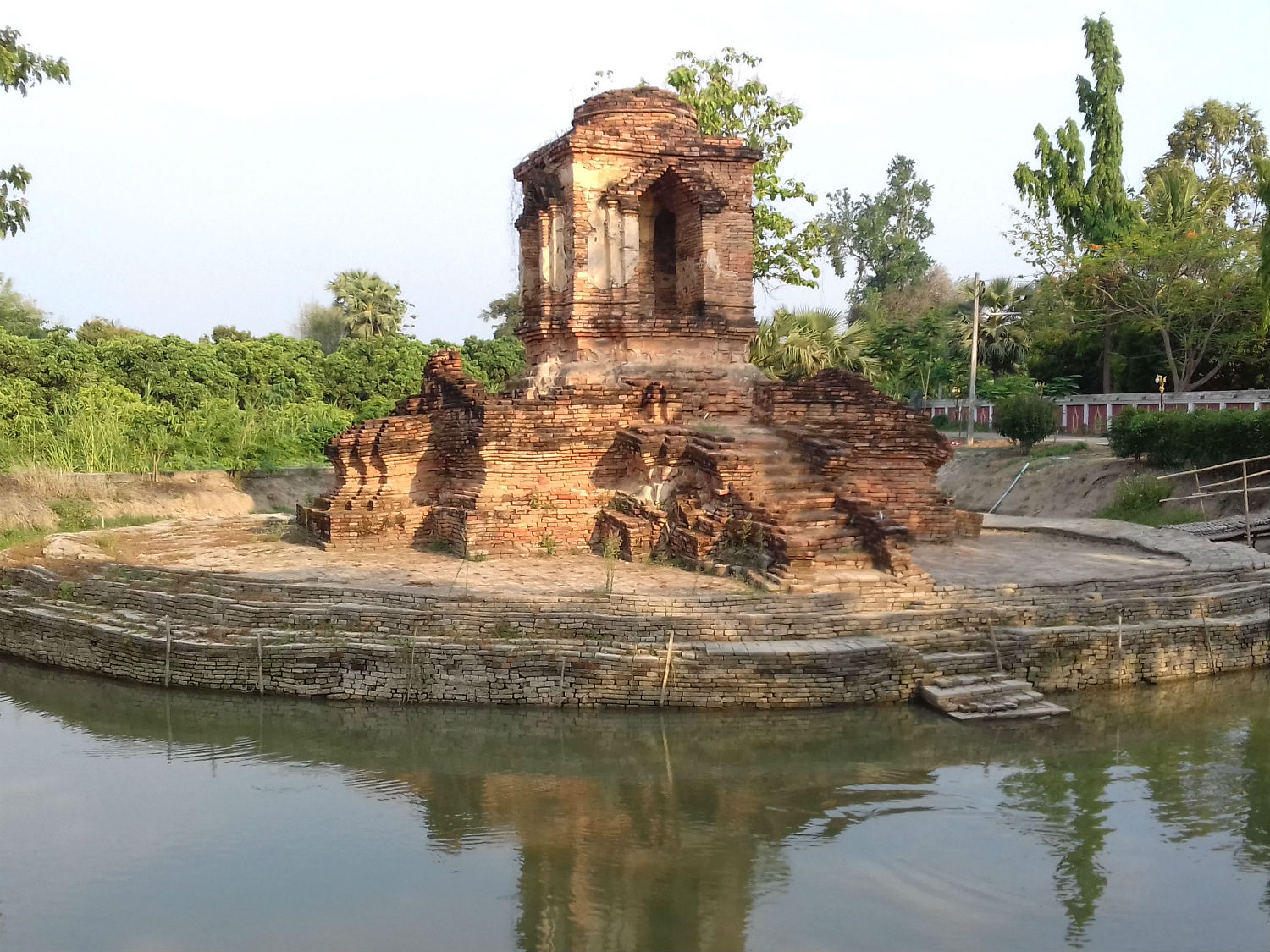
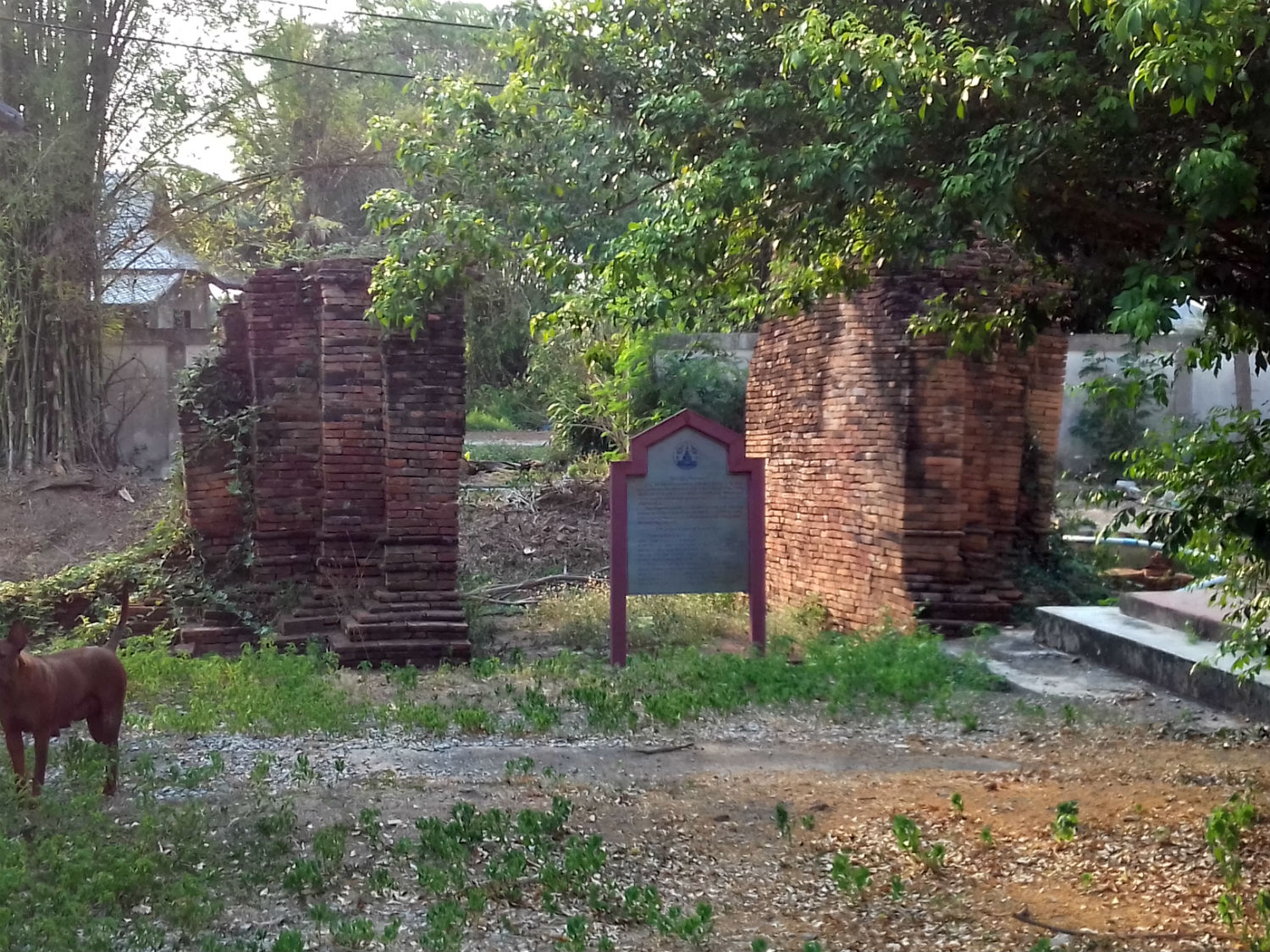
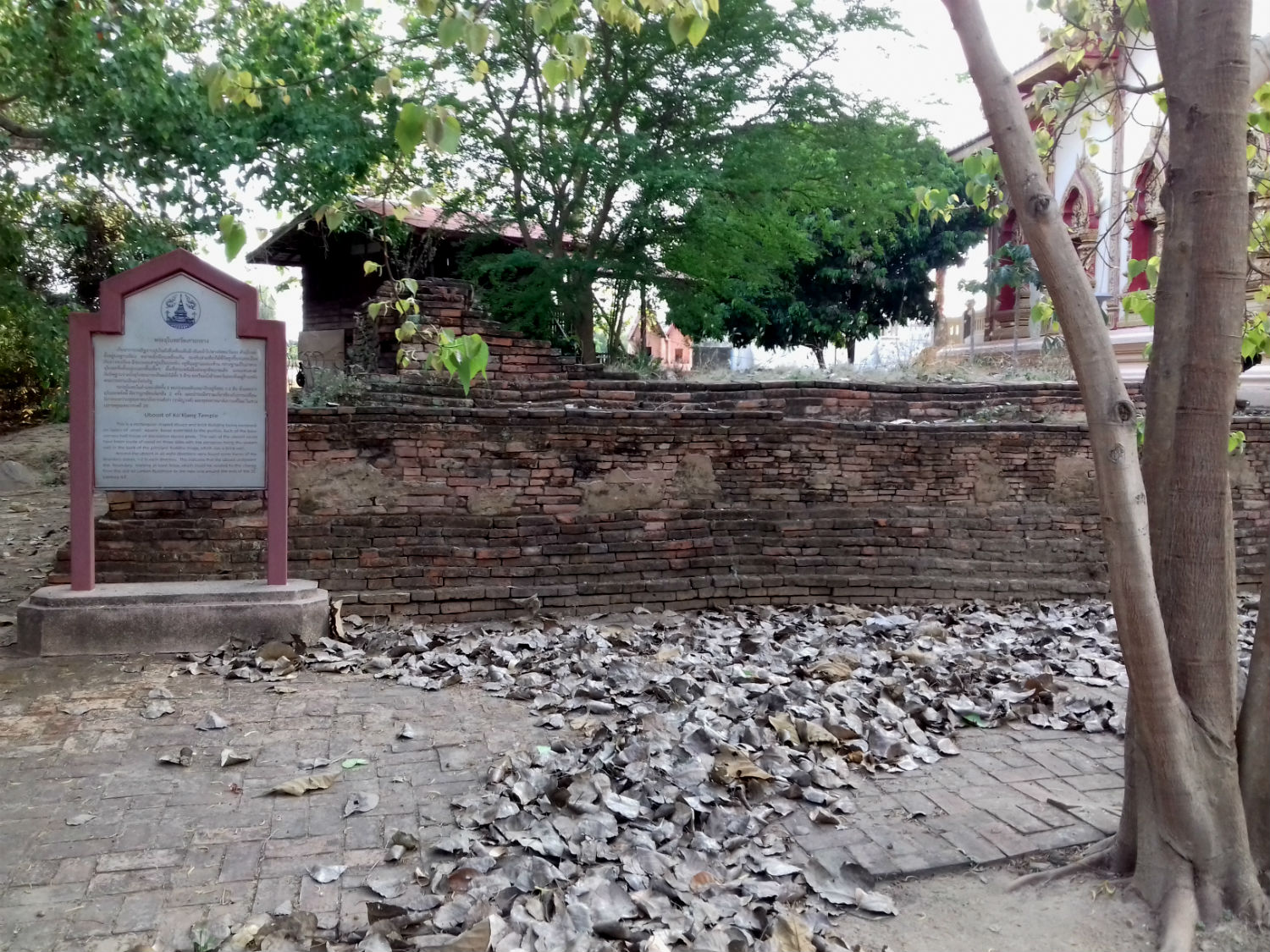
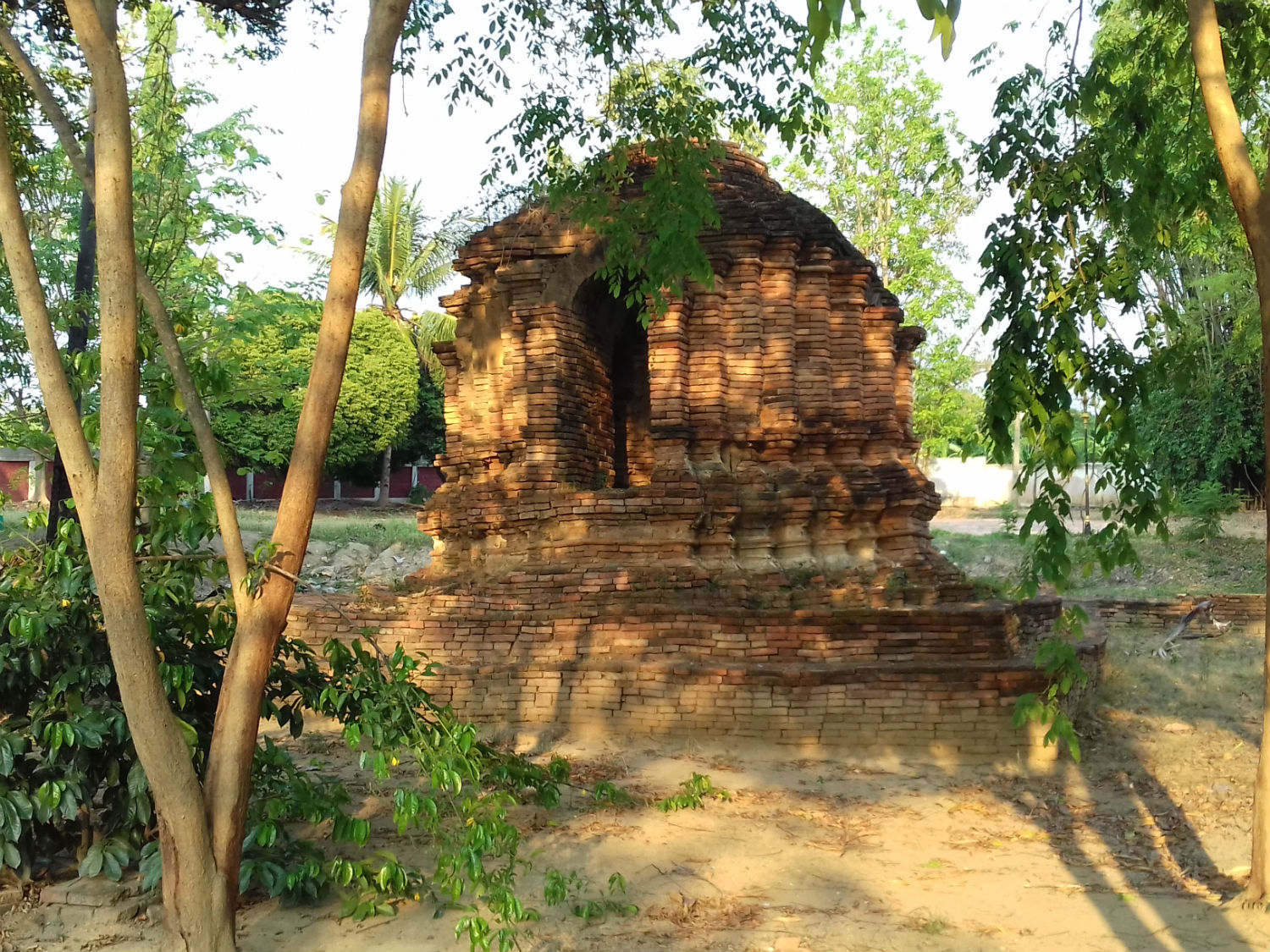
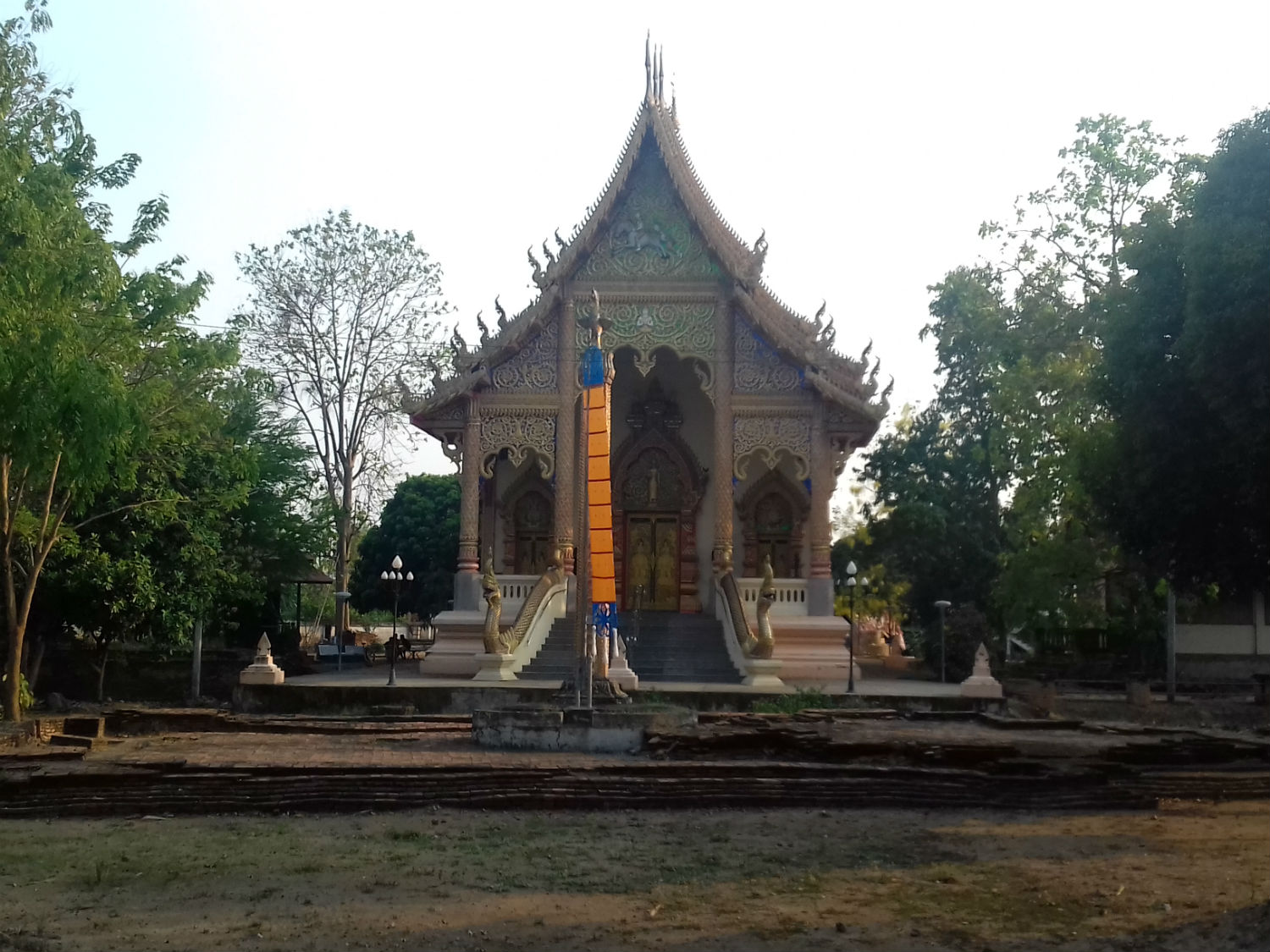 Wat Ko Klang, Pa Sang District, Lamphun
Wat Ko Klang, Pa Sang District, Lamphun Success........Arriving back at Lamphun Railway Station I’m in time to record the arrival of the 18.00 service from Chiang Mai to Bangkok, a key overnight service that won’t arrive in the capital until dawn. Importantly I can confirm that the train departs from Chiang Mai with two locomotives for the ascent to Doi Khun Tan railway station. It’s a good ending to another hard day on tour.
Back at Phaya Inn, Katoon orders food from a local restaurant for delivery. In the comfort of the room eating Tom Kha Gai (a chicken curry), bpla taptin (fried river fish) and fried vegitables it’s just magical and so is the price. Now as this tour is entering a third week and its final phase, I have an important decision to make tomorrow. I need to get as much work done as I can now this evening. Next Page.
Back at Phaya Inn, Katoon orders food from a local restaurant for delivery. In the comfort of the room eating Tom Kha Gai (a chicken curry), bpla taptin (fried river fish) and fried vegitables it’s just magical and so is the price. Now as this tour is entering a third week and its final phase, I have an important decision to make tomorrow. I need to get as much work done as I can now this evening. Next Page.